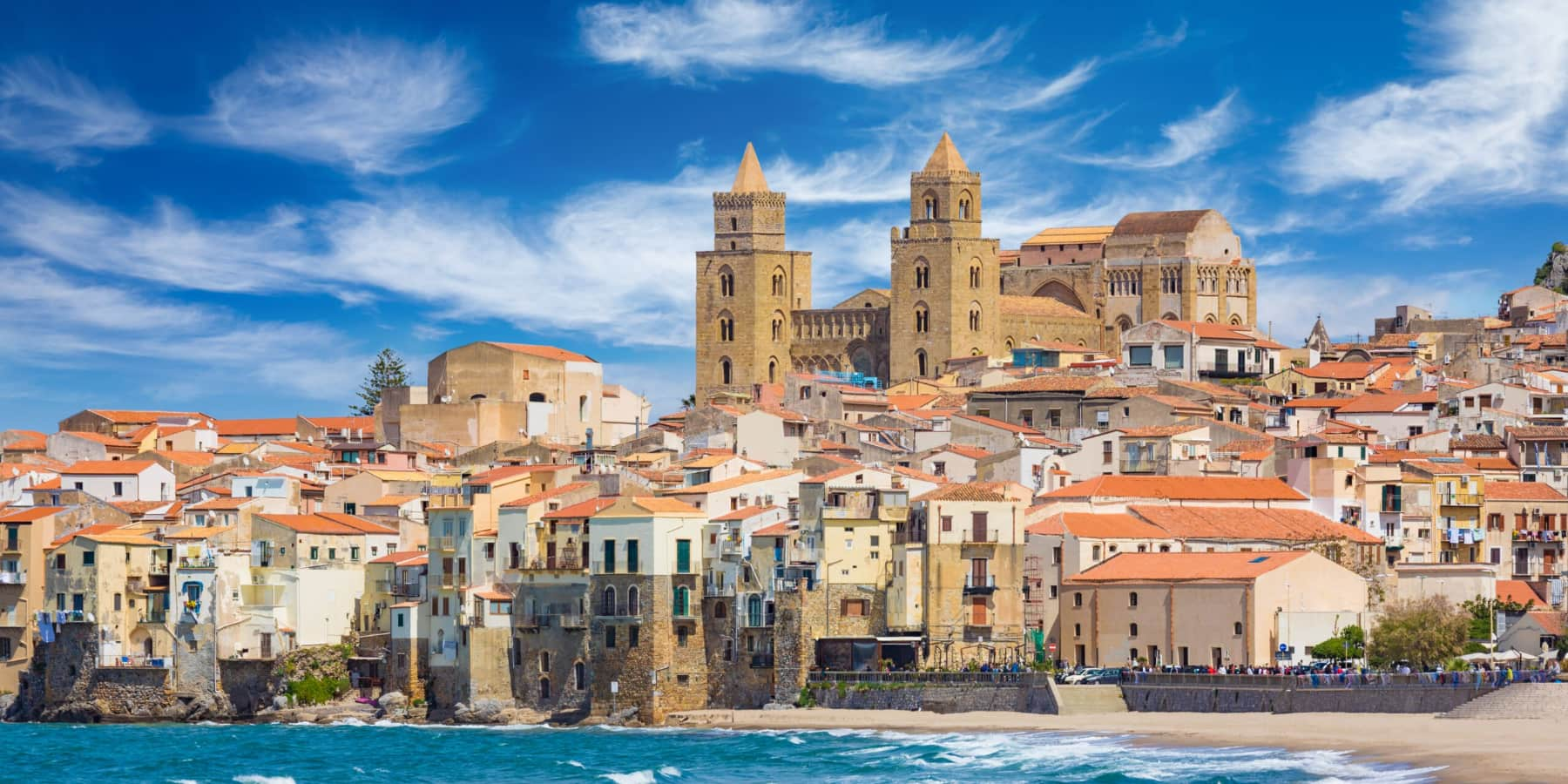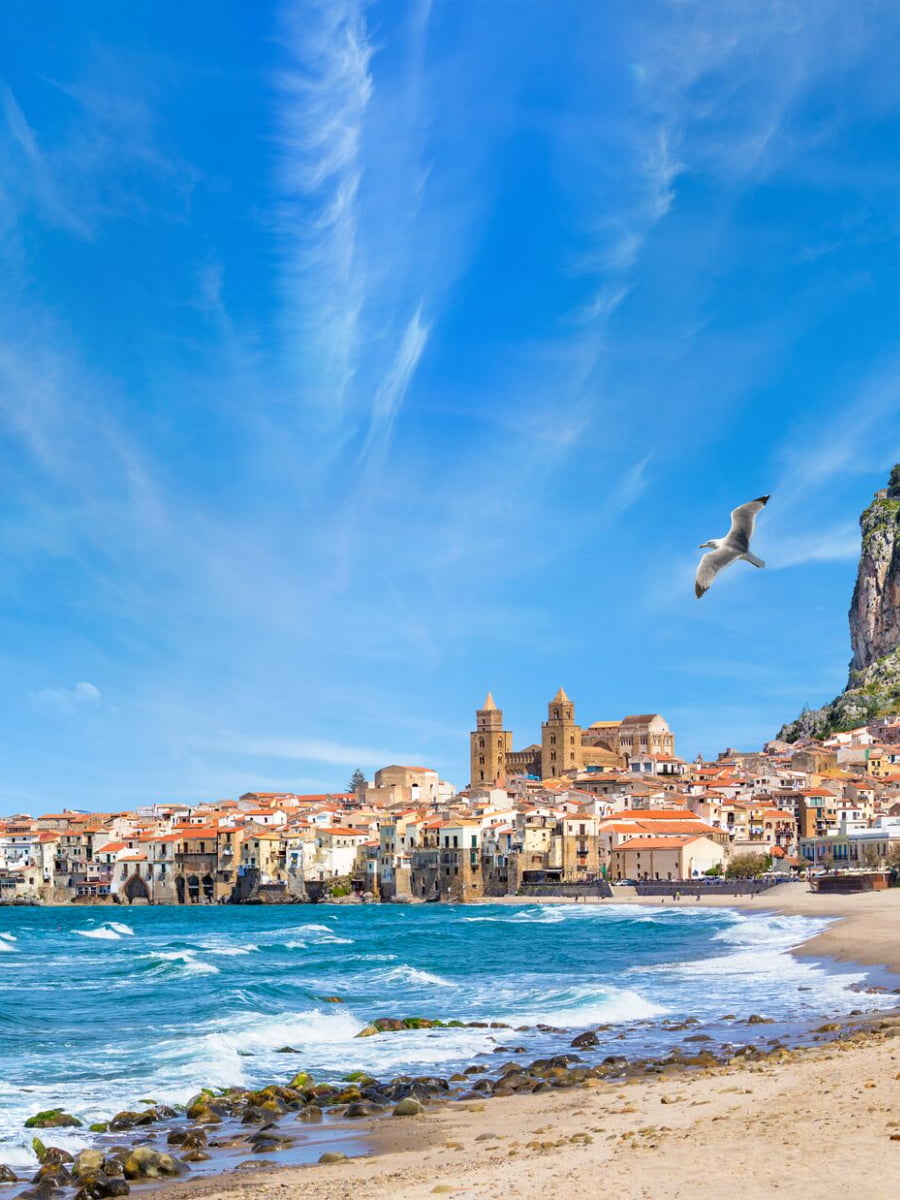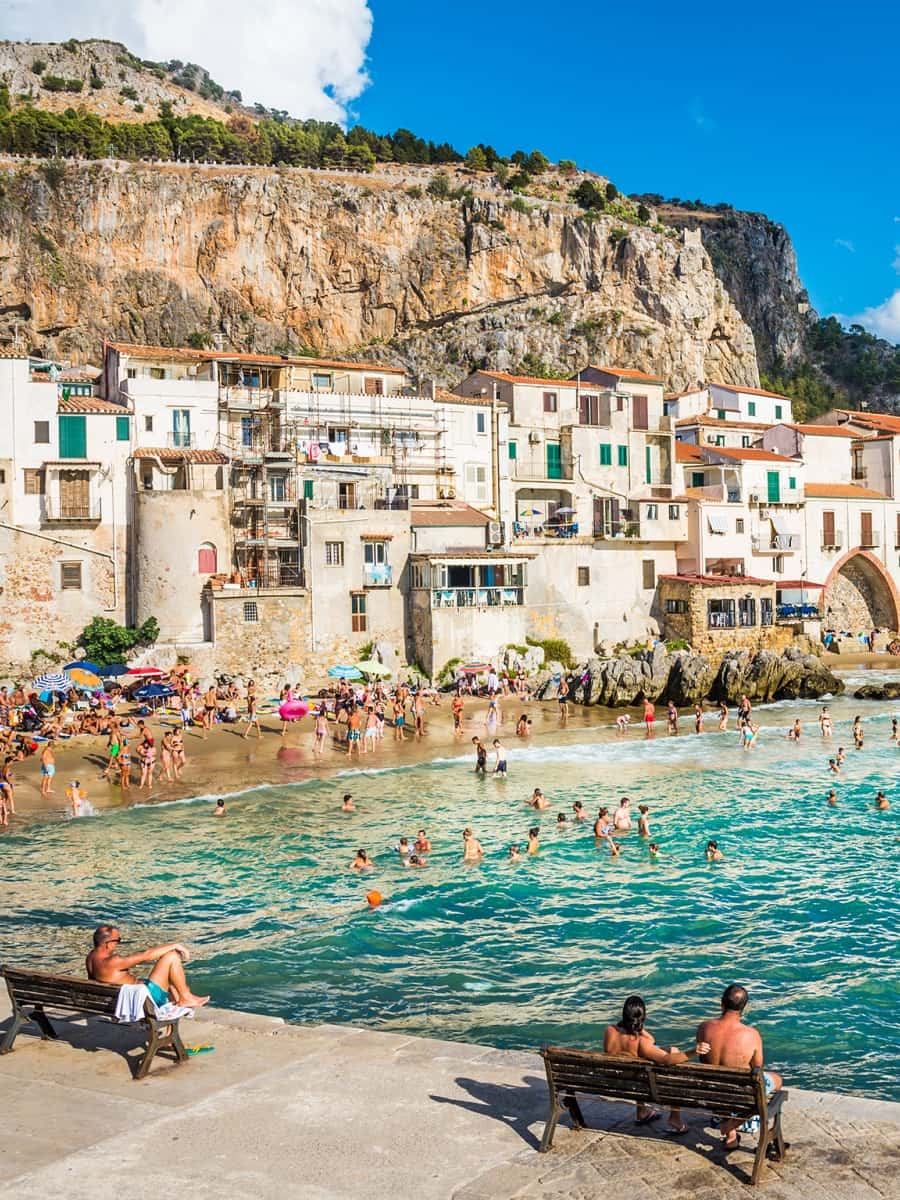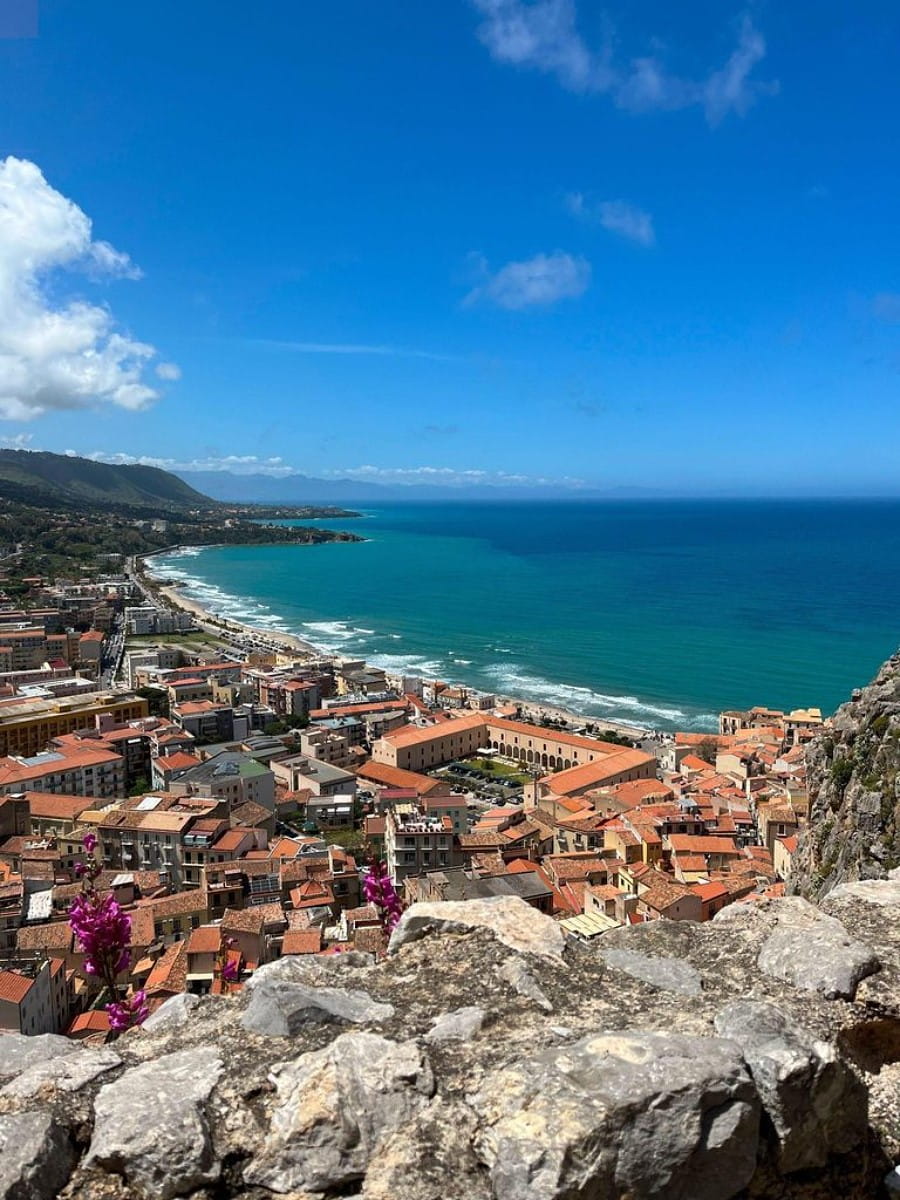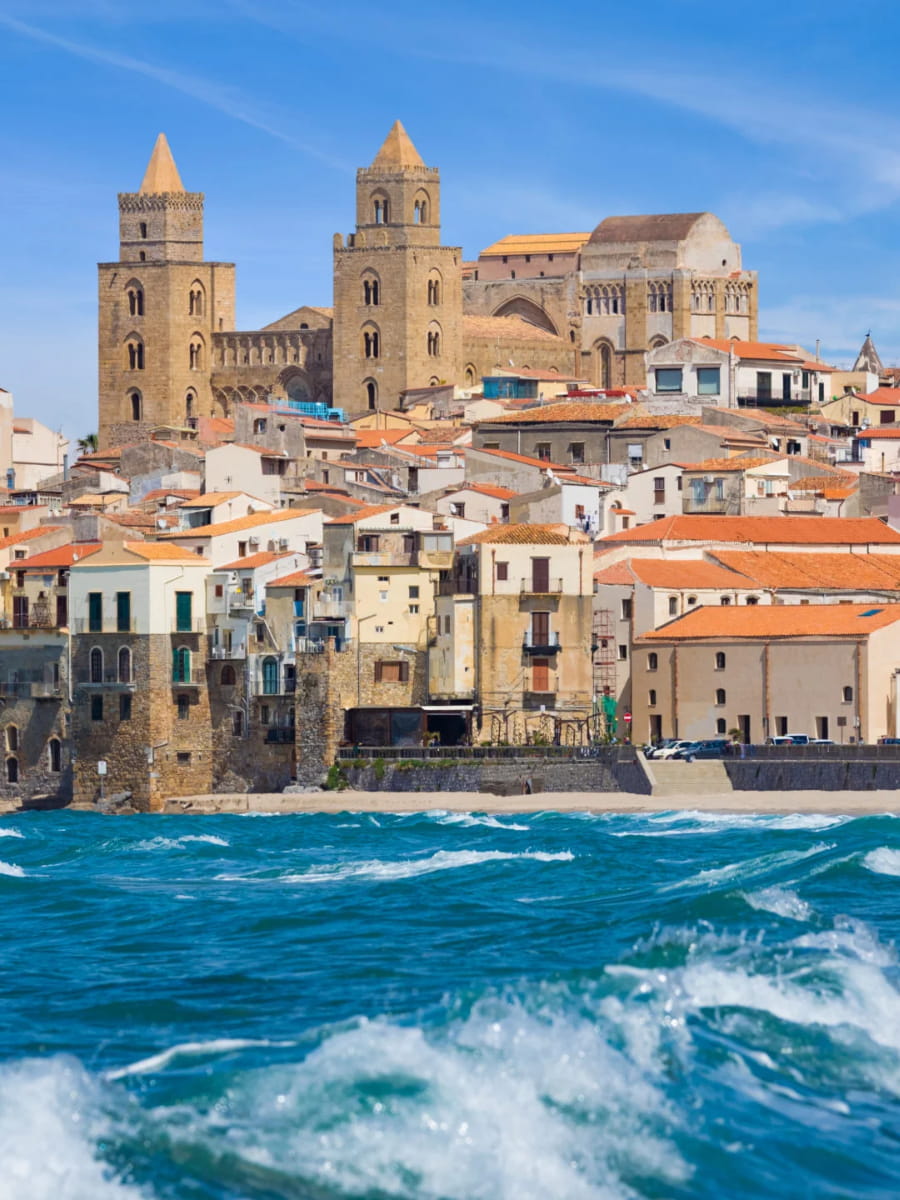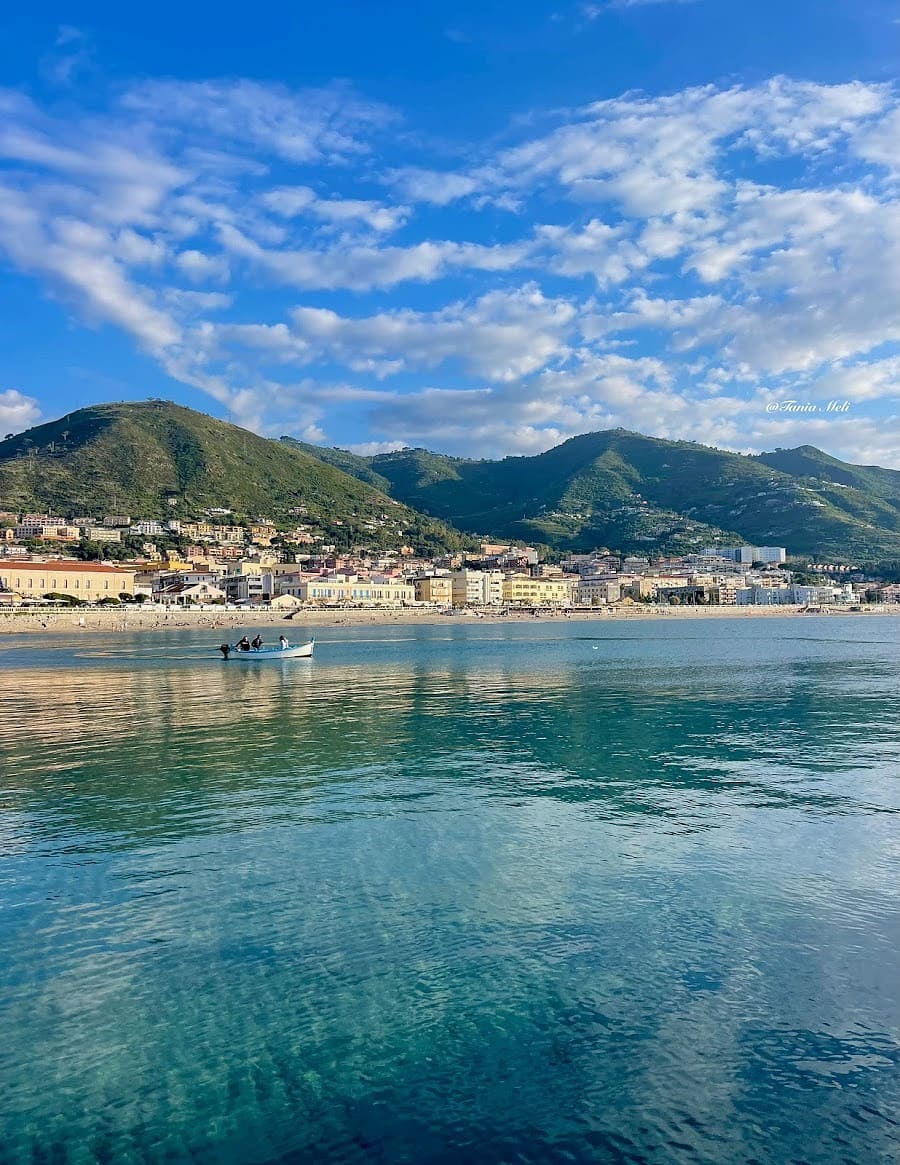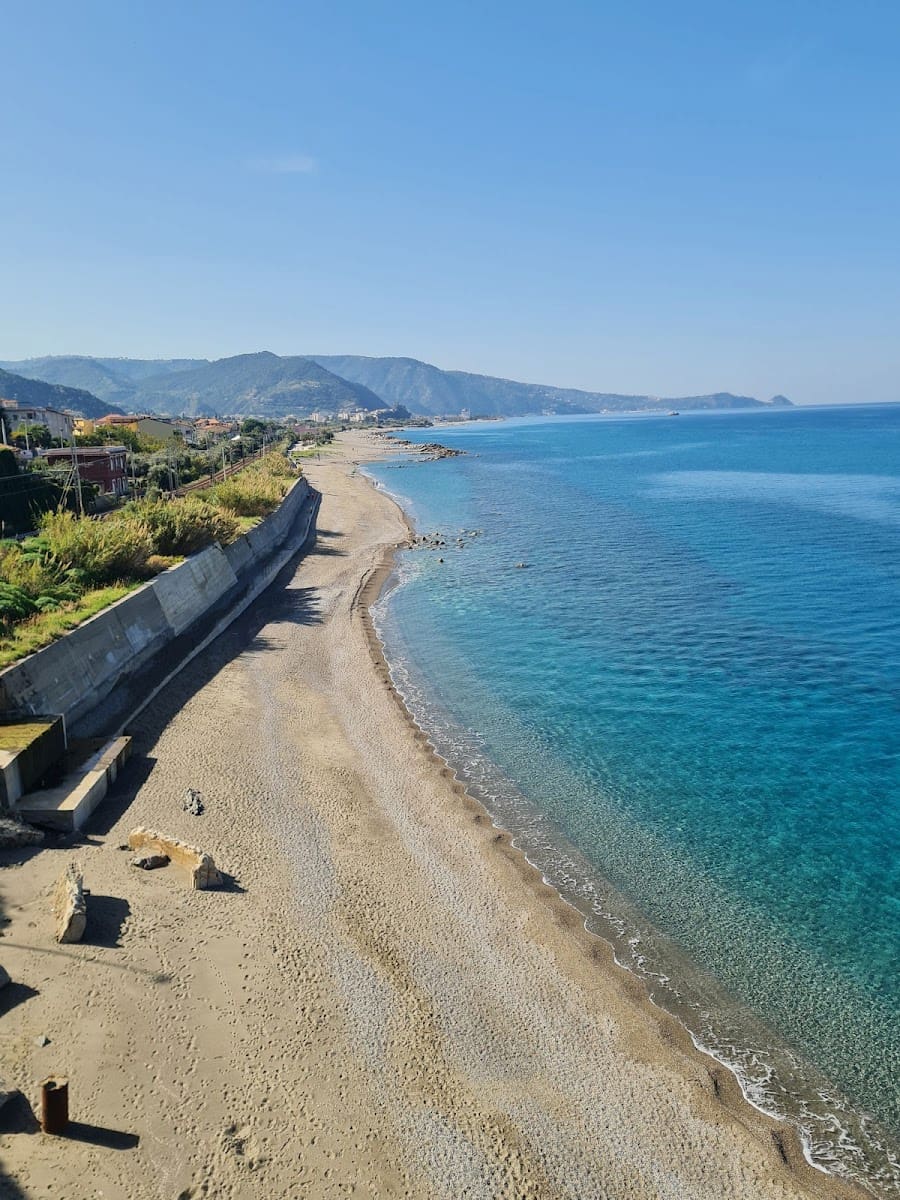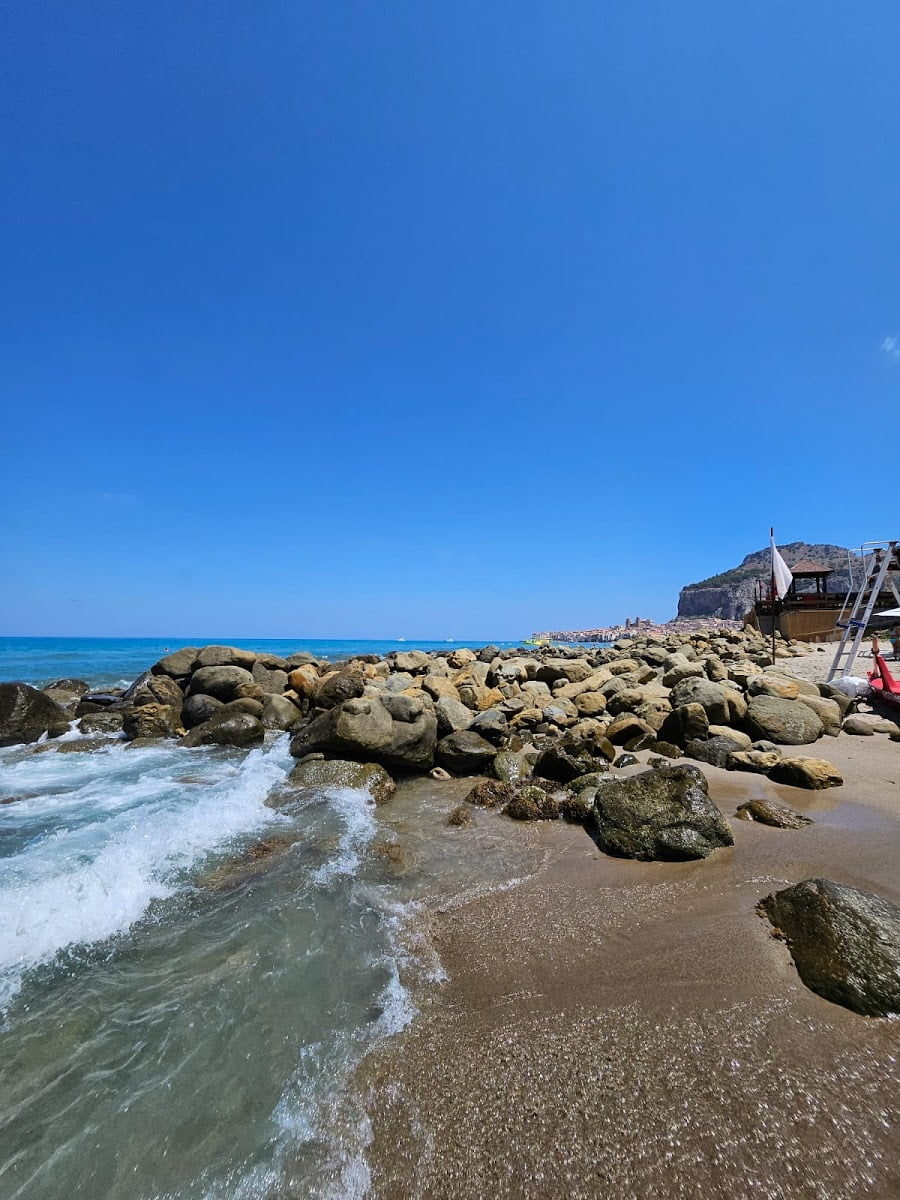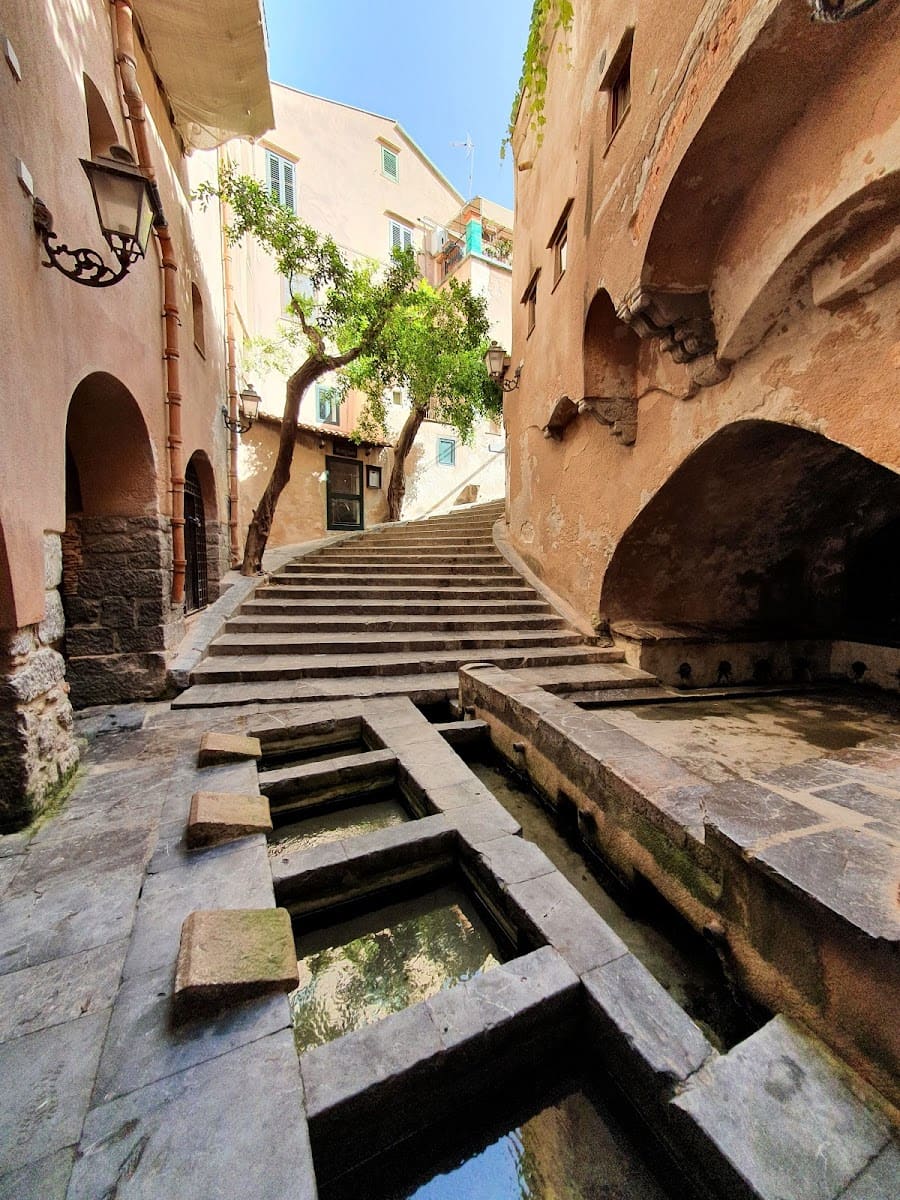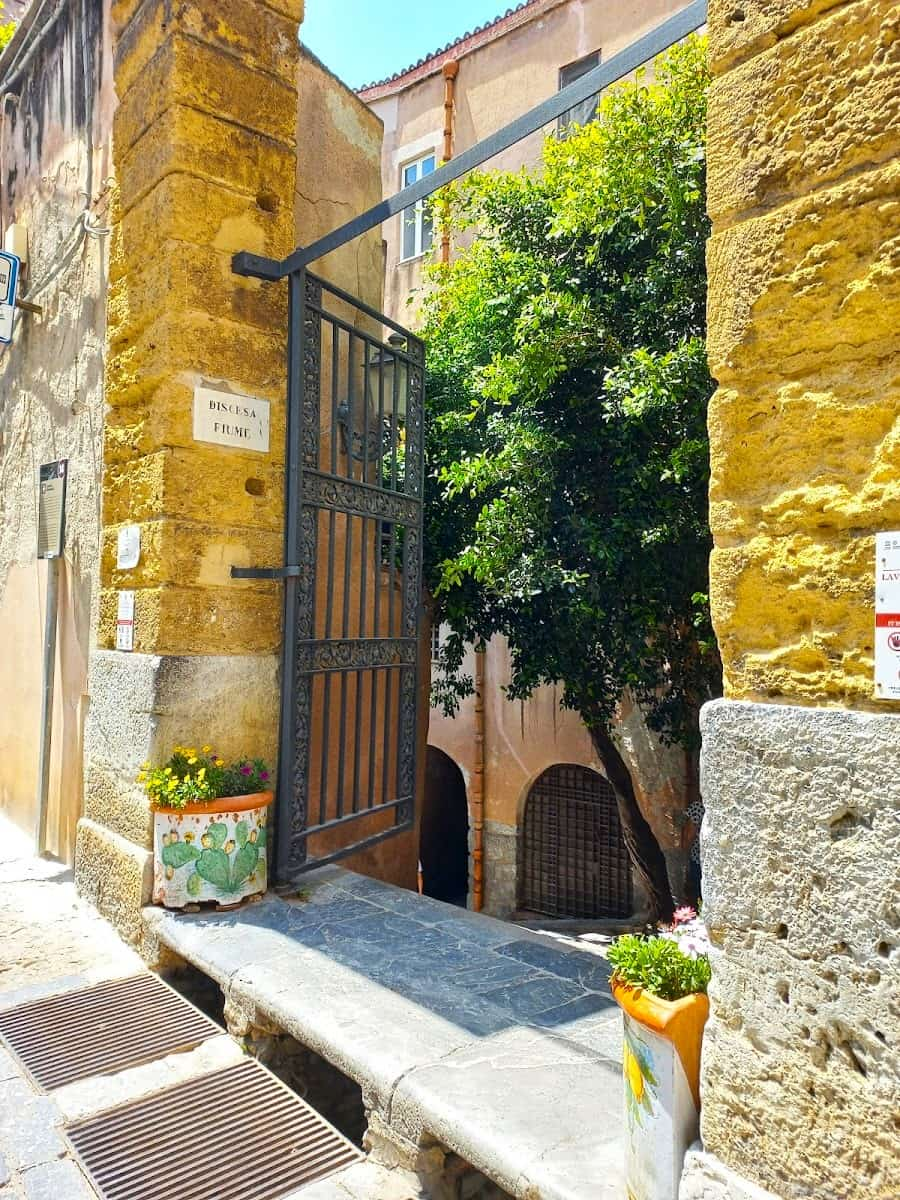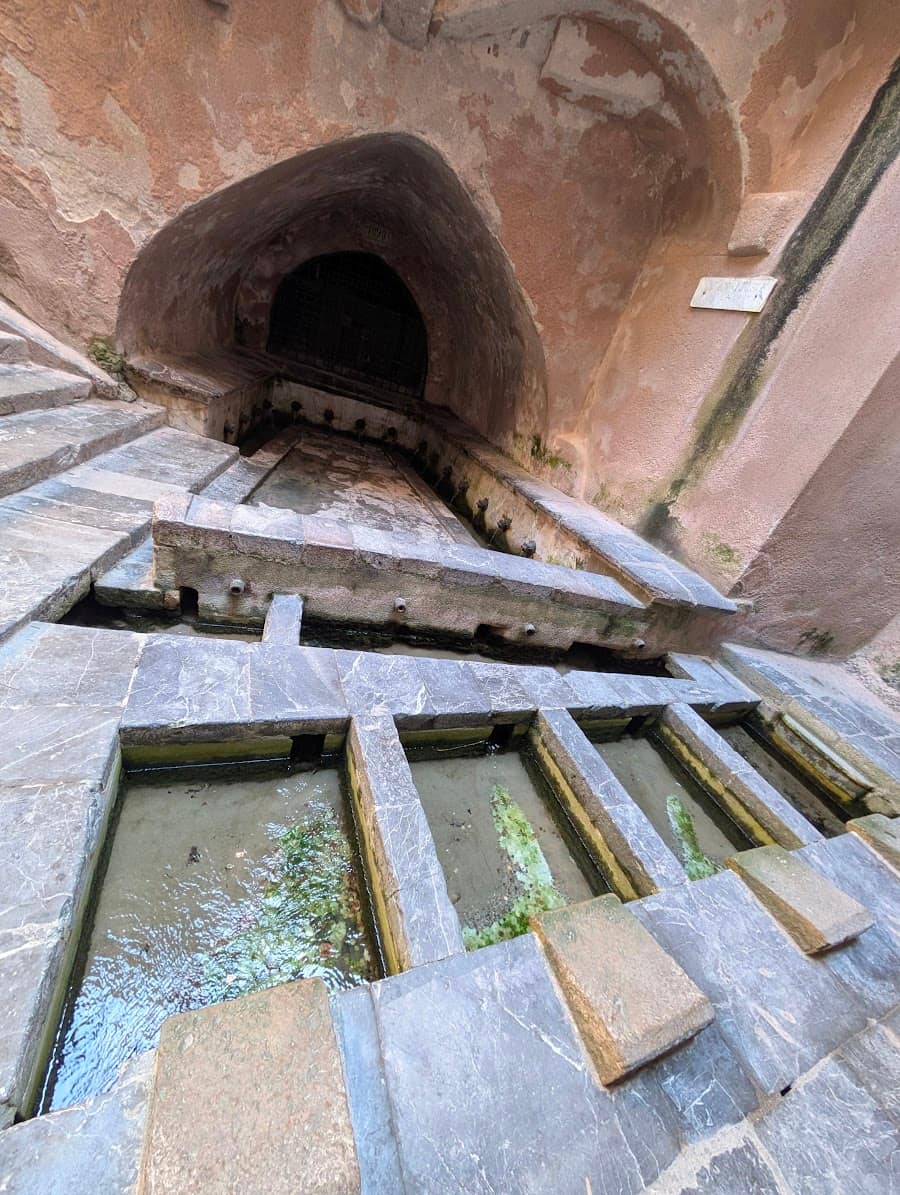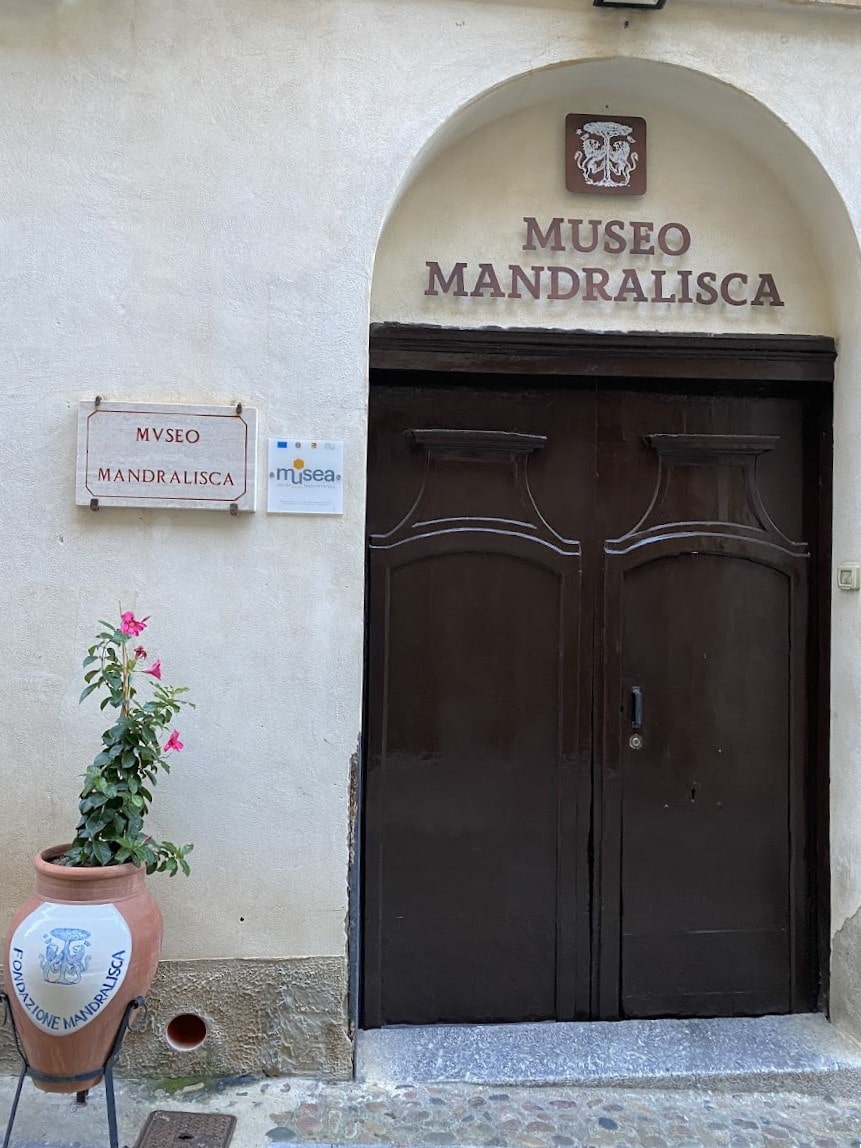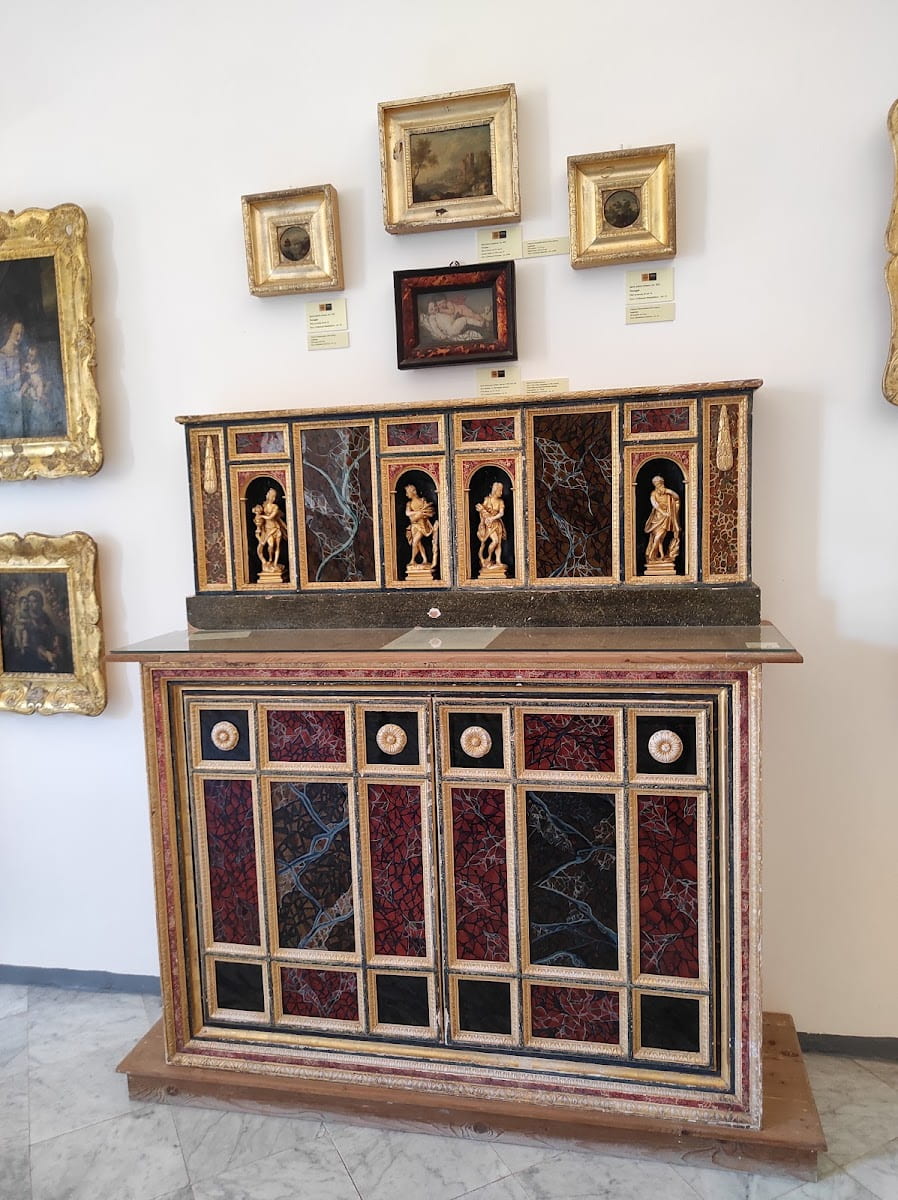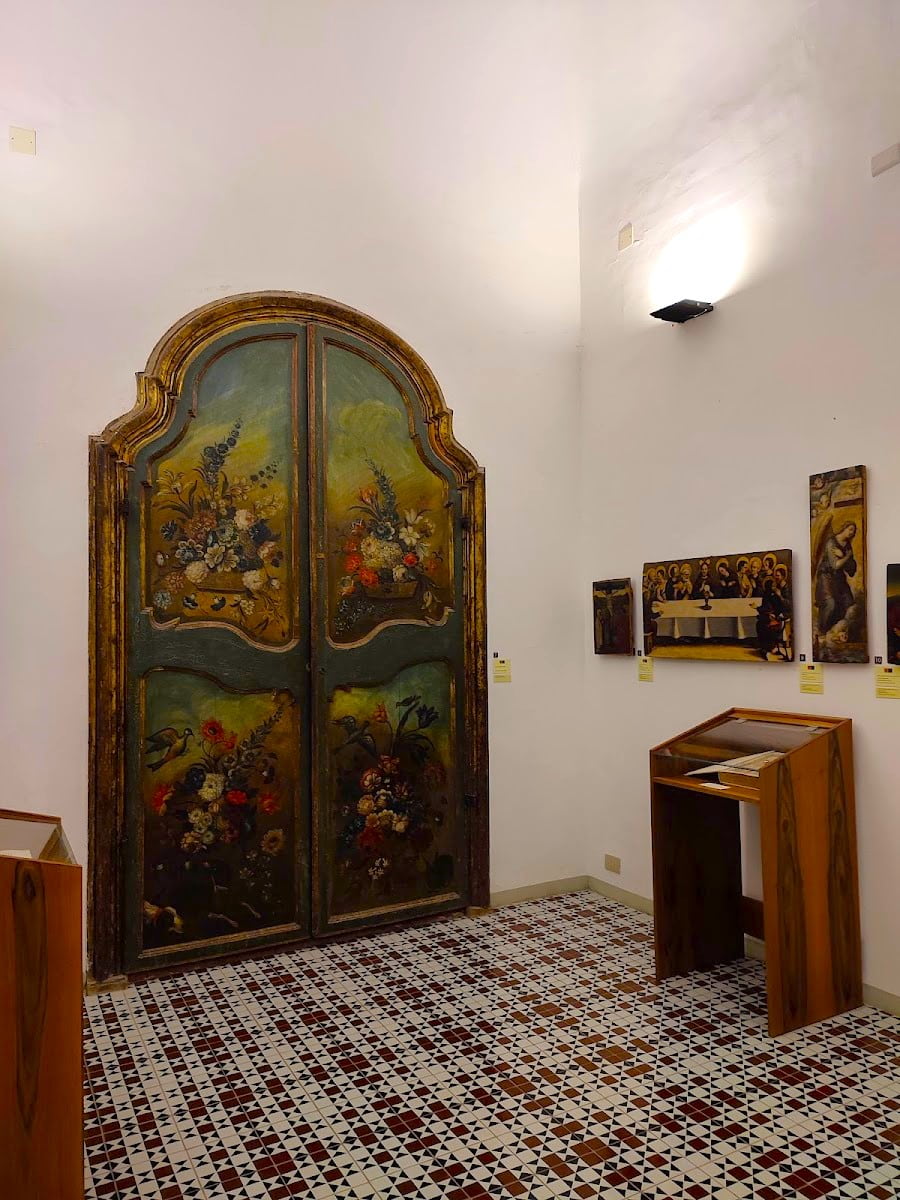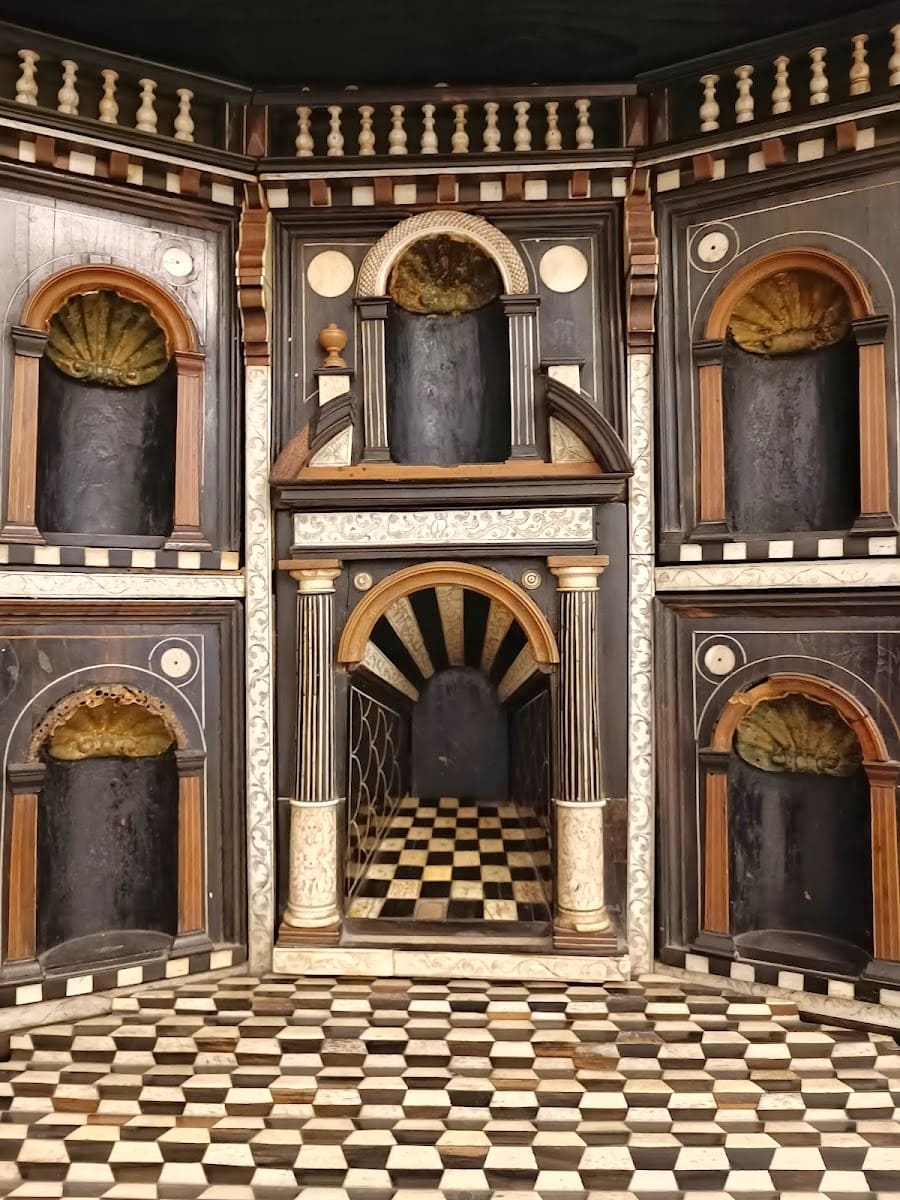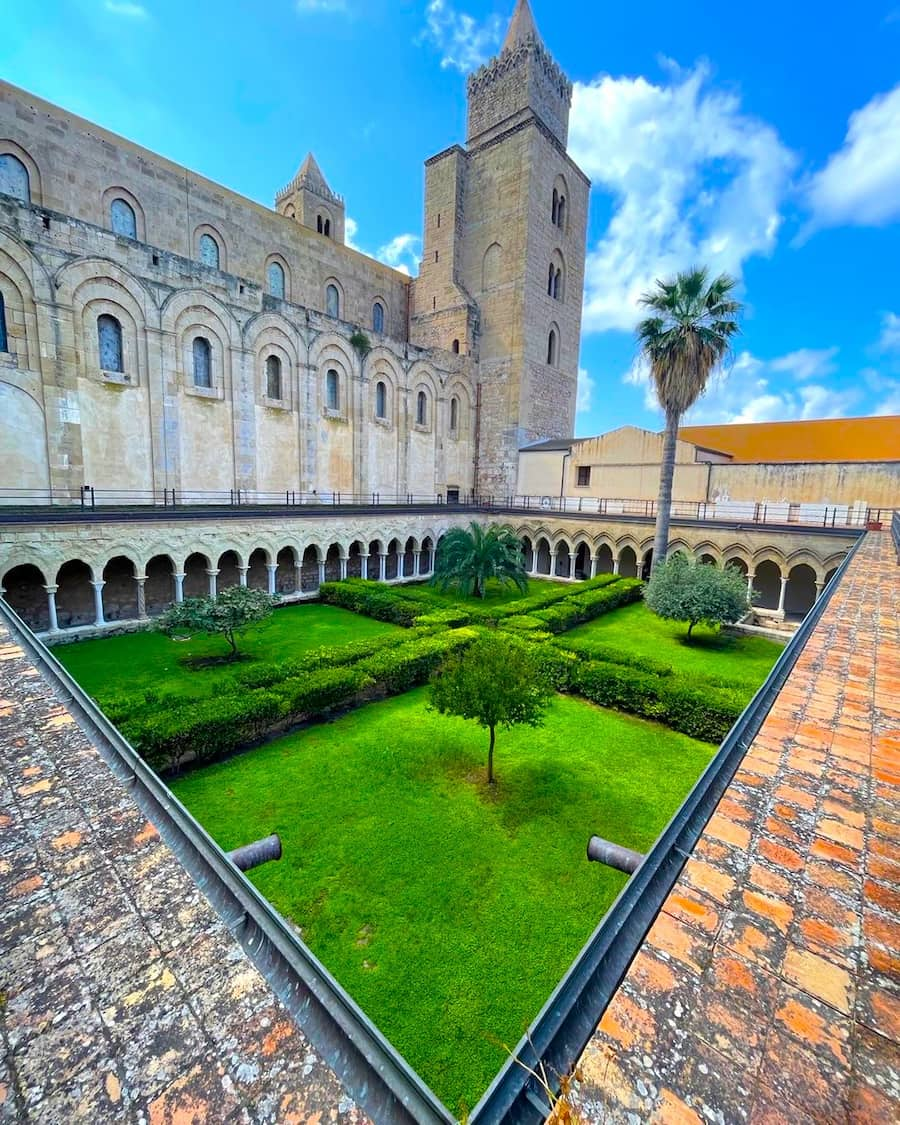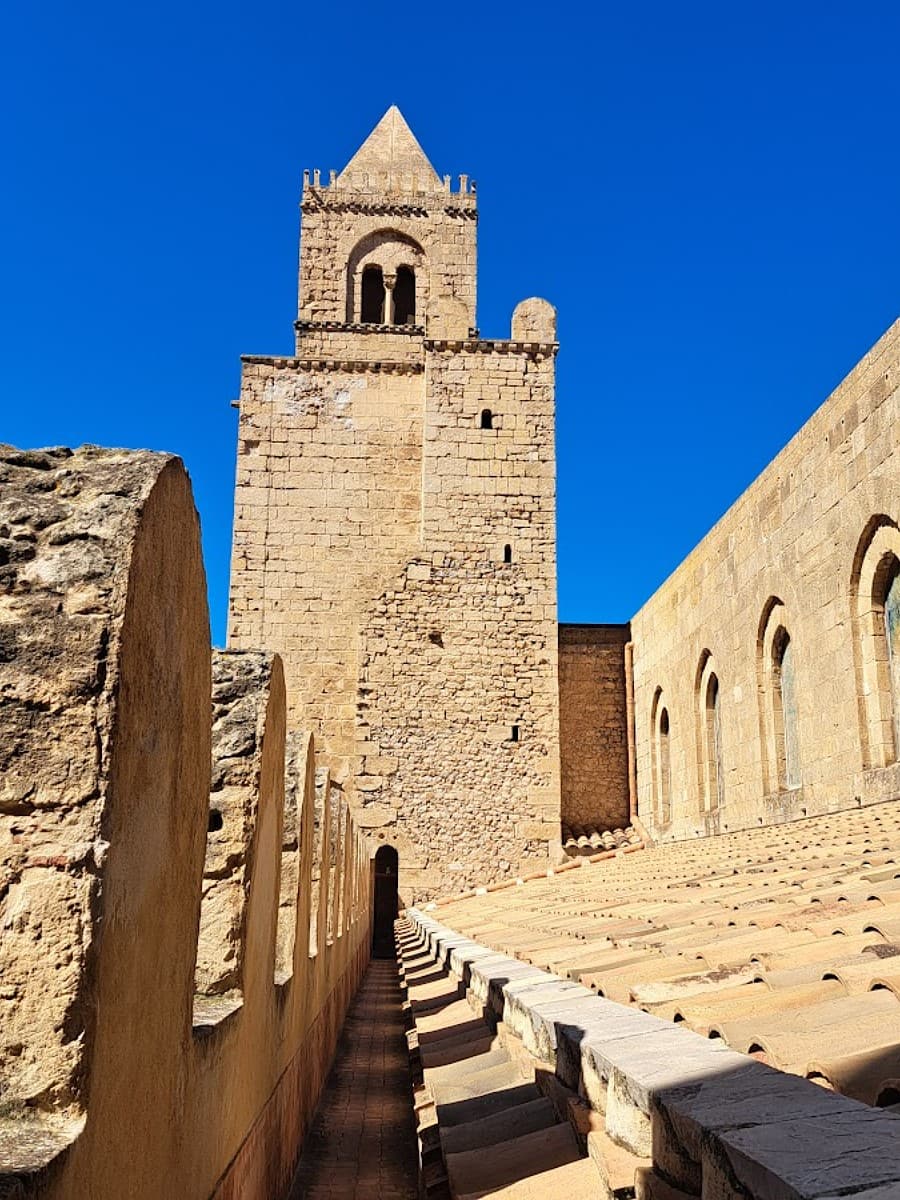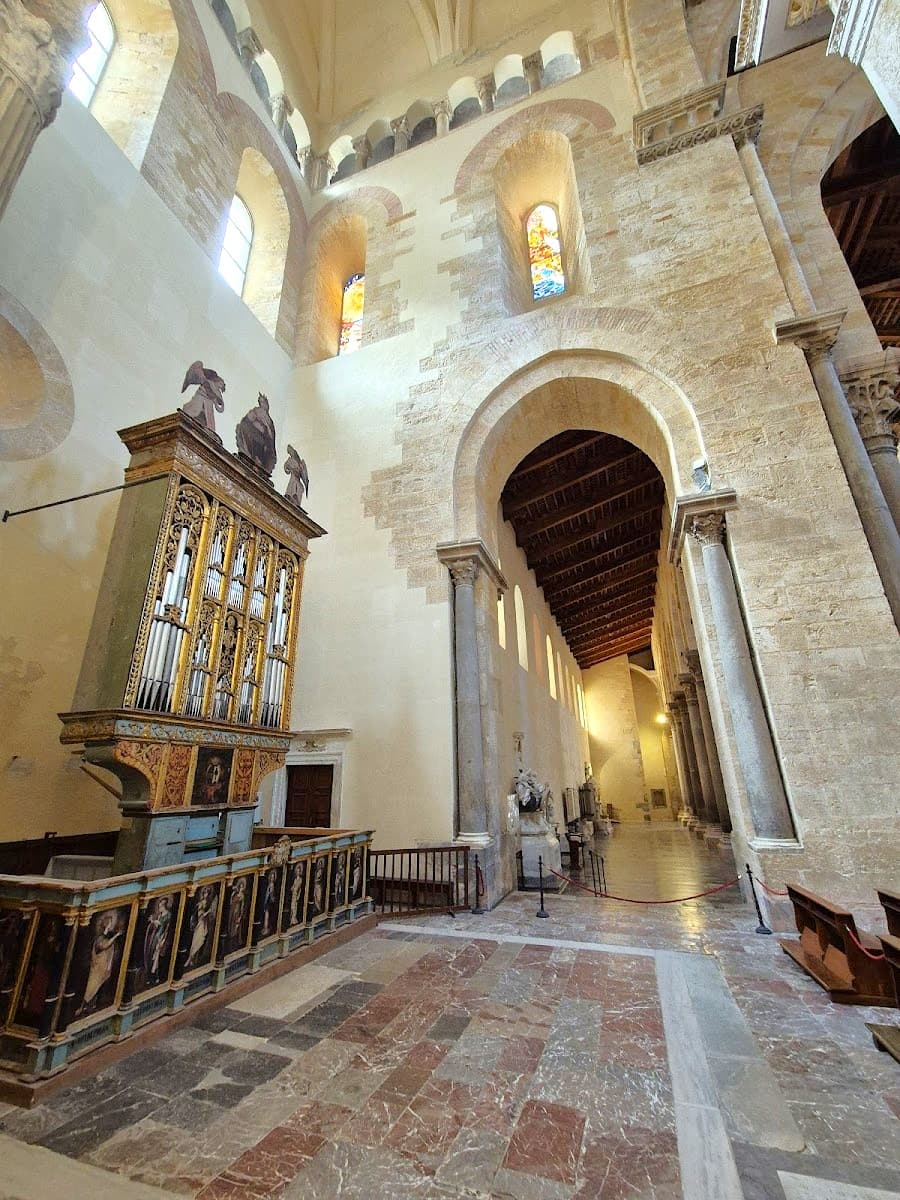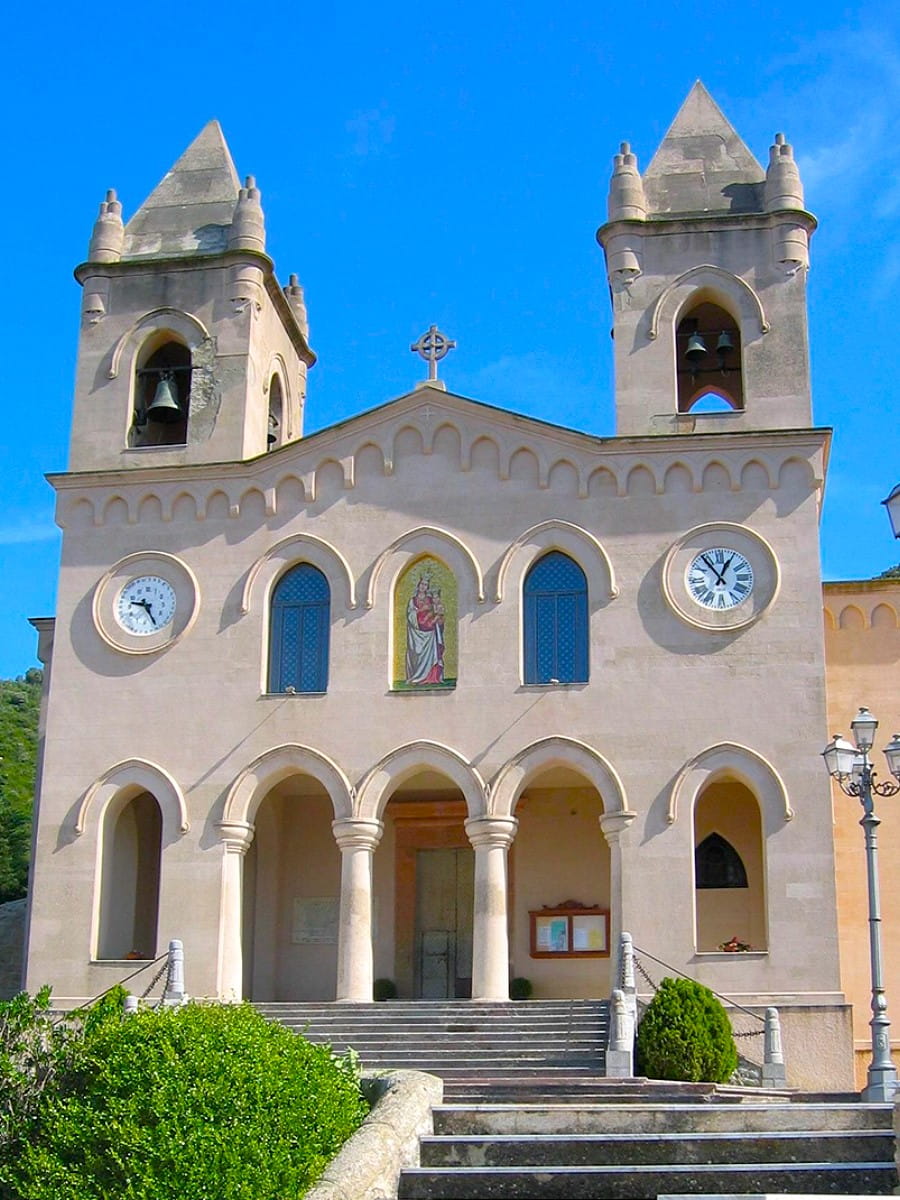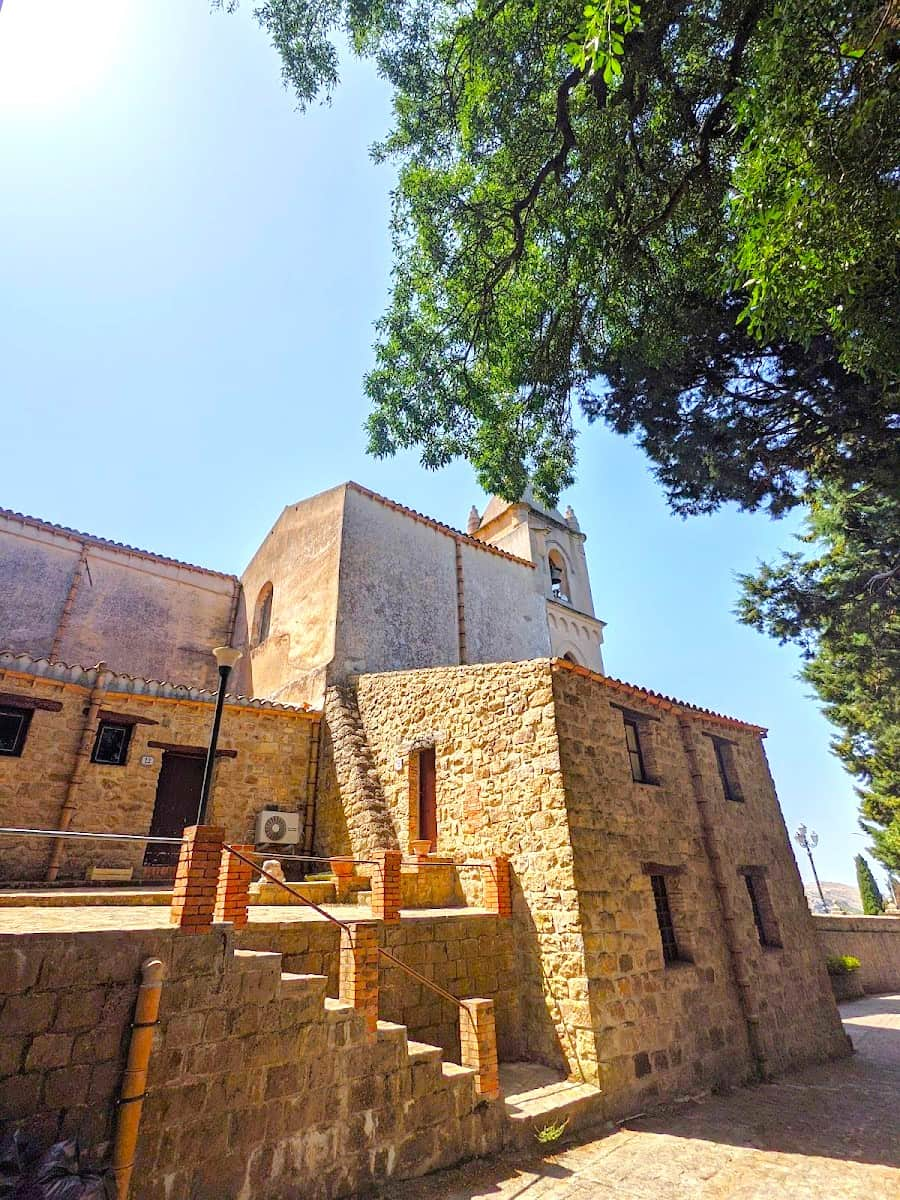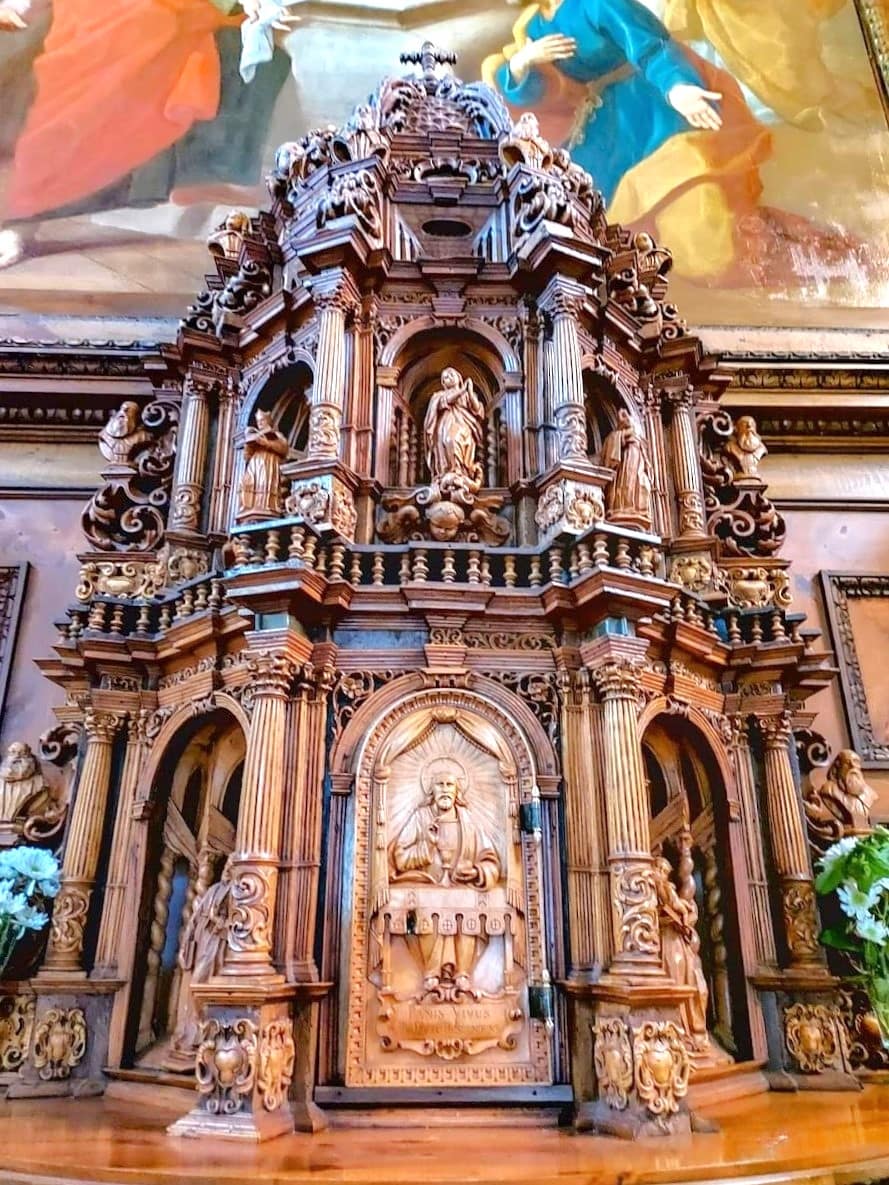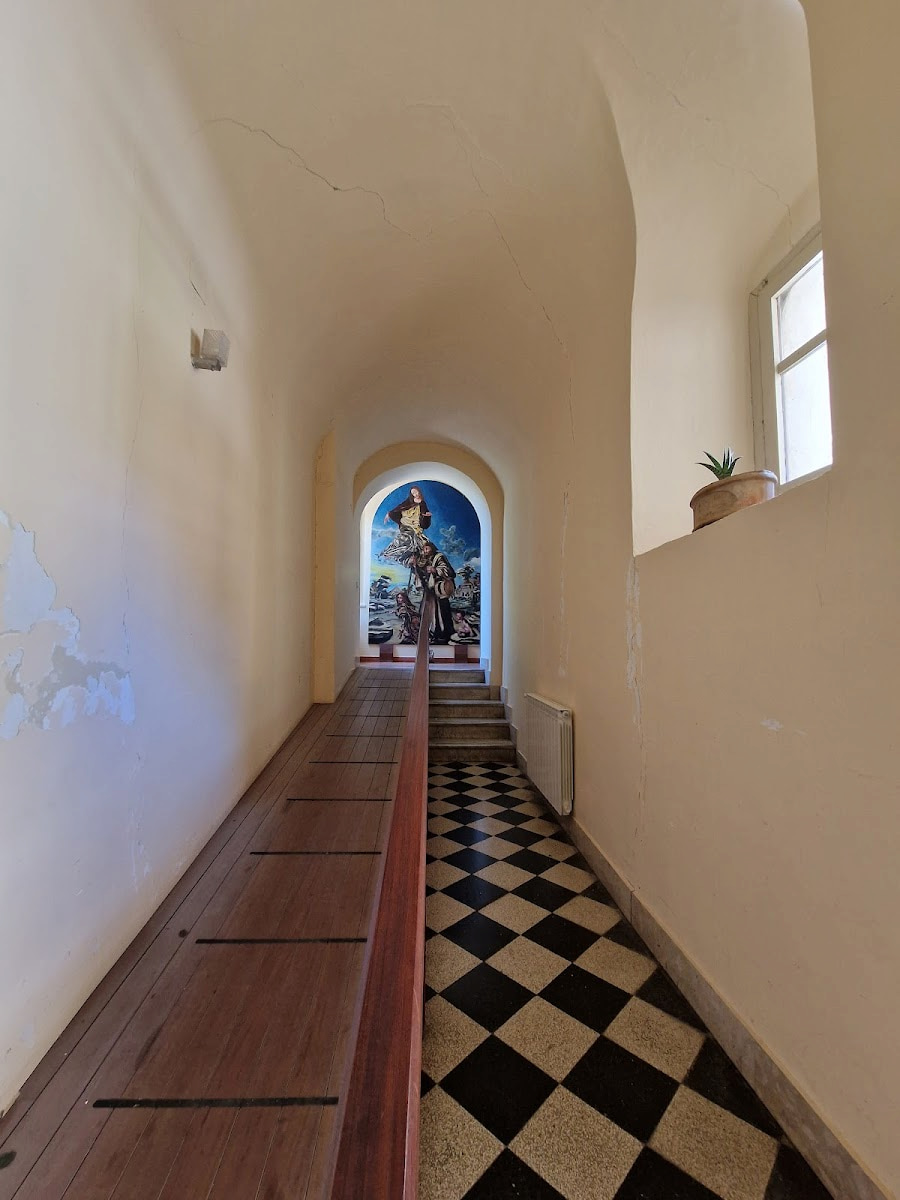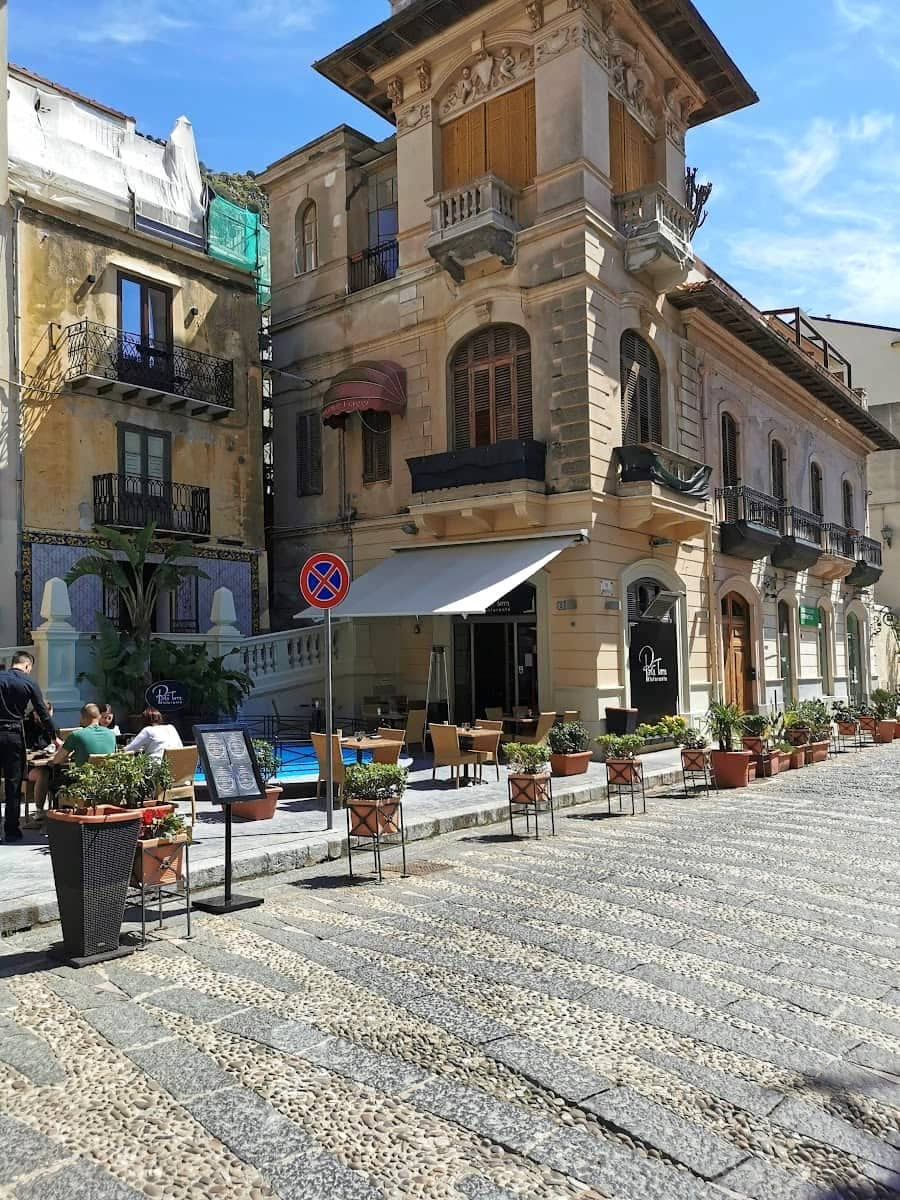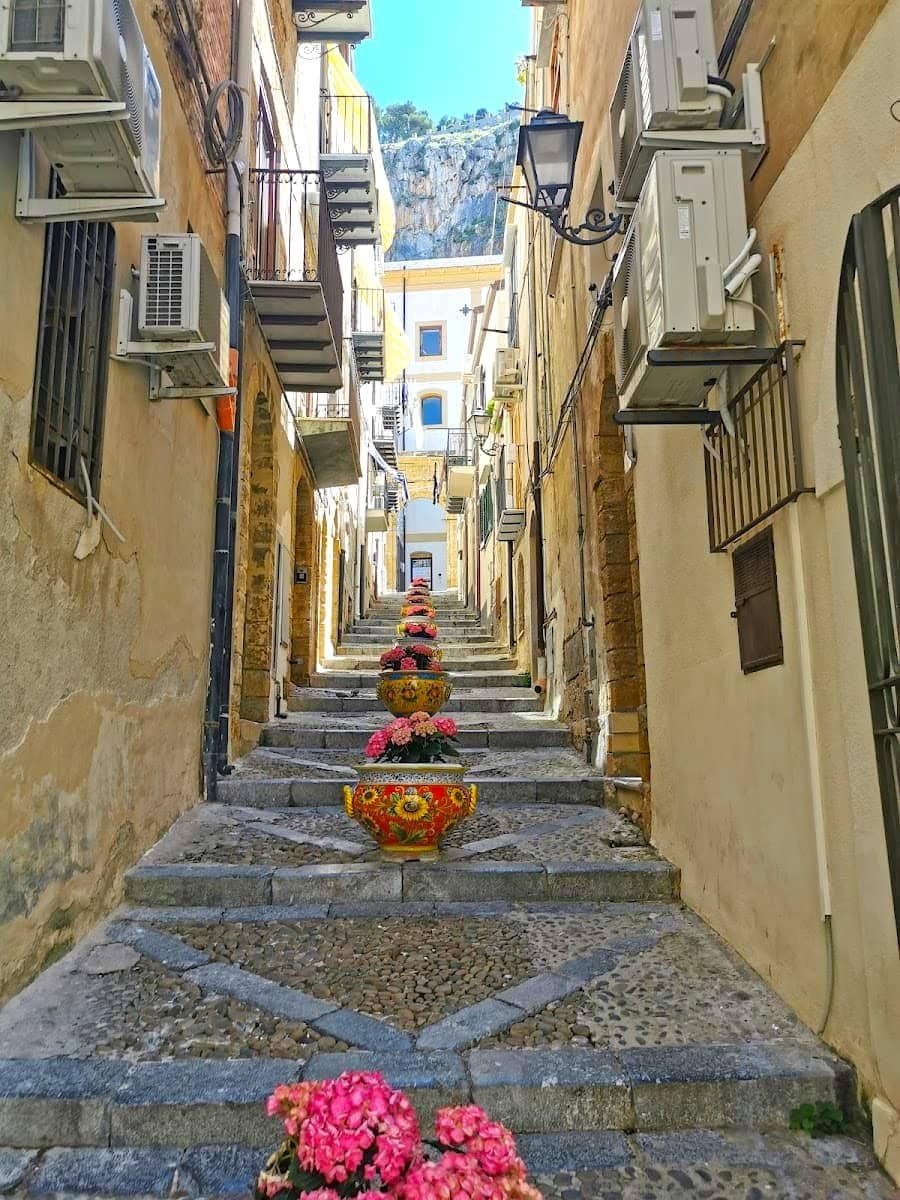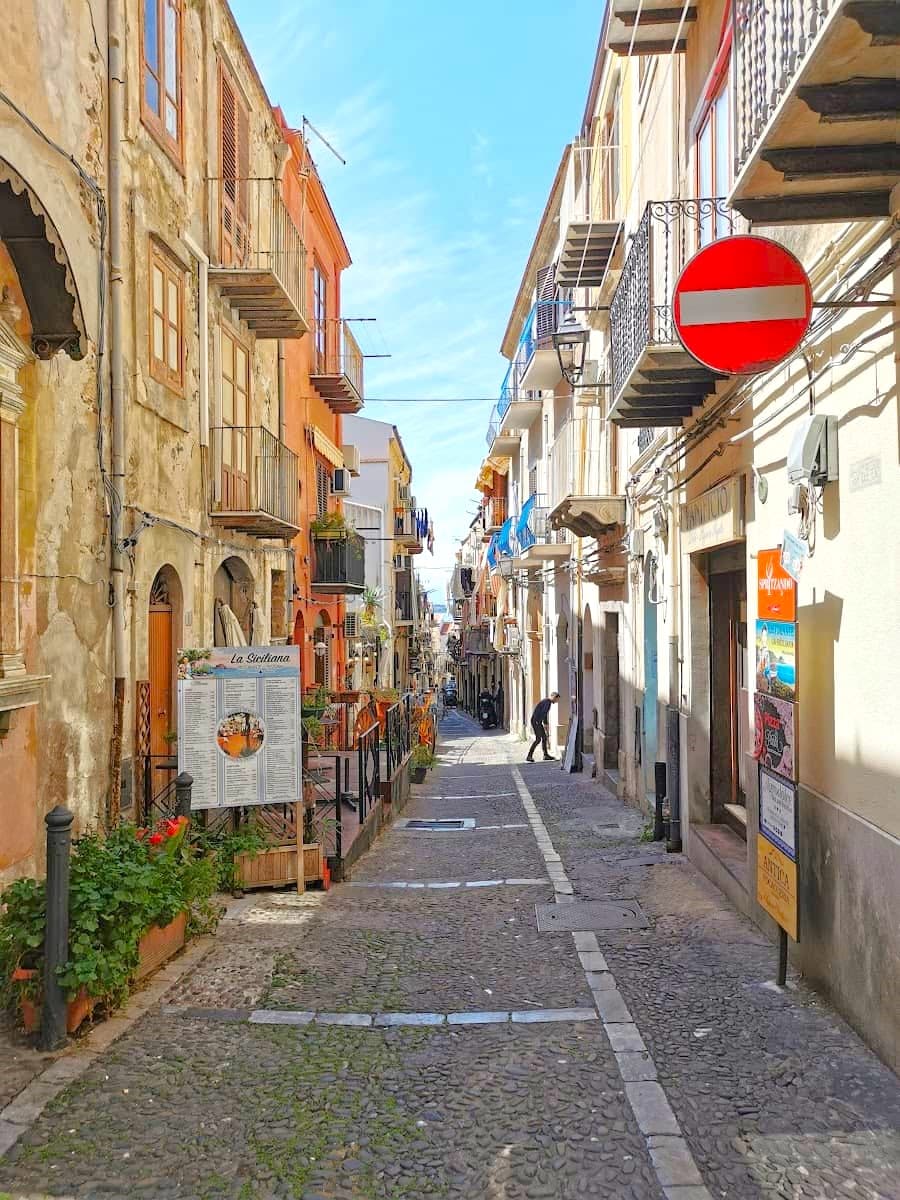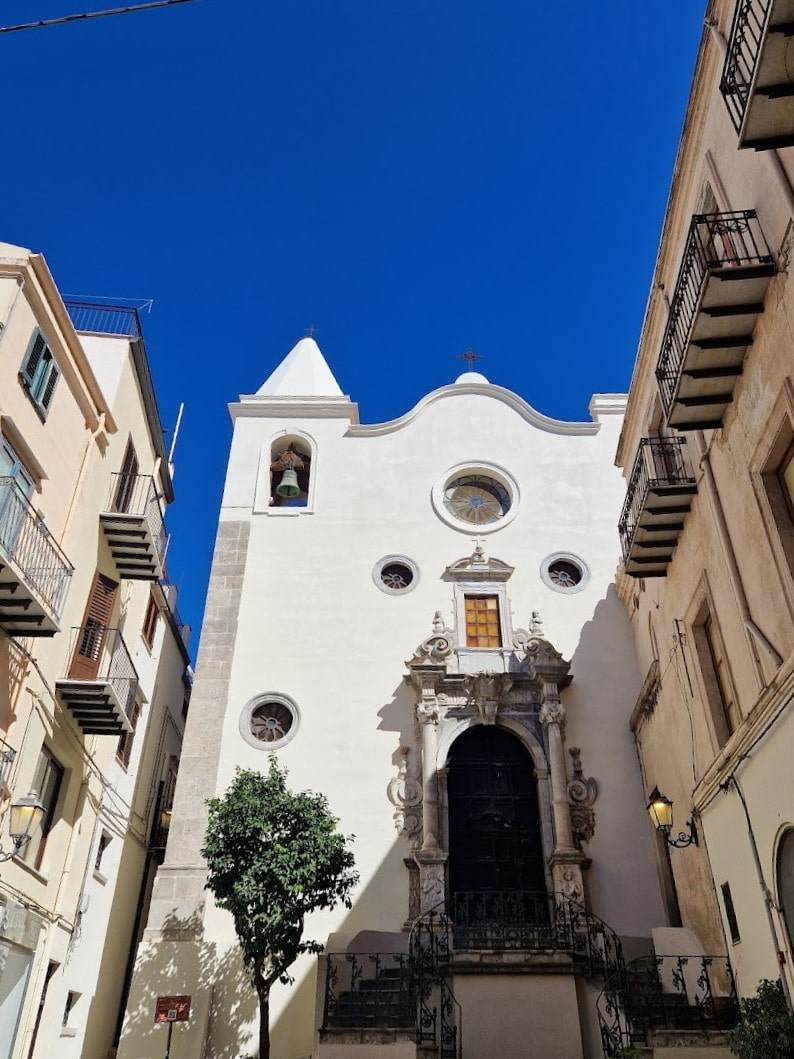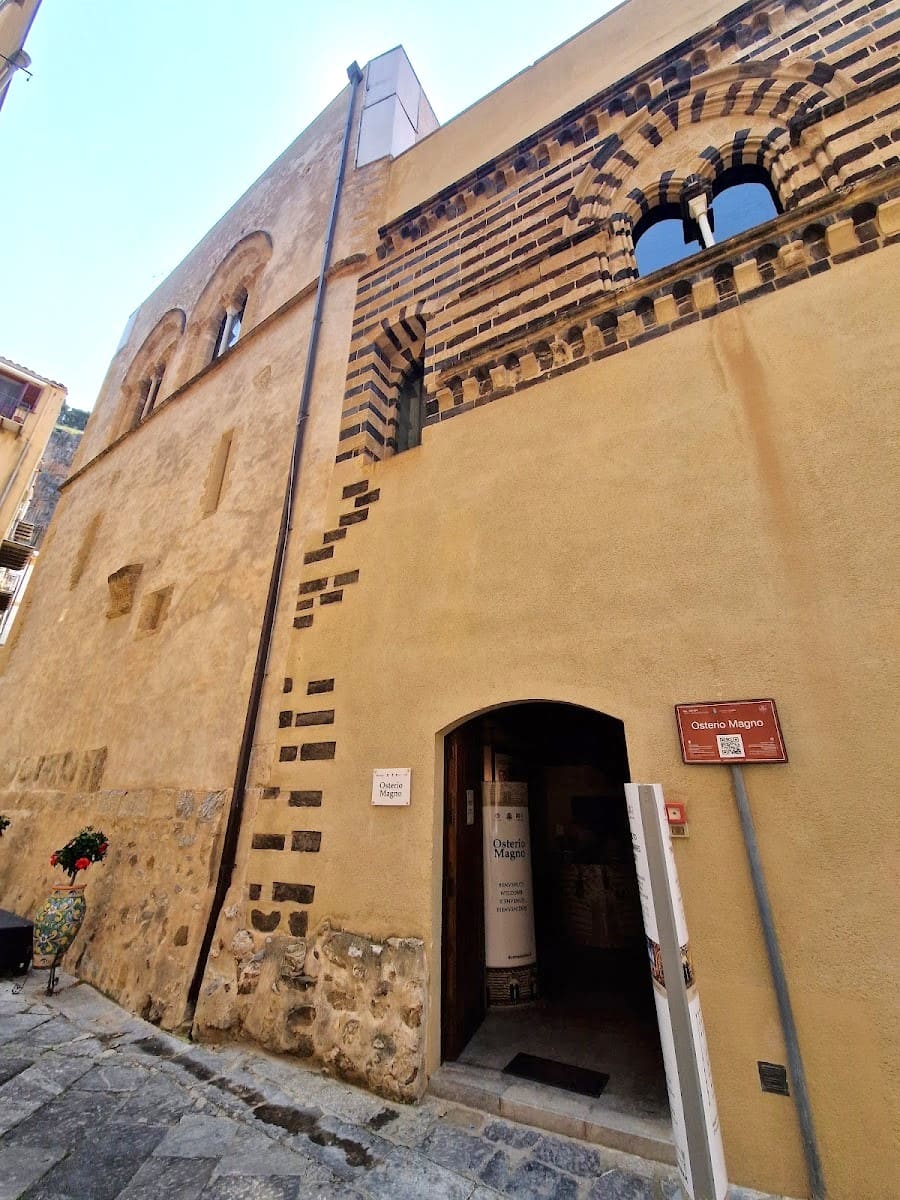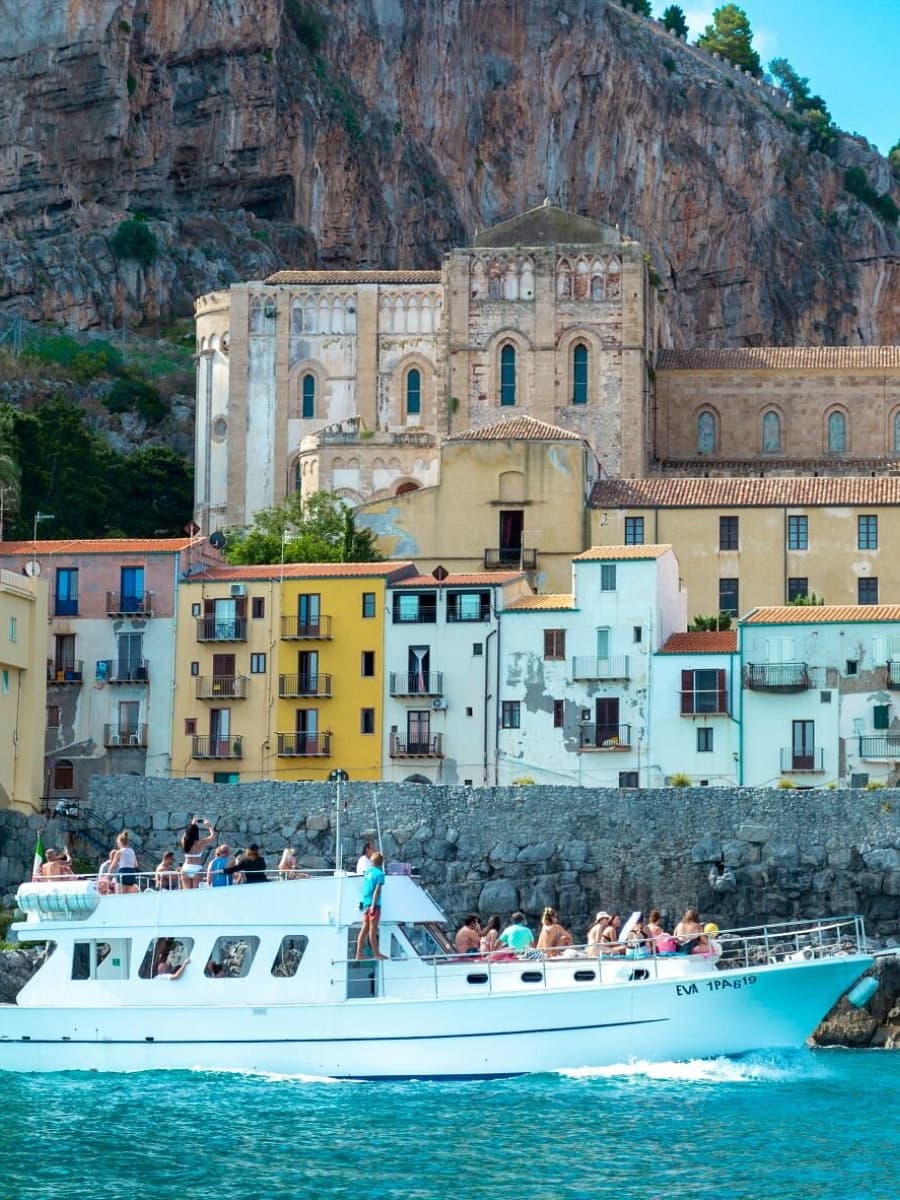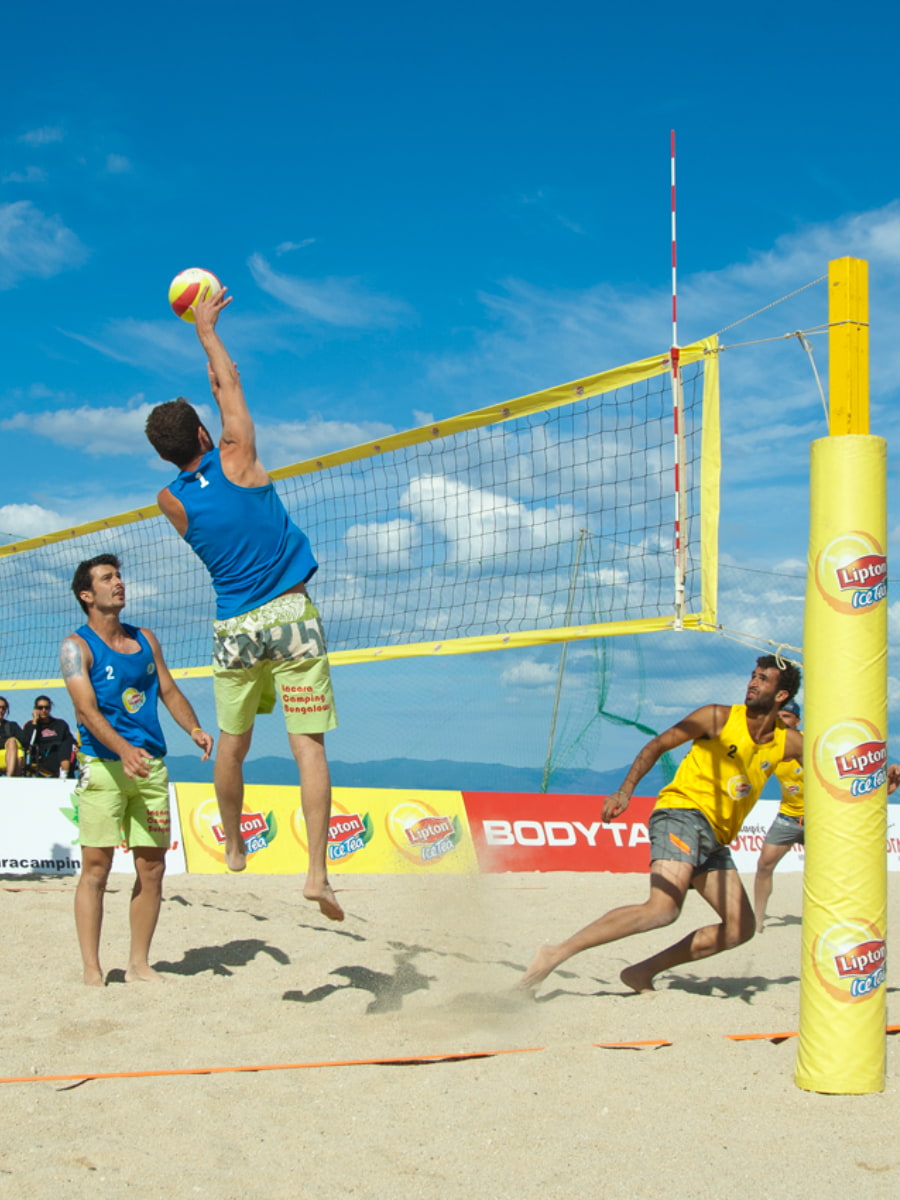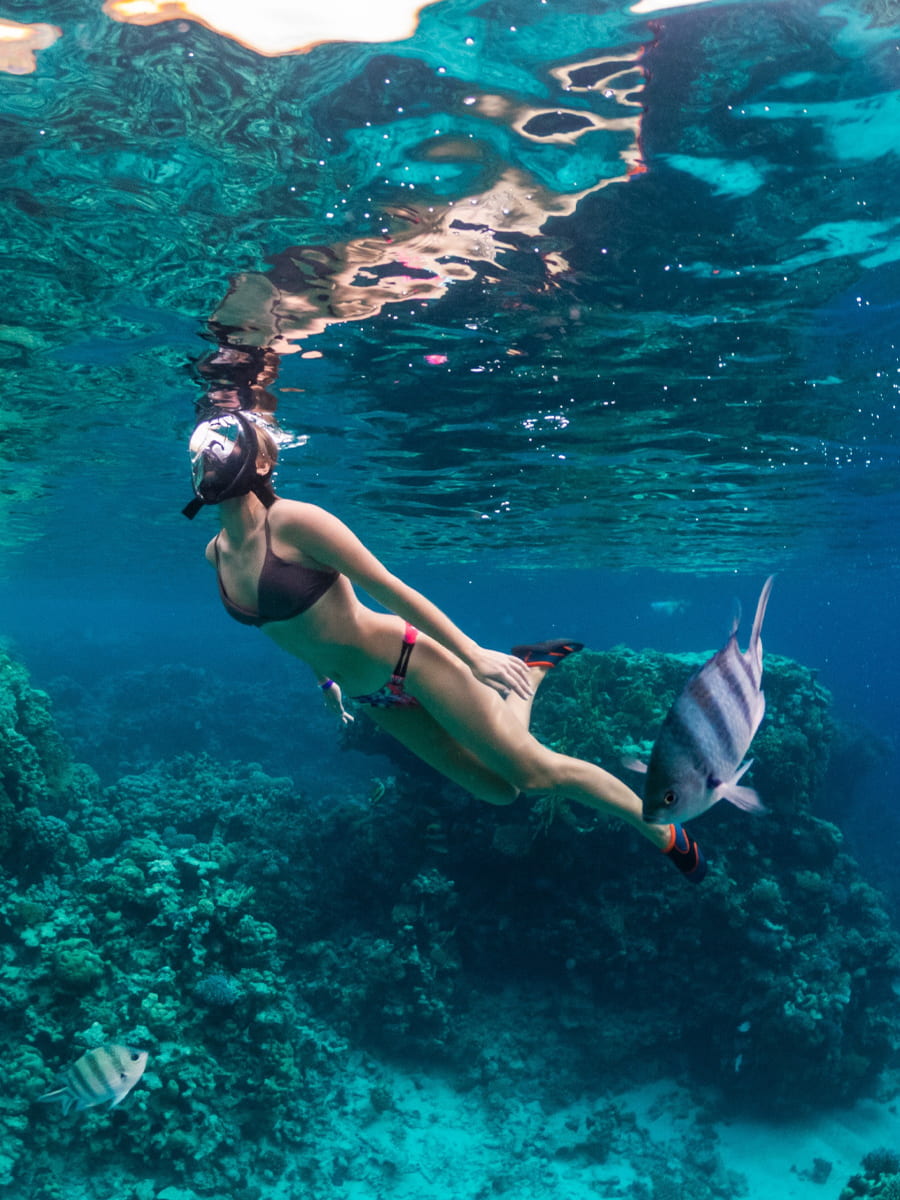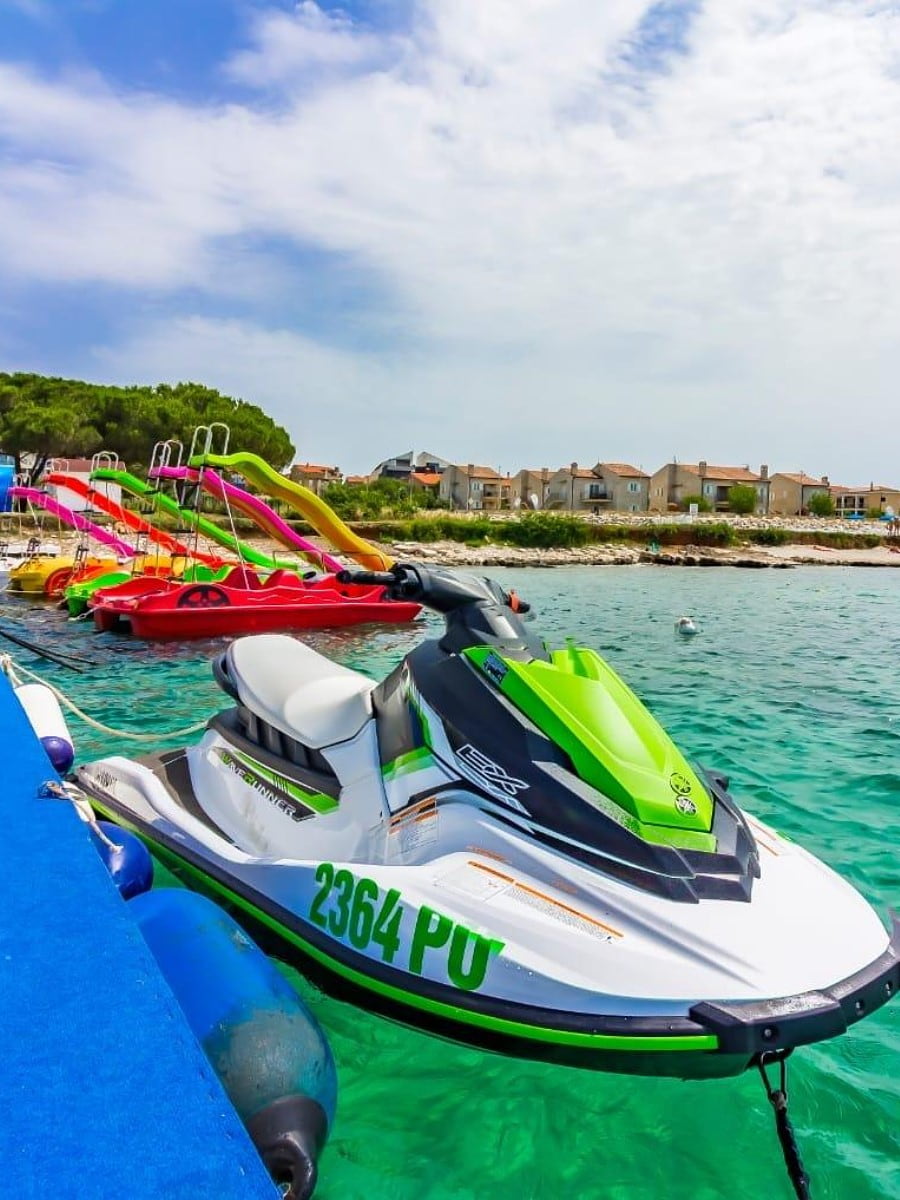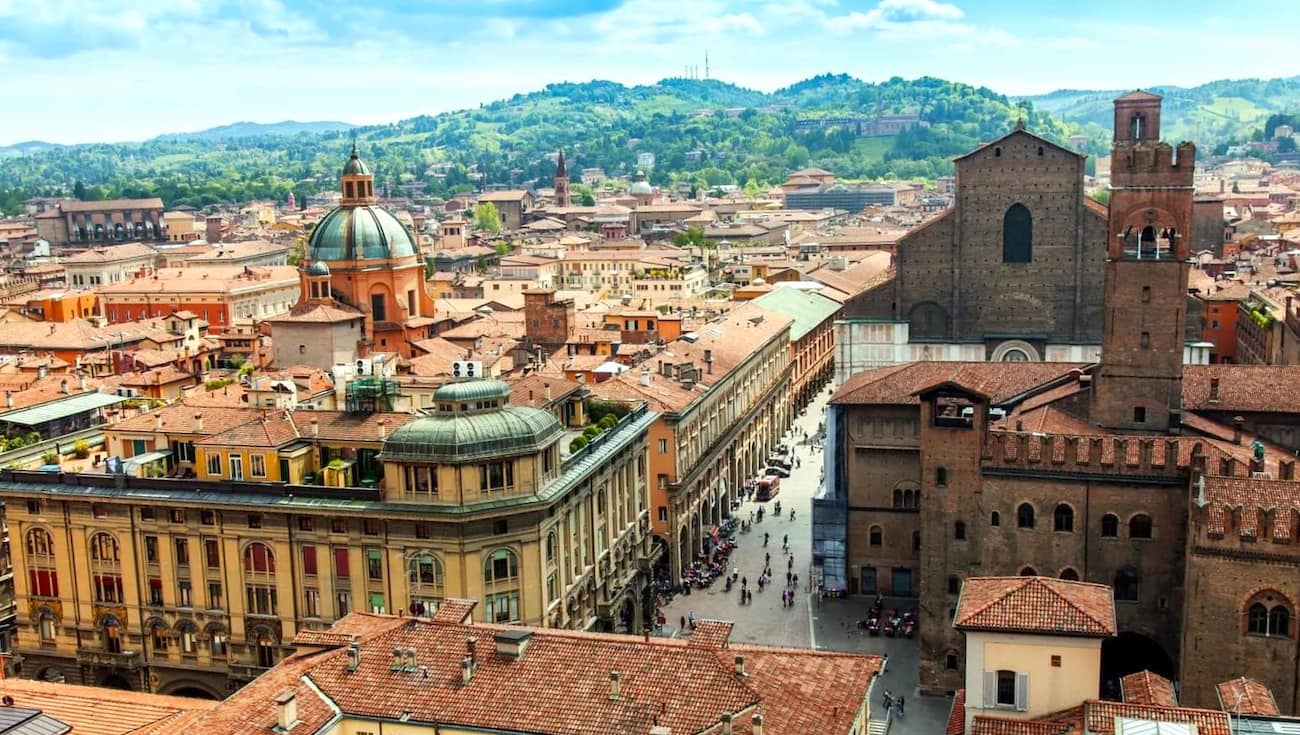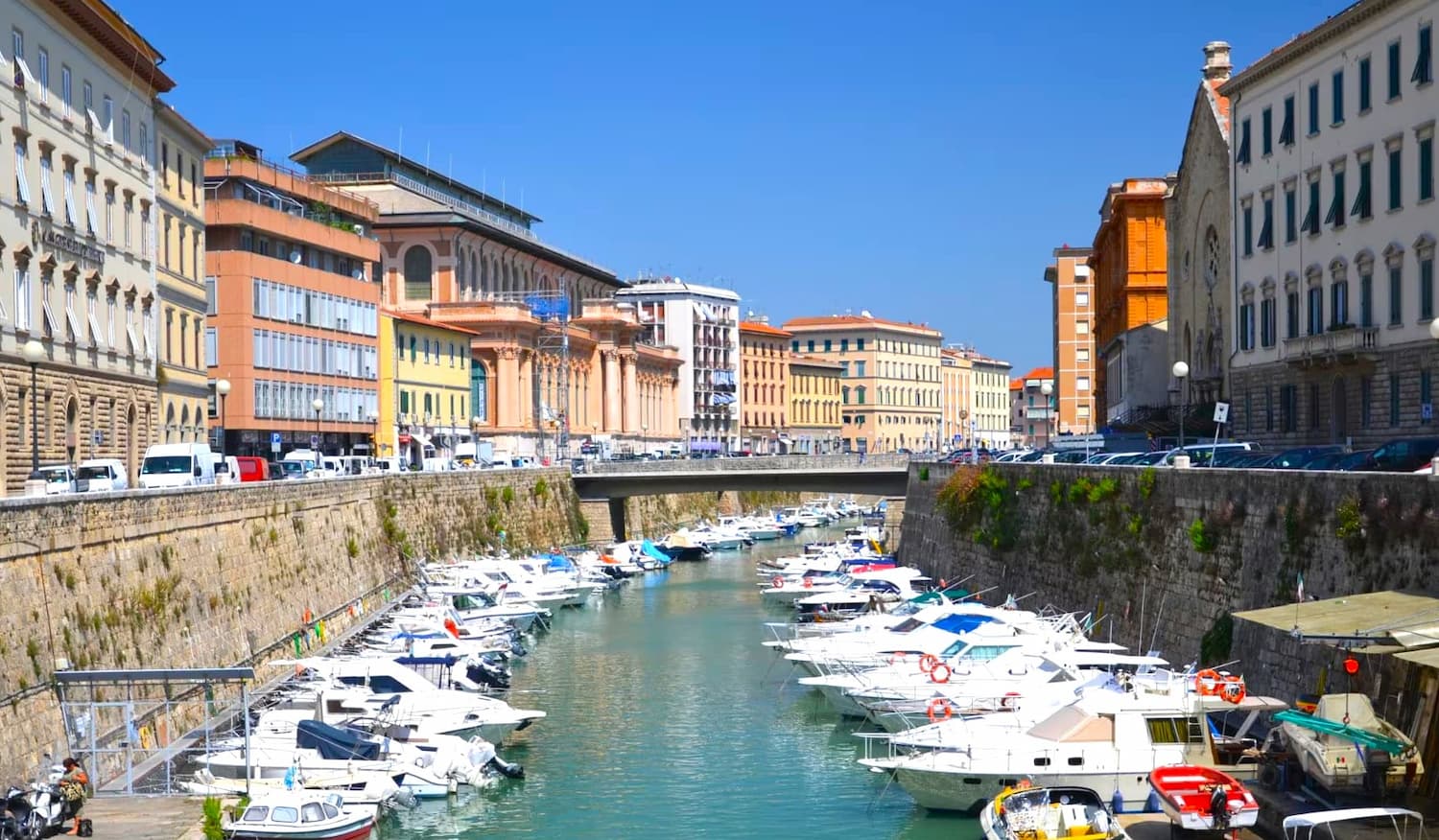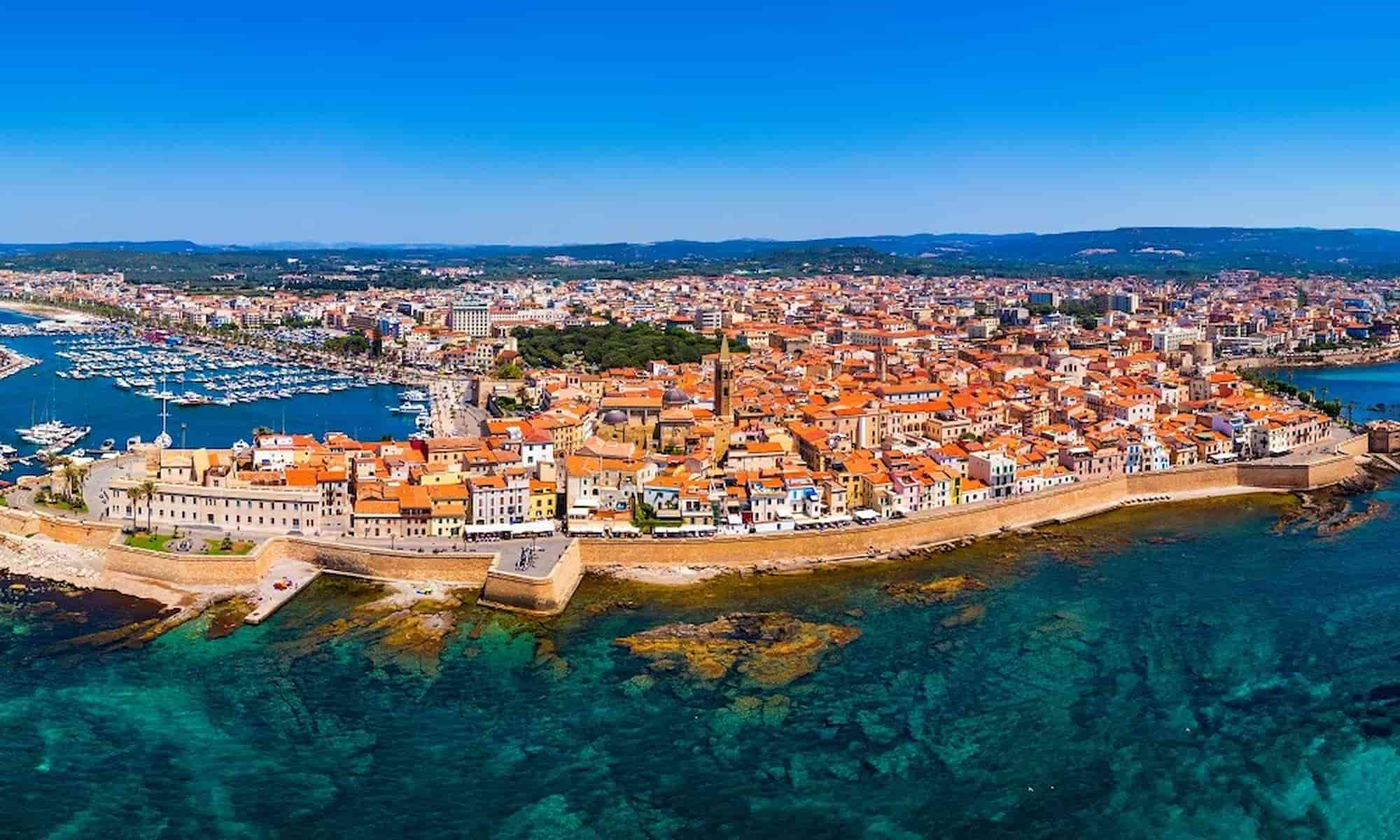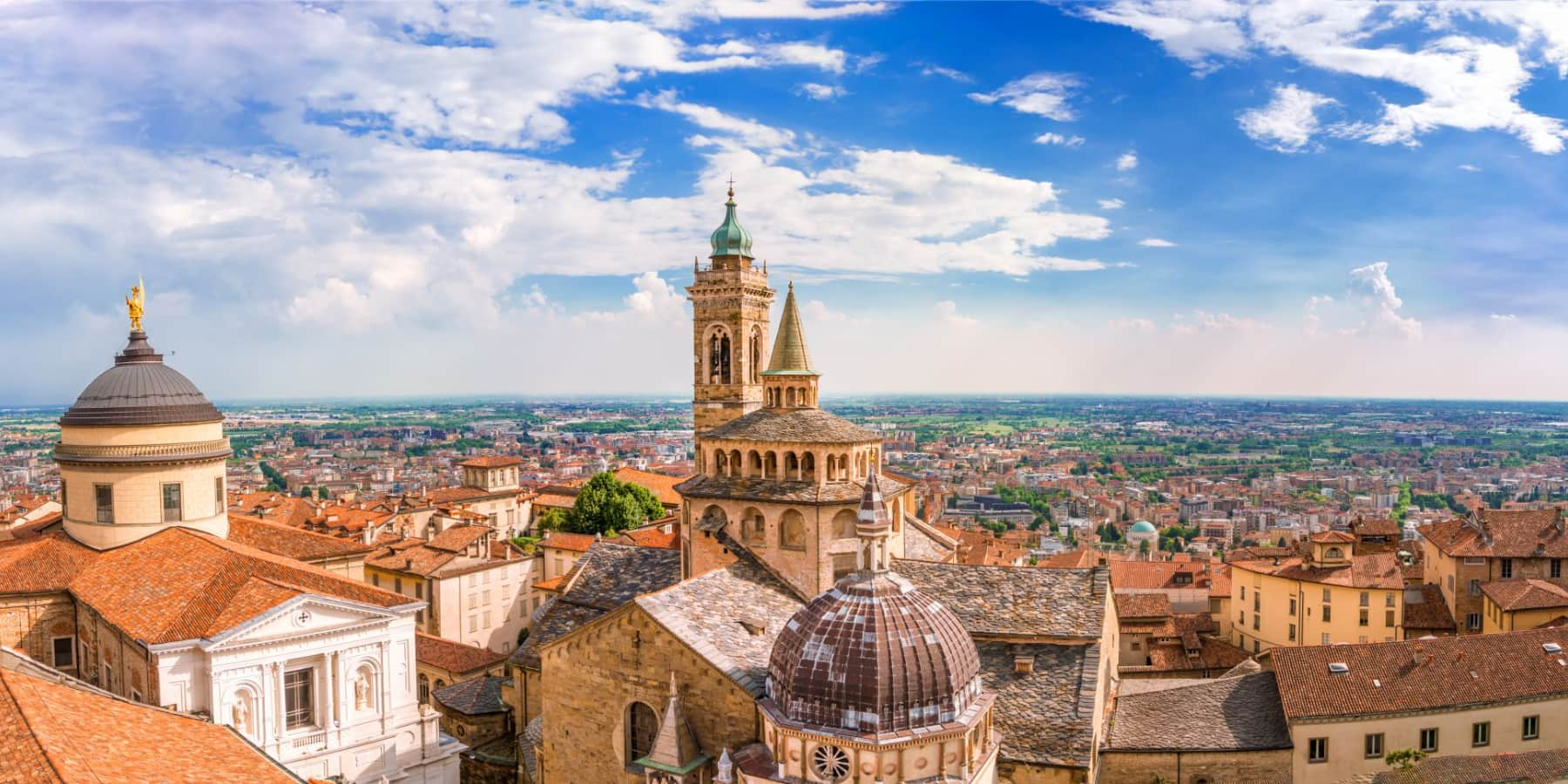Cefalù, a charming seaside town on the northern coast of Sicily, is a treasure trove of history, culture, and natural beauty. Its picturesque streets, lined with ancient buildings and colorful shops, invite visitors to explore and discover its secrets. From the stunning Norman Cathedral to the breathtaking views from La Rocca di Cefalù, every corner of this town offers a unique experience that will leave you wanting more.
Whether you’re interested in history, art, or simply enjoying the sun on one of Sicily’s most beautiful beaches, Cefalù has something for everyone. This article will guide you through the best things to do in Cefalù, from exploring its historic center to enjoying water sports along its stunning coastline. We’ll also share practical tips and insider knowledge to help you make the most of your visit, ensuring that your trip to Cefalù is unforgettable.
🏠 Where to Stay in Cefalu
- ✨ 5-Star: Le Calette N.5, Cefalù
- 🏨 4-Star: Horizon Suites, Cefalù
- 🛏️ 3-Star: Mareblu, Cefalù
- 💸 Cheap: Palazzo Raho, Cefalù
- 🏢 Apartment: Campeggio Sanfilippo, Cefalù
- 👨👩👧👦 For Families: Cefalù in Blu, Cefalù
- 🏩 For Couples: Le Calette Bay, Cefalù
💁 Best Guided Tours
- 3-Hour Boat Excursion in Cefalù from € 50 (⭐4.6/5)
- Boat Trip to Cefalù from € 45 (⭐4.7/5)
- Cruise and Explore: Discover Cefalù's Coastline on a Catamaran from € 60 (⭐4.8/5)
- 3-Hour Excursion with Two Stops for Bath and Aperitif in Cefalù from € 55 (⭐4.7/5)
- Fly in Tandem Paragliding from € 120 (⭐4.9/5)
Best Things to Do in Cefalu, Sicily
1. Cefalù Cathedral
Norman Masterpiece. Cefalù’s cathedral stands as one of Sicily’s most magnificent Arab-Norman jewels, rivaled only by Monreale Cathedral and Palermo’s Cappella Palatina. Built between 1131 and 1240 BCE under King Roger II, this fortress-like structure dominates Piazza del Duomo with its imposing twin pyramid towers.
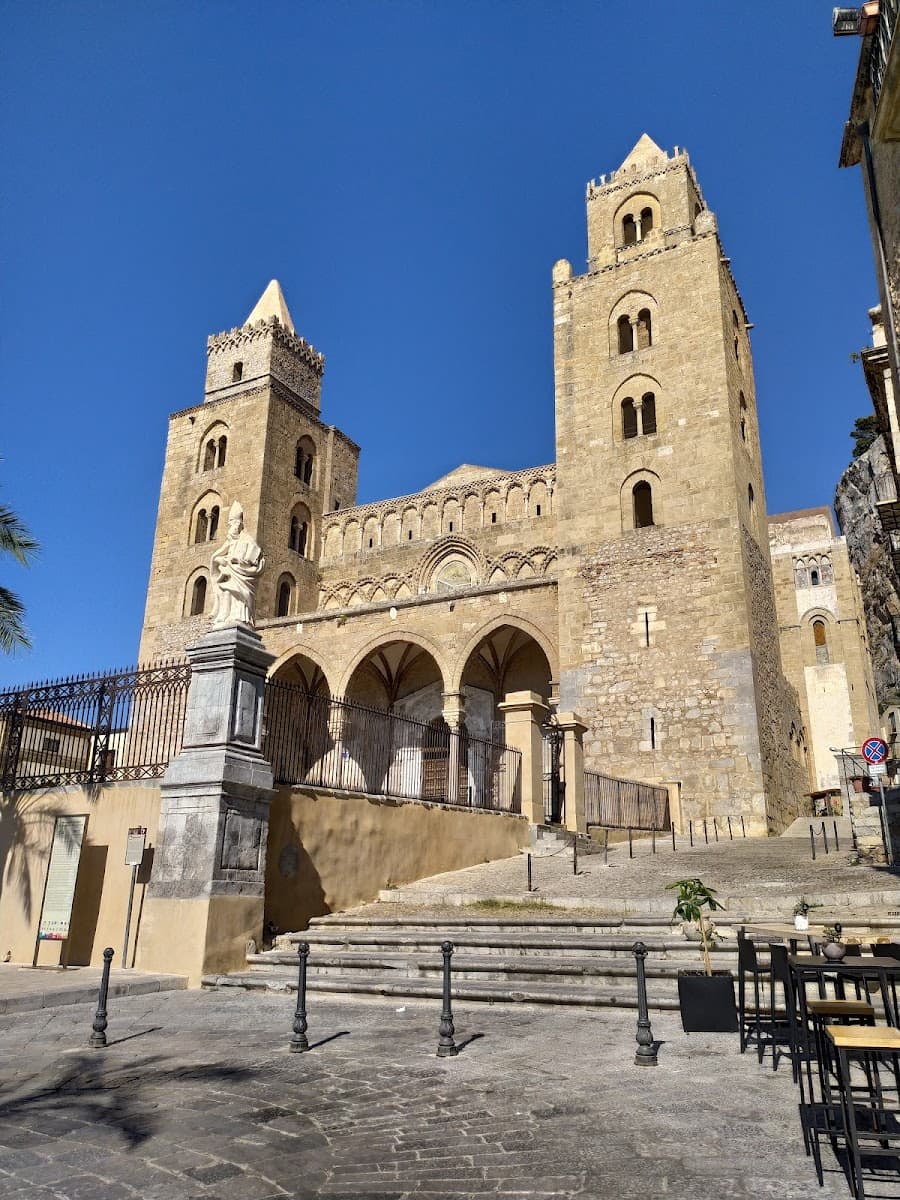
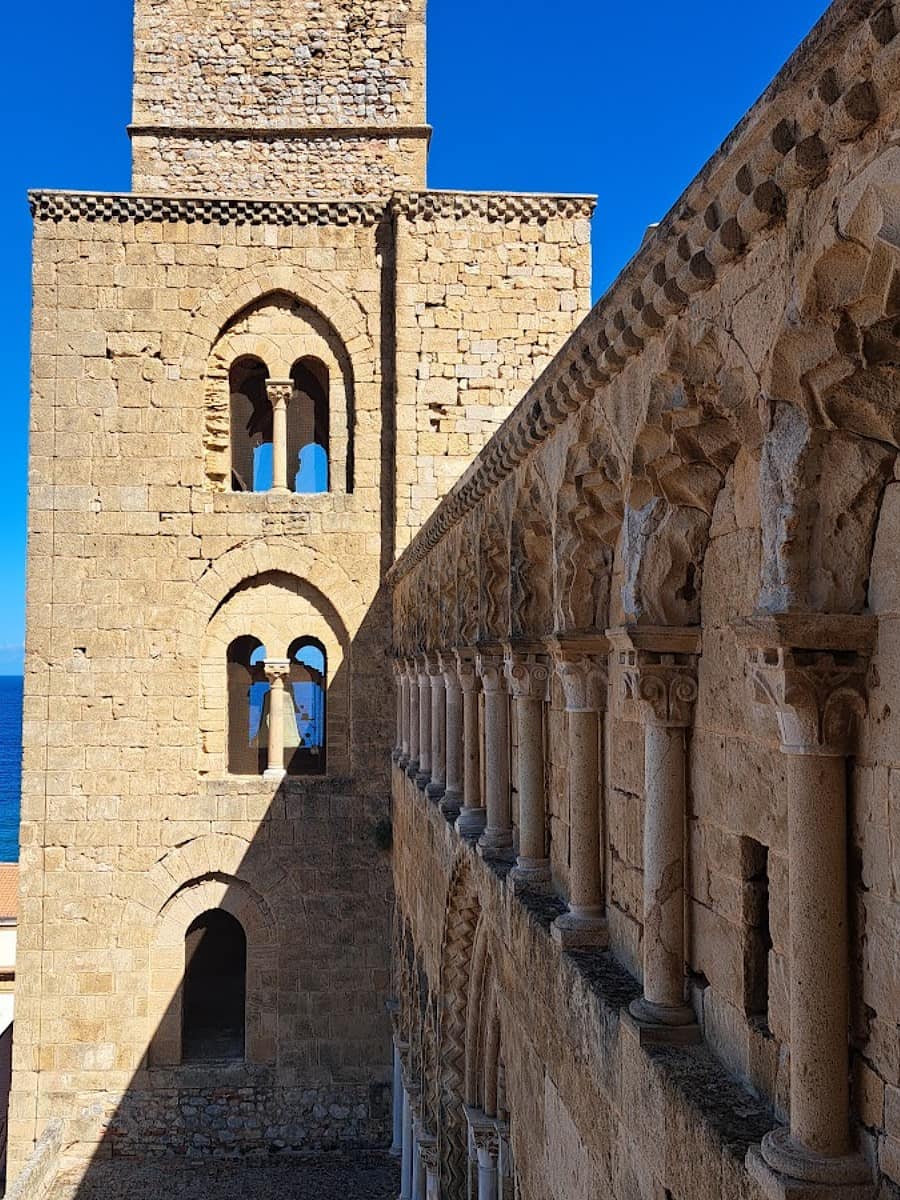
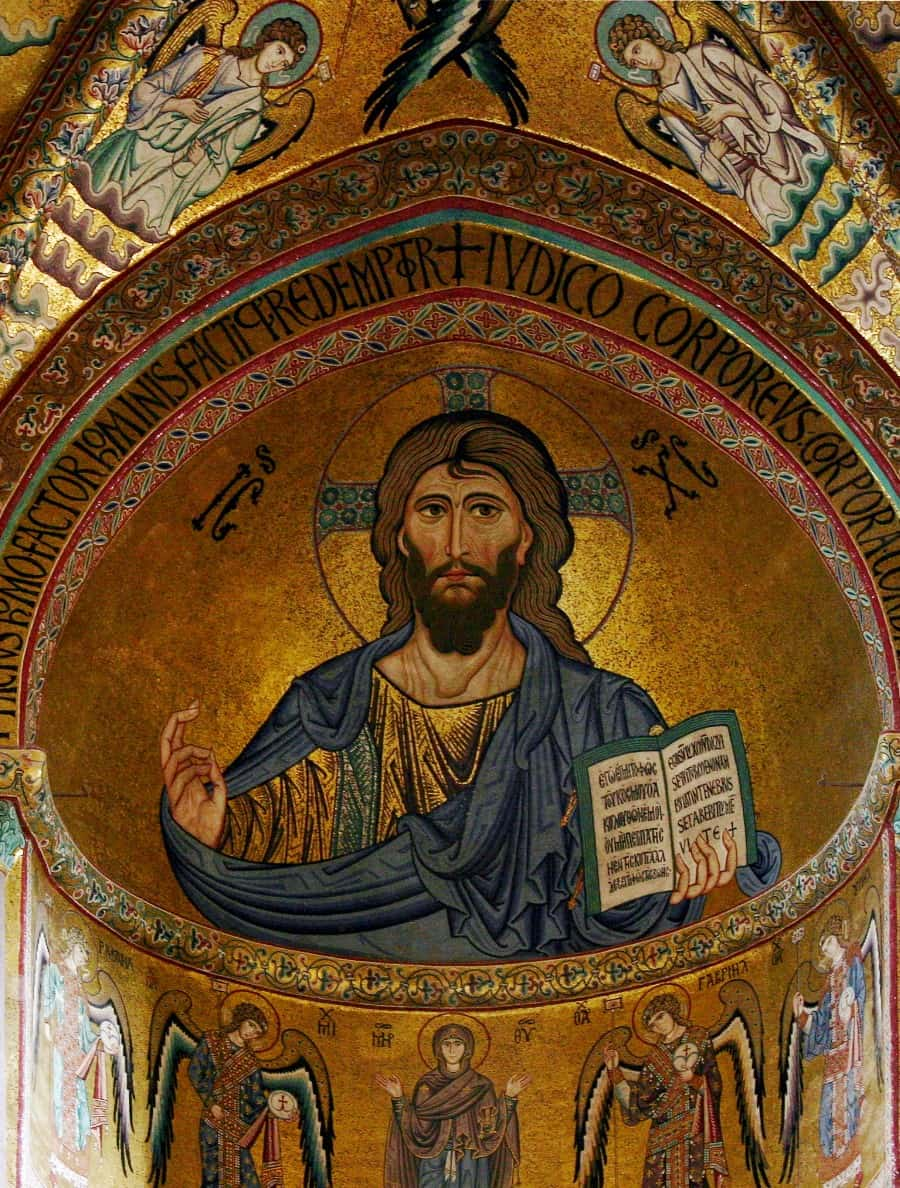
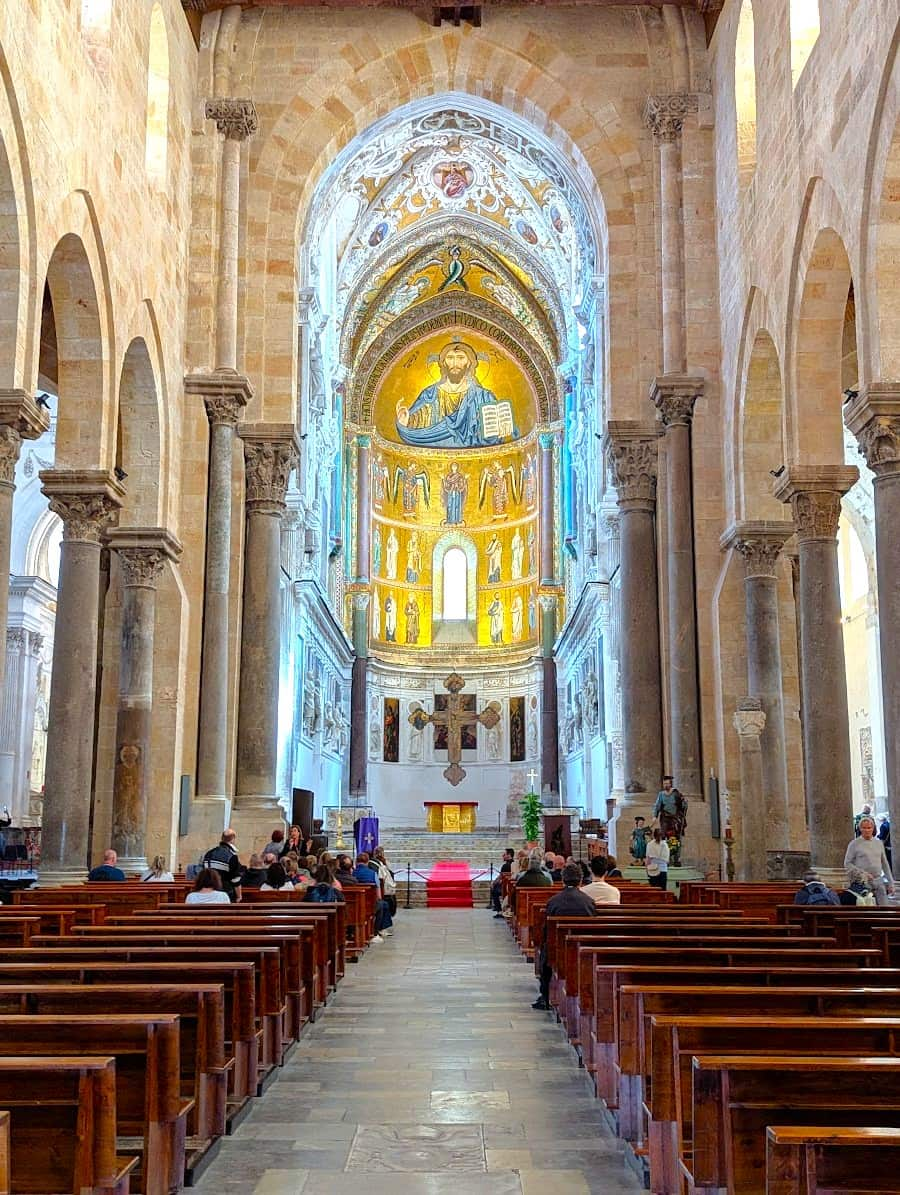
Byzantine Beauty. The cathedral’s interior took my breath away with its elaborate Byzantine mosaics – Sicily’s oldest and best preserved. The towering figure of Cristo Pantocratore (Christ All Powerful) in the central apse is truly mesmerizing, showing Christ holding an open Bible with inscriptions in both Latin and Greek.
Sacred Symbolism. What fascinated me most about the Pantocrator mosaic was the intentional color symbolism. Christ’s red vestment with gold highlights represents his divine nature, while the blue cloak symbolizes his humanity. His right hand makes a distinctive Byzantine gesture with three joined fingers (Unity and Trinity) and two raised fingers (human and divine nature).
Hidden Treasures. For just €5, I accessed the cathedral towers for spectacular views over Cefalù and the Tyrrhenian Sea. Another €5 ticket granted me entry to the treasury and cloisters, where I admired ancient columns supporting graceful Arab-Norman arches with finely carved capitals depicting everything from acrobats to Noah’s Ark.
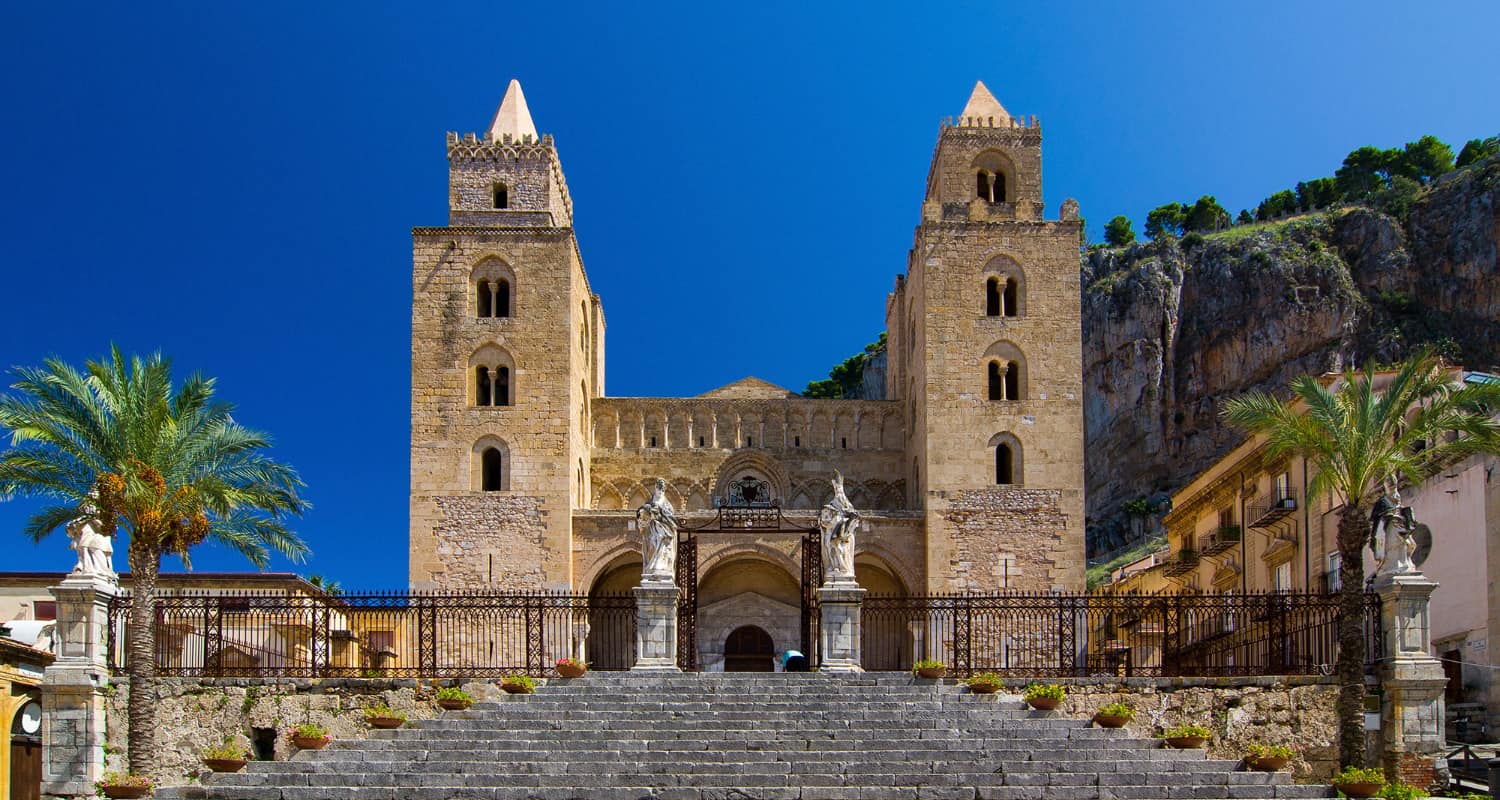
Practical Tip: Visit early in the morning to avoid crowds and get the best lighting for viewing the 650m² of golden mosaics. The special apse access ticket (€5) offers a privileged close-up view of the famous Cristo Pantocratore that’s absolutely worth it.
⭐ Best Activities
- Molfetta Private Tour: Artwork on the Sea – Explore Molfetta’s unique seafront artwork on this private tour.
2. Cefalù Coast and Beach
Golden Sands. Cefalù’s 1.6-kilometer stretch of golden beach is undoubtedly one of Sicily’s finest, with crystal-clear turquoise waters perfect for swimming. I found the main beach (Spiaggia del Porto Vecchio) particularly charming as it sits right in the historical center, lined with beautiful orange-roofed houses and dramatic views of La Rocca Mountain.
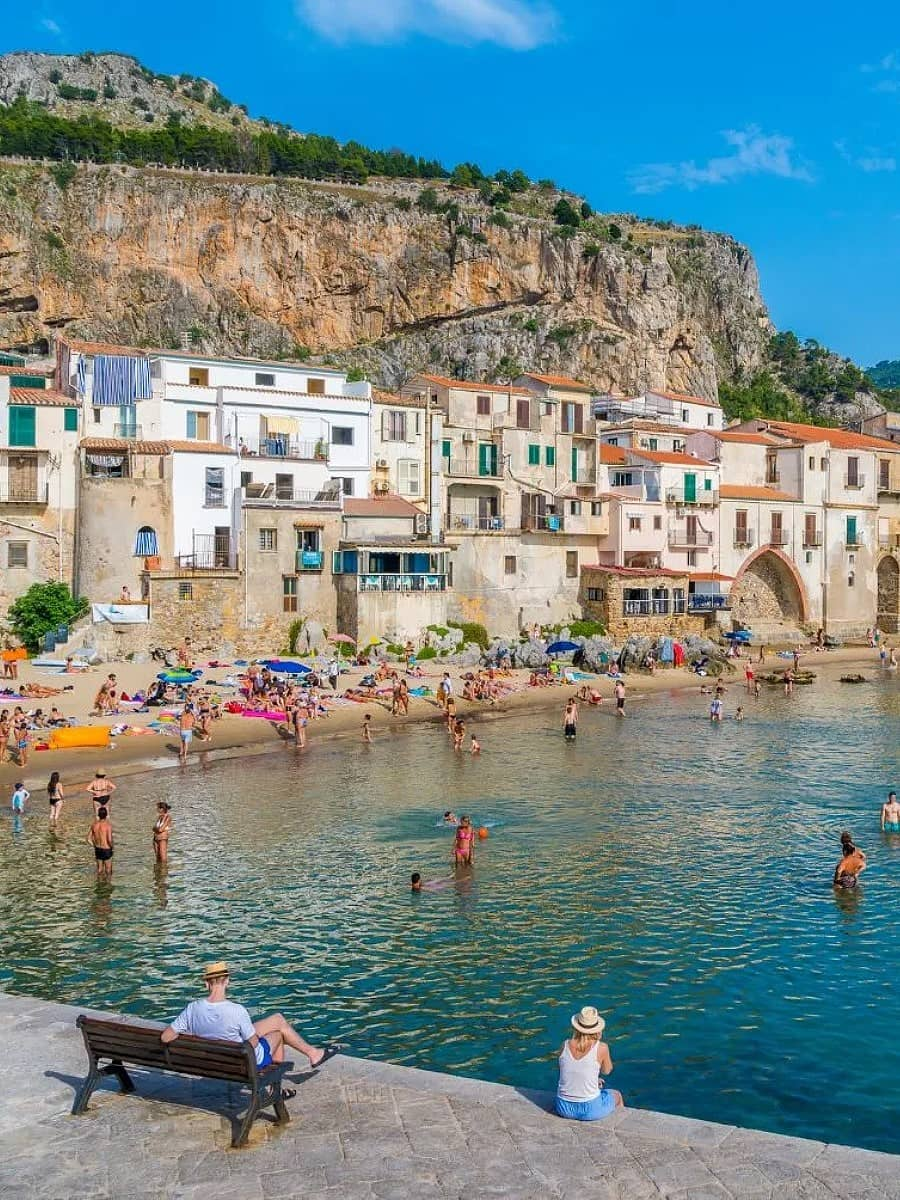
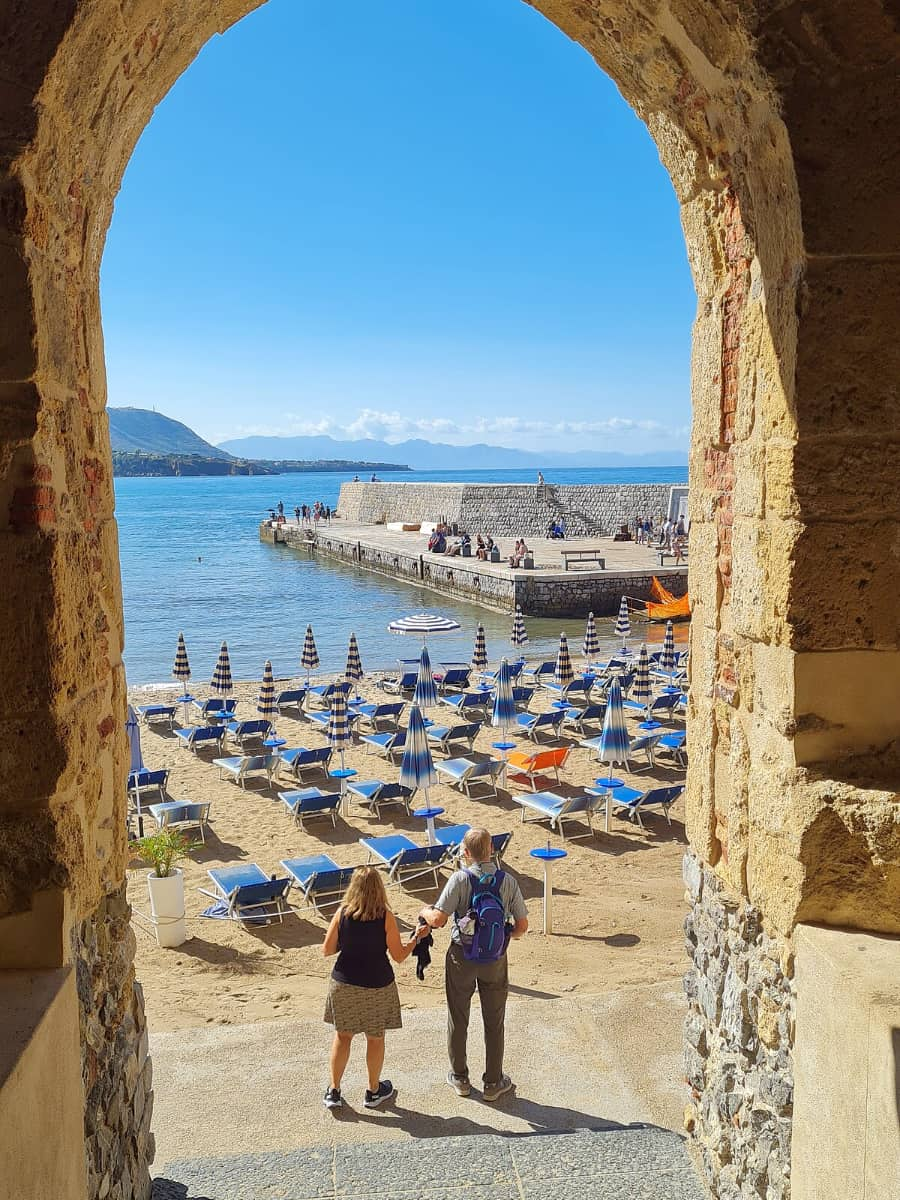
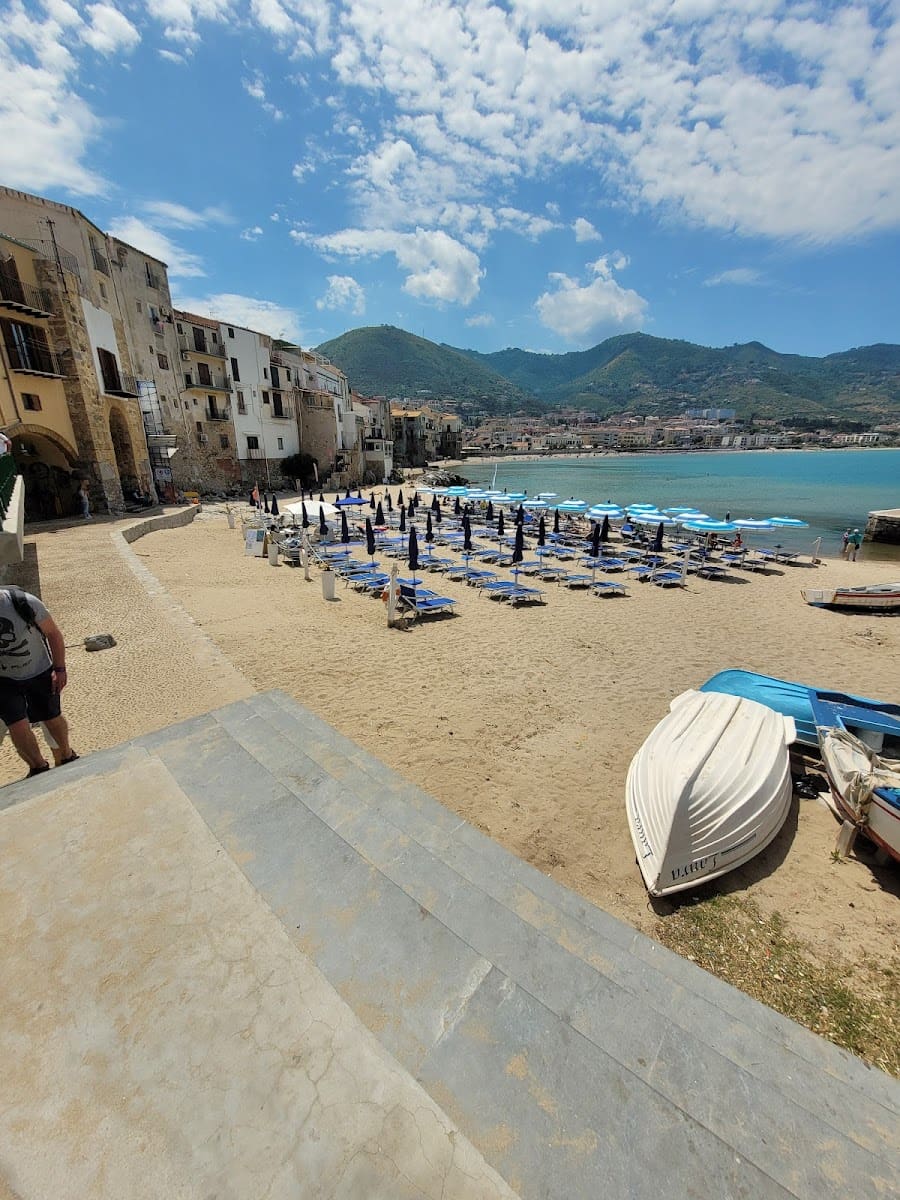
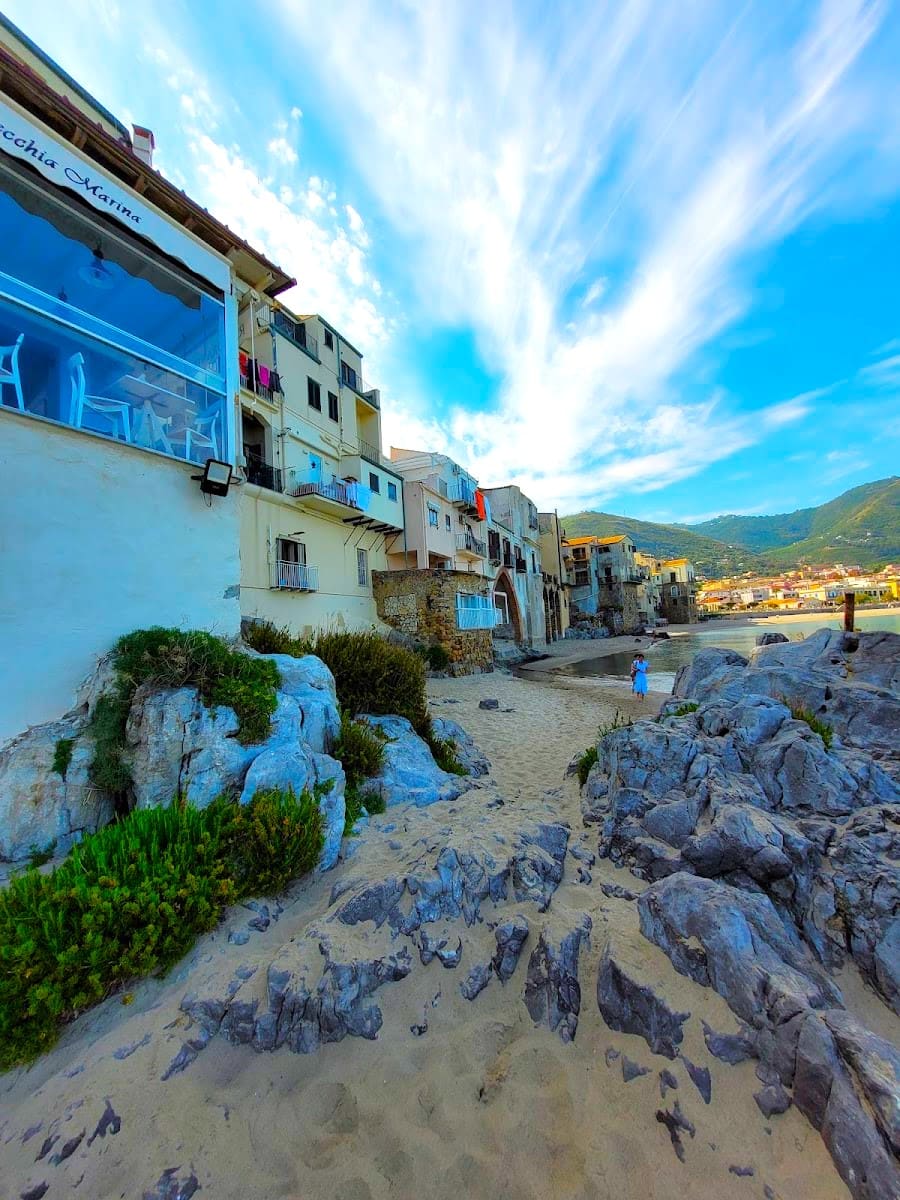
Beach Options. During my visit, I discovered several beach areas to enjoy:
- Spiaggia del Porto Vecchio (central beach)
- Caldura Beach (secluded white sand beach)
- Cefalù Beach (1.5km stretch along western coastline)
Water Activities. Beyond sunbathing, I tried several exciting water activities:
- Guided paddleboarding with Piranha Sup Surf School
- Coastal sightseeing cruise with swimming stops
- Snorkeling to spot colorful local fish called “occhiate”
Beach Facilities. The main beaches offer excellent amenities including public showers, sunbed rentals, and beachfront bars. During high season (June-August), expect to pay up to €35 ($38.65) for a sunbed and umbrella rental.
Local Tip: For a unique swimming experience, head to Porta Pescara (also called Porta Marina), a 12th-century gate on the western side of Old Town. The attached pier provides perfect spots for jumping into deep water, with ladders installed for climbing back up. I found this area less crowded than the main beaches, even during peak season.
3. La Rocca di Cefalù
The Ancient Citadel. Hiking to the top was one of the highlights of my visit. This ancient citadel, perched atop a limestone outcrop, offers breathtaking panoramic views of the town and the Tyrrhenian Sea. The hike itself is moderately challenging, taking about 30 minutes to ascend, but the scenery and historical significance make it well worth the effort.
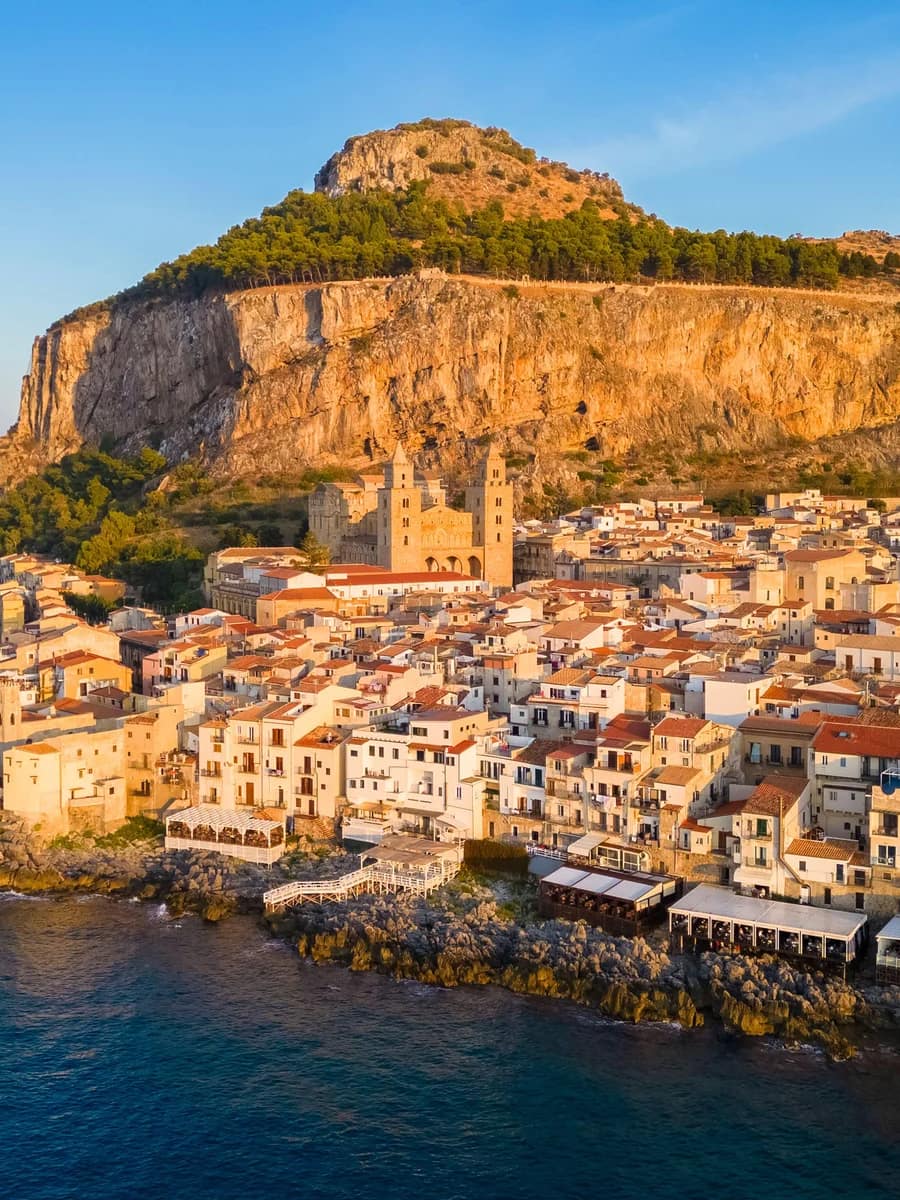
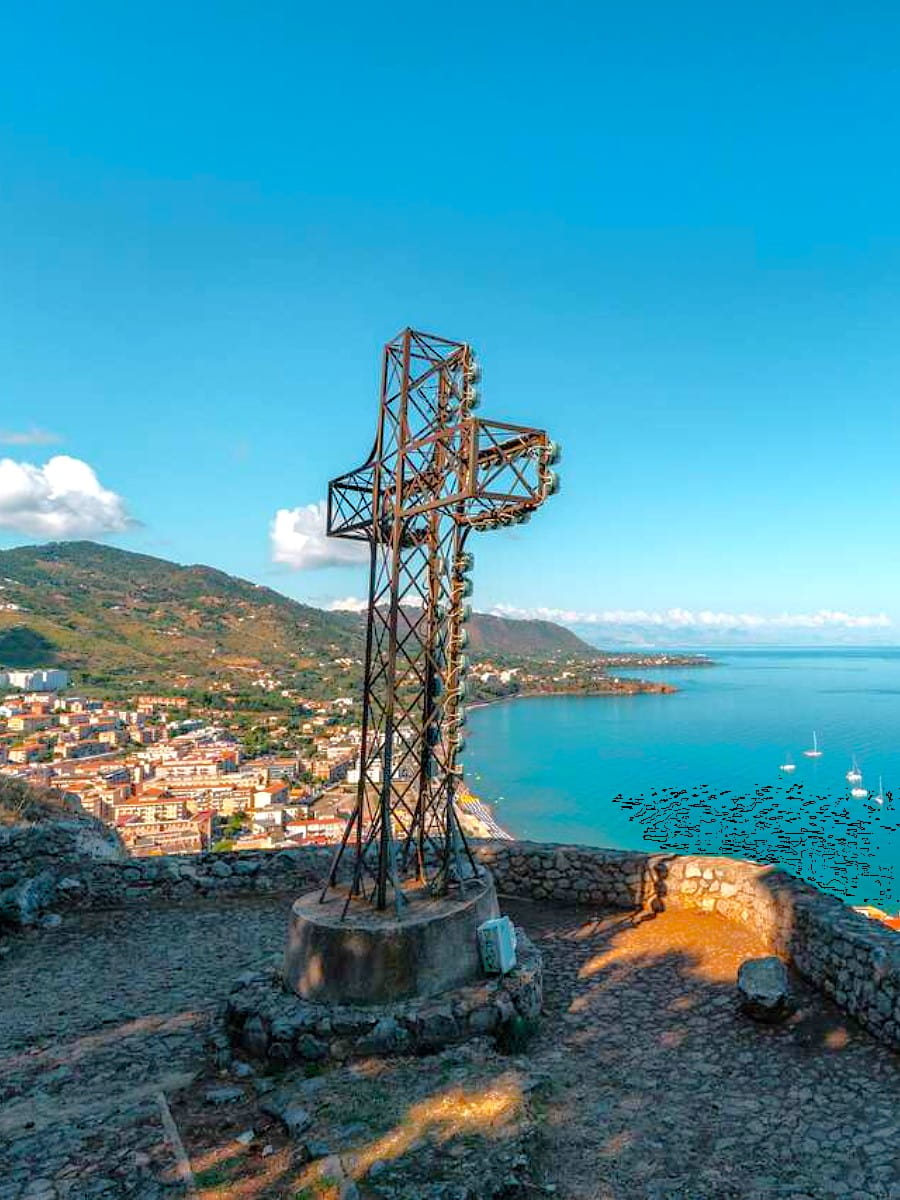
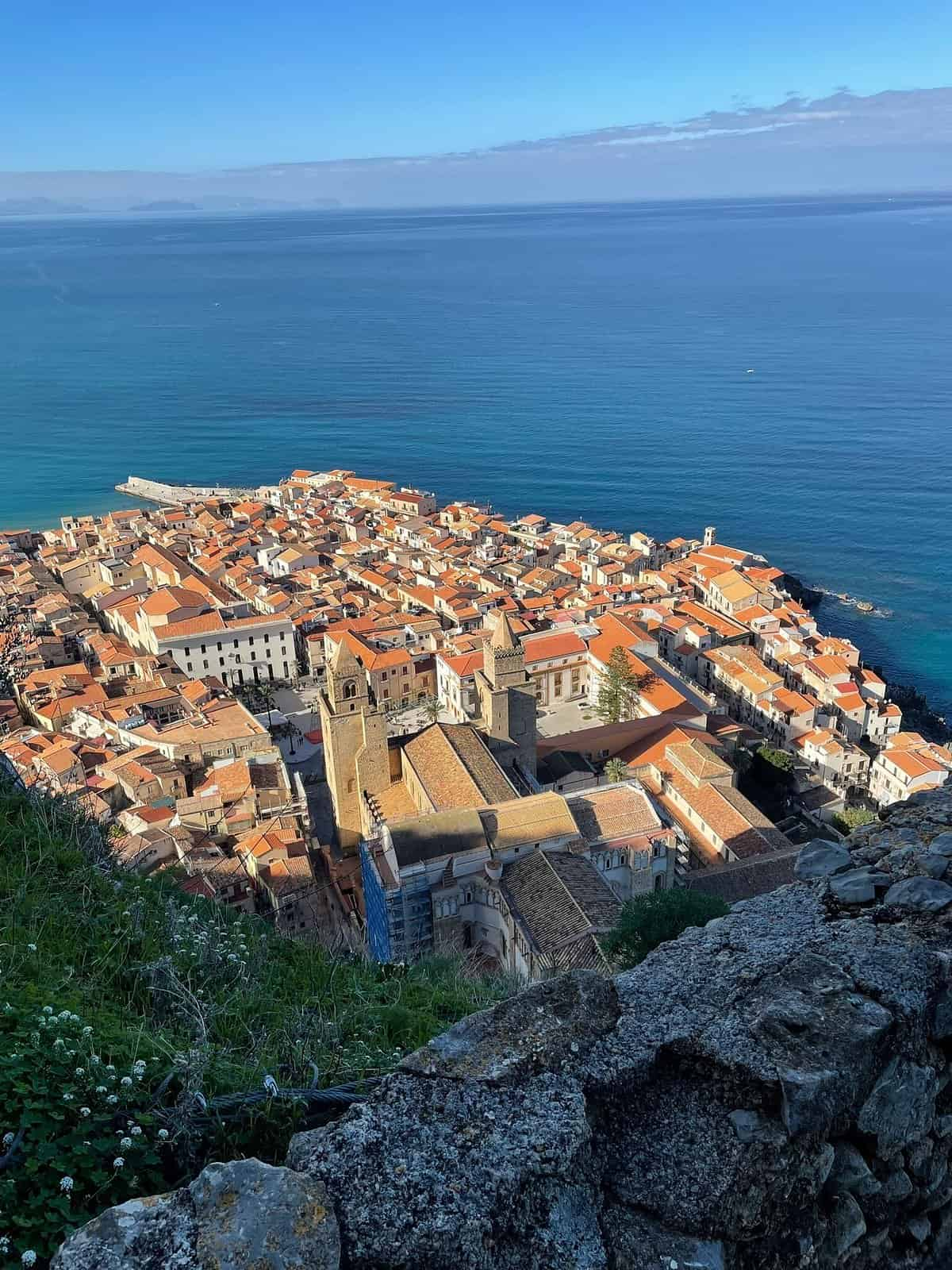
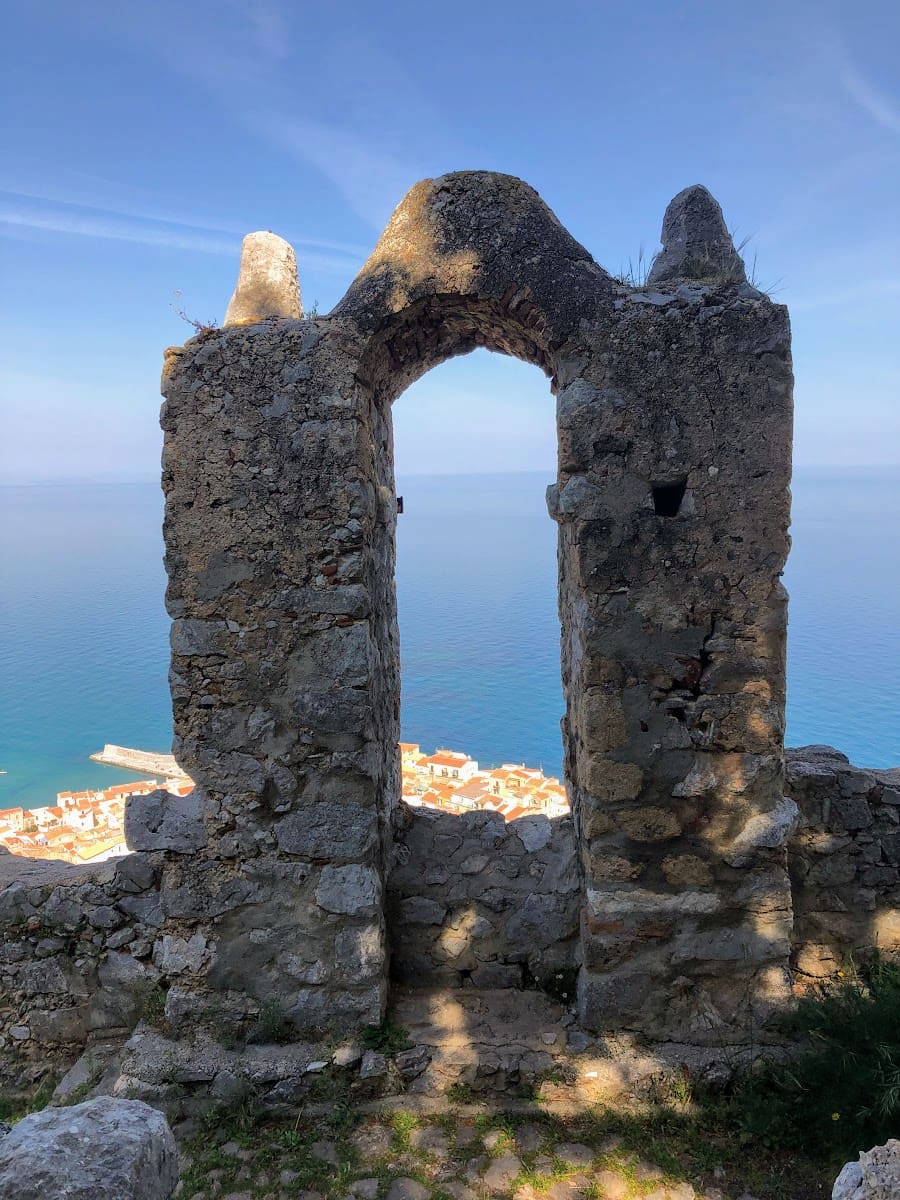
Historical Landmarks. Along the way, I encountered several historical sites, including the remains of the Temple of Diana, a 5th-century BC structure that predates the Norman era. The views from the top are stunning, with Cefalù’s historic center spread out below and the Madonie Mountains rising in the distance.
Wildlife and Nature. As I climbed the Rocca, I was surprised by the abundance of Mediterranean flora and fauna. The trail is lined with wildflowers, aromatic herbs like rosemary and thyme, and even olive trees. I spotted lizards basking in the sun and heard the chirping of local birds, which added to the natural charm of the hike. For nature enthusiasts, this is more than just a historical site—it’s a peaceful escape into Sicily’s natural beauty.
4. Lavatoio Medievale
Medieval Laundry. The Lavatoio Medievale, or medieval laundry, is a fascinating piece of Cefalù’s history. This ancient washing place, built in the 16th century, showcases how locals once did their laundry using natural springs and stone basins. The site is remarkably well-preserved, offering a glimpse into the daily lives of medieval residents.
Historical Significance. What struck me was the ingenuity of the system, which utilized gravity and natural water flow to facilitate washing. The site is not only a testament to the town’s resourcefulness but also a reminder of the importance of water in medieval life.
Atmosphere and Photography. The Lavatoio Medievale isn’t just a historical site—it’s also a photographer’s dream. The soft light filtering through the arches creates a magical atmosphere, while the sound of running water adds a soothing backdrop. I found this spot to be one of the most peaceful corners of Cefalù, perfect for taking a break from sightseeing or capturing unique photos that reflect the town’s medieval charm.
Visiting Tips:
- The site is easily accessible from the historic center, located near the cathedral.
- Admission is free, making it a great stop for families or those on a budget.
- Take a moment to appreciate the intricate stone carvings and the tranquil atmosphere of the area.
⭐ Best Activities
- Cefalù's Hidden Corners and Legends Tour – Discover the lesser-known stories and sites of Cefalù on this guided tour.
5. Mandralisca Museum
Artistic Gems. The Mandralisca Museum is a treasure trove of Sicilian culture, but its crown jewel is the Portrait of an Unknown Man by Antonello da Messina, painted circa 1465. This enigmatic portrait captures the subtle smile and piercing gaze of its subject, often compared to Da Vinci’s Mona Lisa. I found it fascinating how this Renaissance masterpiece reflects the complexity and humanity of Sicilian identity.
Eclectic Collections. Beyond the portrait, the museum houses an impressive array of artifacts collected by Baron Enrico Piraino di Mandralisca. Highlights include ancient Greek vases, coins from Selinunte, and a cratere depicting a tuna fish vendor—a nod to Sicily’s maritime history. Each piece tells a unique story about the island’s rich heritage.
Visiting Details. The museum is open daily from 9:00 AM to 6:00 PM, with an affordable ticket price of €8 ($8.80). It’s located near Cefalù’s historic center, making it an easy addition to your itinerary. I recommend setting aside at least an hour to fully appreciate the exhibits.
Cultural Experience. What struck me most was the intimate atmosphere of the museum—it feels like stepping into Baron Mandralisca’s personal study. The library section, filled with rare books and manuscripts, was particularly moving and gave me a deeper appreciation for Sicily’s intellectual legacy.
6. Duomo di Cefalù
Architectural Marvel. The Duomo di Cefalù is a stunning example of Norman architecture, built by King Roger II in 1131 as part of his vow to the Holy Savior after surviving a shipwreck. Its fortress-like facade, flanked by two imposing towers with distinct spires, dominates the skyline and symbolizes both religious and royal authority.
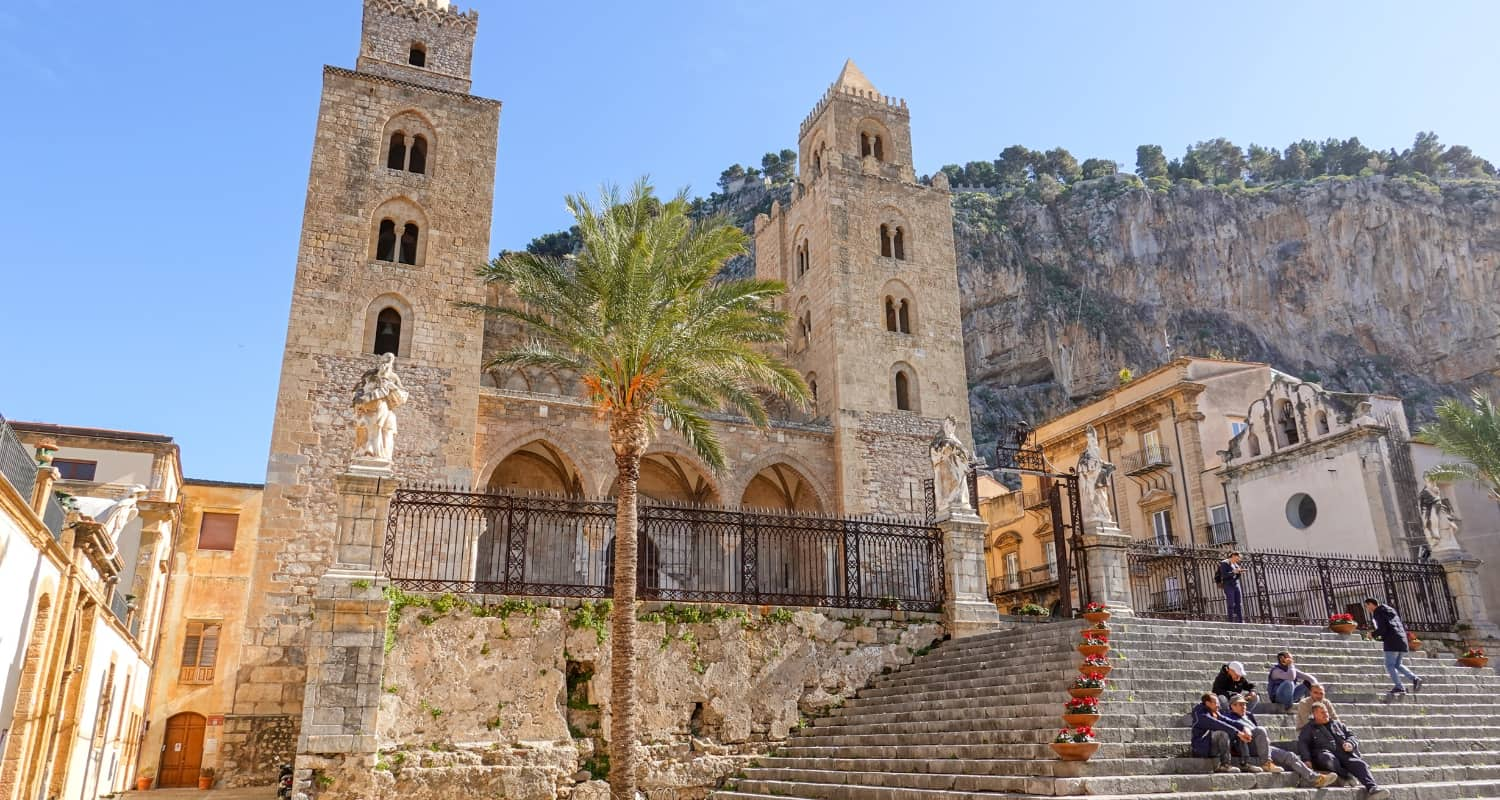
Byzantine Splendor. Inside, I was captivated by the cathedral’s apse mosaics, which cover over 600 m² and feature intricate depictions of saints and religious symbols. The central figure is Cristo Pantocratore (Christ All Powerful), whose solemn expression and vibrant colors left me awe-struck. These mosaics were crafted by Constantinople artisans between 1148 and 1166.
Historical Significance. The cathedral has a fascinating backstory tied to Sicily’s political history. Originally intended as a mausoleum for King Roger II and his family, its strategic location also served as a statement of Norman power over the island.
Hidden Corners. Don’t miss the cloisters adjacent to the cathedral, which date back to the 12th century. Here, I admired medieval capitals adorned with intricate carvings of animals and biblical scenes—a quiet retreat from the grandeur of the main nave.
Admission Info. Entry to the cathedral is free for general visits, but access to specific areas like the cloisters or towers requires a ticket (€5/$5.50). Guided tours are available for those who want deeper insights into its history and symbolism.
7. Porta Pescara and Porta Marina
Historical Gates. Cefalù’s medieval charm is beautifully preserved in its historical gates, with Porta Pescara being the most iconic. Also known as Porta del Vicerè or Porta sul Mare, this gate is the only surviving entrance from the original four that once protected the town from pirate attacks. It features a Gothic arch and the coat of arms of the kings of Sicily, reflecting its late medieval style.
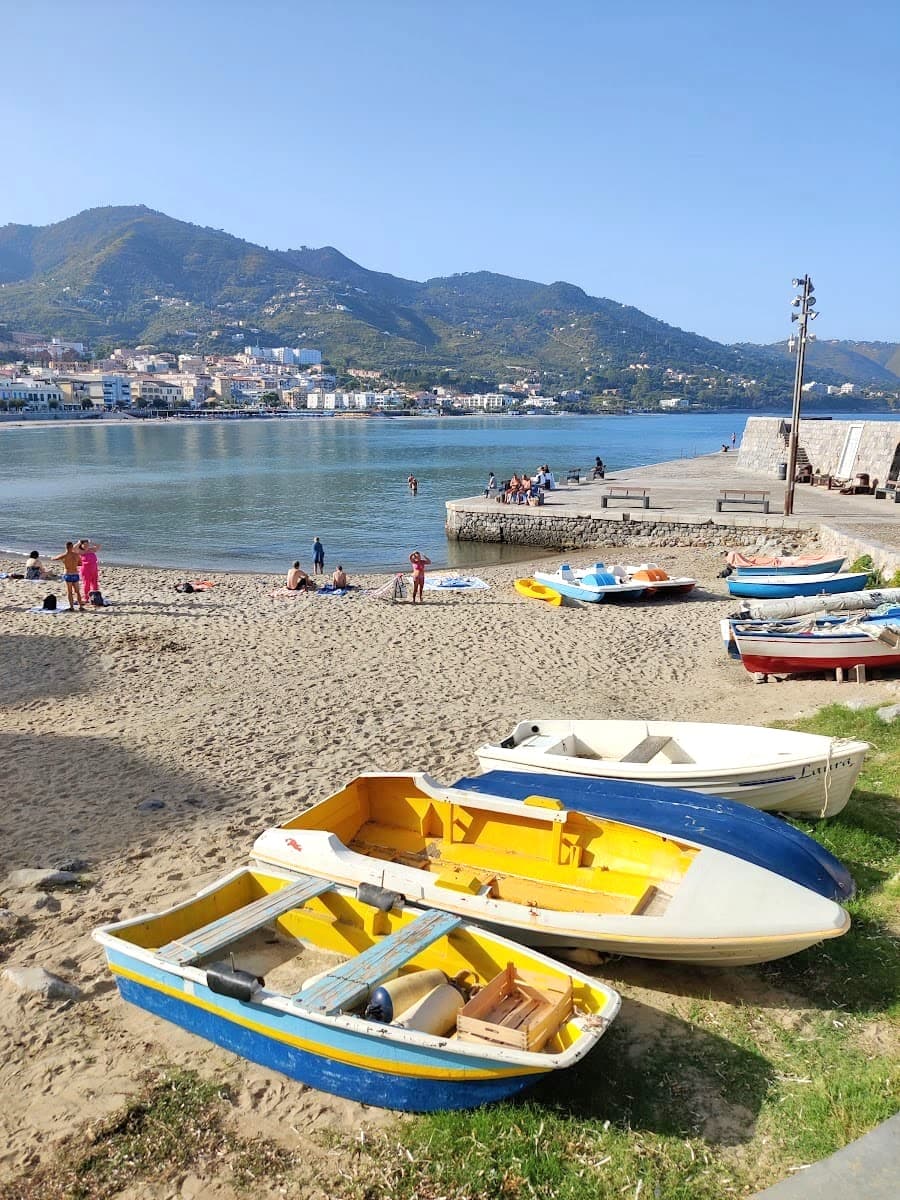
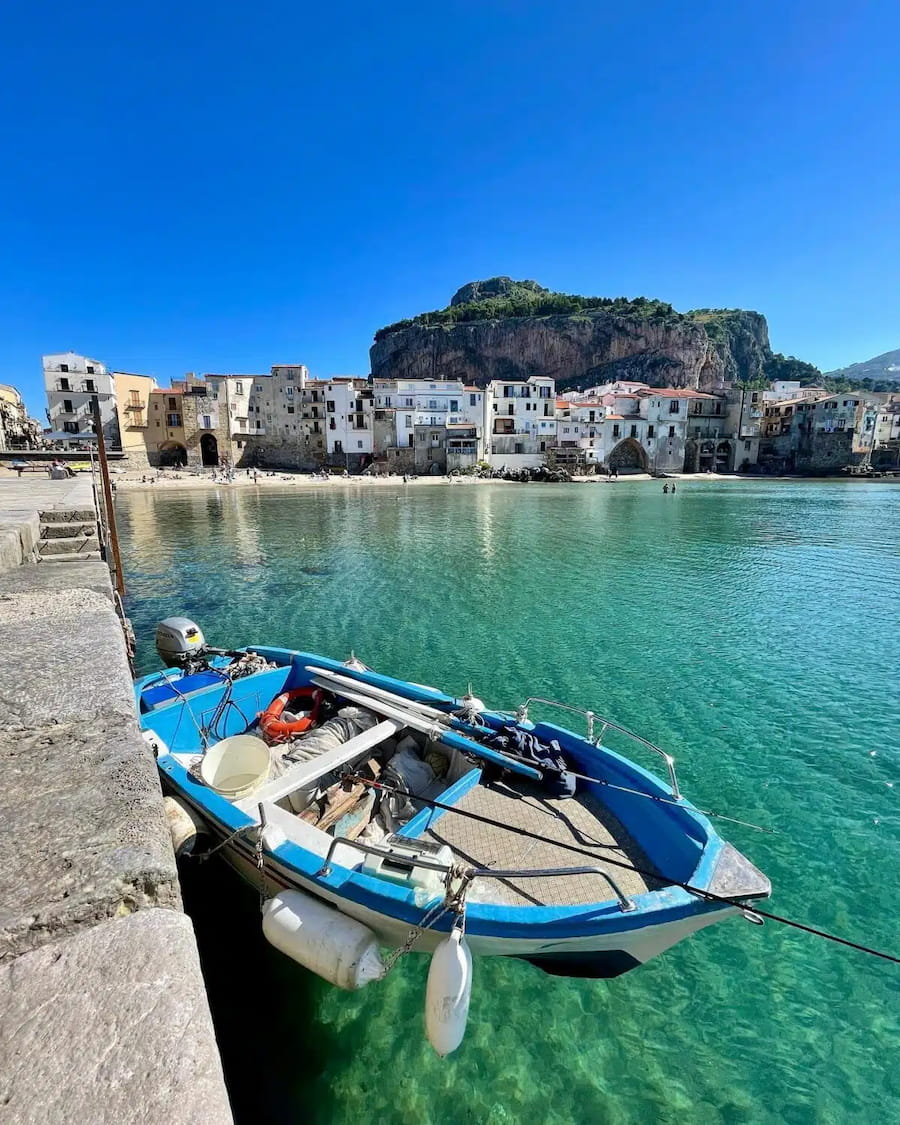
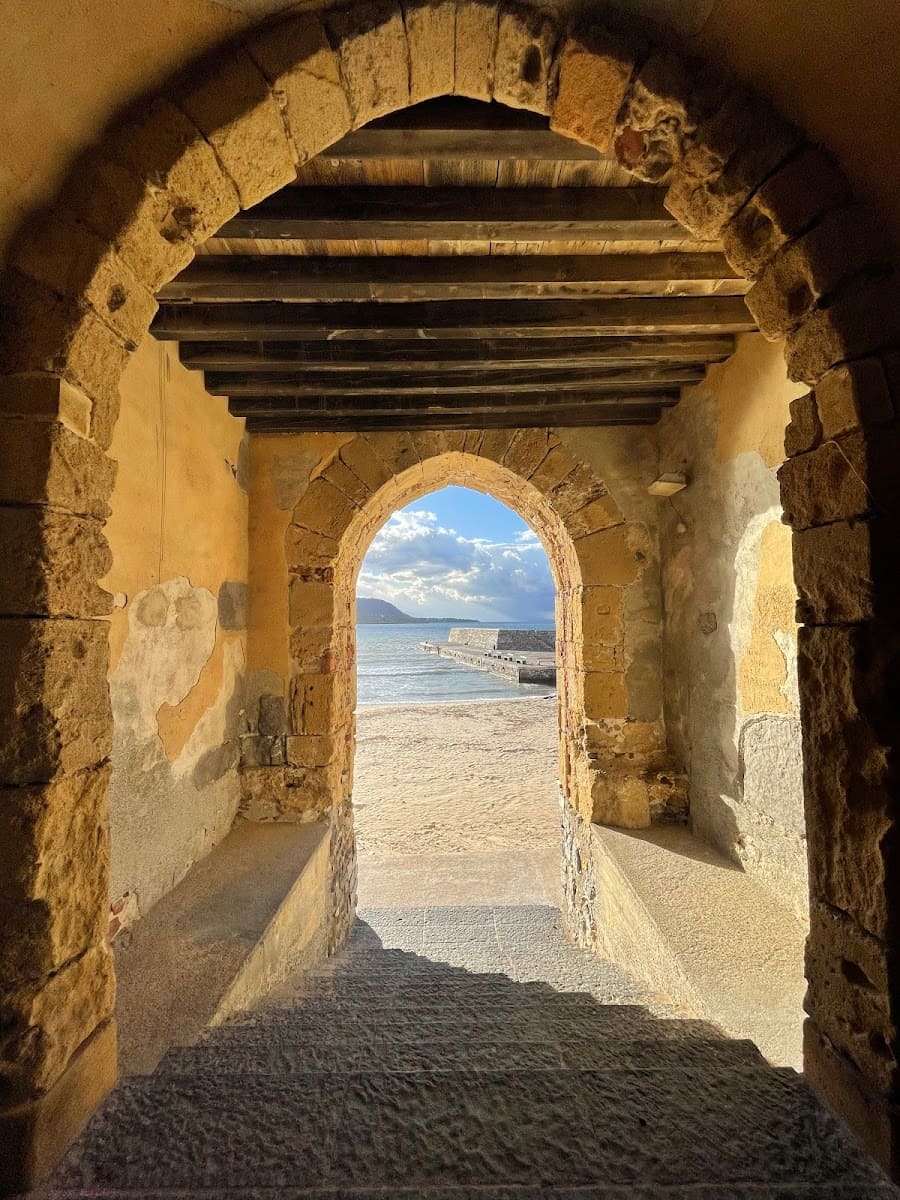
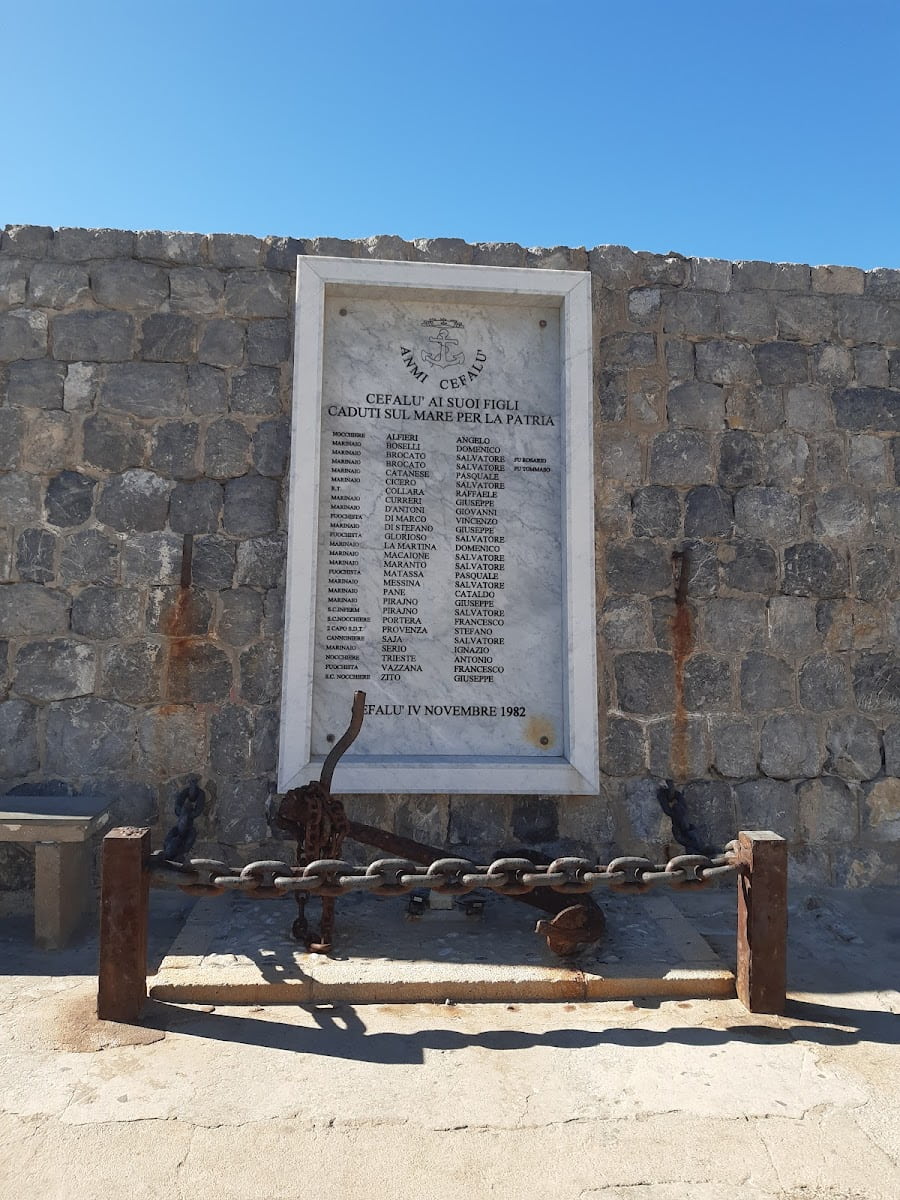
Photography Spot. Porta Pescara is a photographer’s dream, framing the picturesque tourist port of Cefalù like a postcard. It’s a must-visit spot for capturing stunning views, especially during sunset when the light is golden. The gate leads to the colorful fishermen’s quarter, where scenes from the film Cinema Paradiso were shot.
Historical Significance. The gate underwent significant renovations in 1570 under the viceroy Francesco Ferdinando d’Avalos, who was also the Marquis of Pescara, hence its name. This historical site offers a glimpse into Cefalù’s strategic importance and defensive structures over the centuries.
Nearby Attractions:
- Porta Marina: Another charming gate that leads to the fishermen’s quarter.
- Cefalù Cathedral: A stunning example of Norman architecture nearby.
- Lavatoio Medievale: A preserved medieval laundry site.
8. Sanctuary of Gibilmanna
Christian Heritage. Located about 15 km from Cefalù, the Sanctuary of Gibilmanna is a revered Christian site with a rich history dating back to the Benedictine era. It’s believed to be one of the six monasteries commissioned by Pope Gregory the Great. The sanctuary is nestled on the slopes of Pizzo Sant’Angelo, offering breathtaking views of the surrounding landscape.
Cultural Significance. The sanctuary has undergone several transformations over the centuries, including a Neo-Gothic façade reconstruction in 1907. It houses a beautiful altarpiece crafted by the Gagini family and a museum showcasing art from local convents, including paintings, vestments, and a wooden organ.
Visiting Gibilmanna:
- Location: On the slopes of Pizzo Sant’Angelo.
- History: Dates back to the Benedictine era.
- Attractions: Museum of Franciscan Presence, altarpiece by Gagini family.
- Tips: Follow signs carefully as GPS may lead to poor roads.
9. Acqua Verde
Water Park Fun. Acqua Verde is a vibrant water park located near Cefalù, offering a fun-filled day for families and thrill-seekers alike. This colorful park features a variety of attractions, including a multipista with six racing lanes, a Canyon River, and a piscina con onde (wave pool) that simulates ocean waves. The Baby Zone is designed for younger children, with a Galeone dei Pirati (Pirate Ship) featuring five slides and a spray area for endless fun.
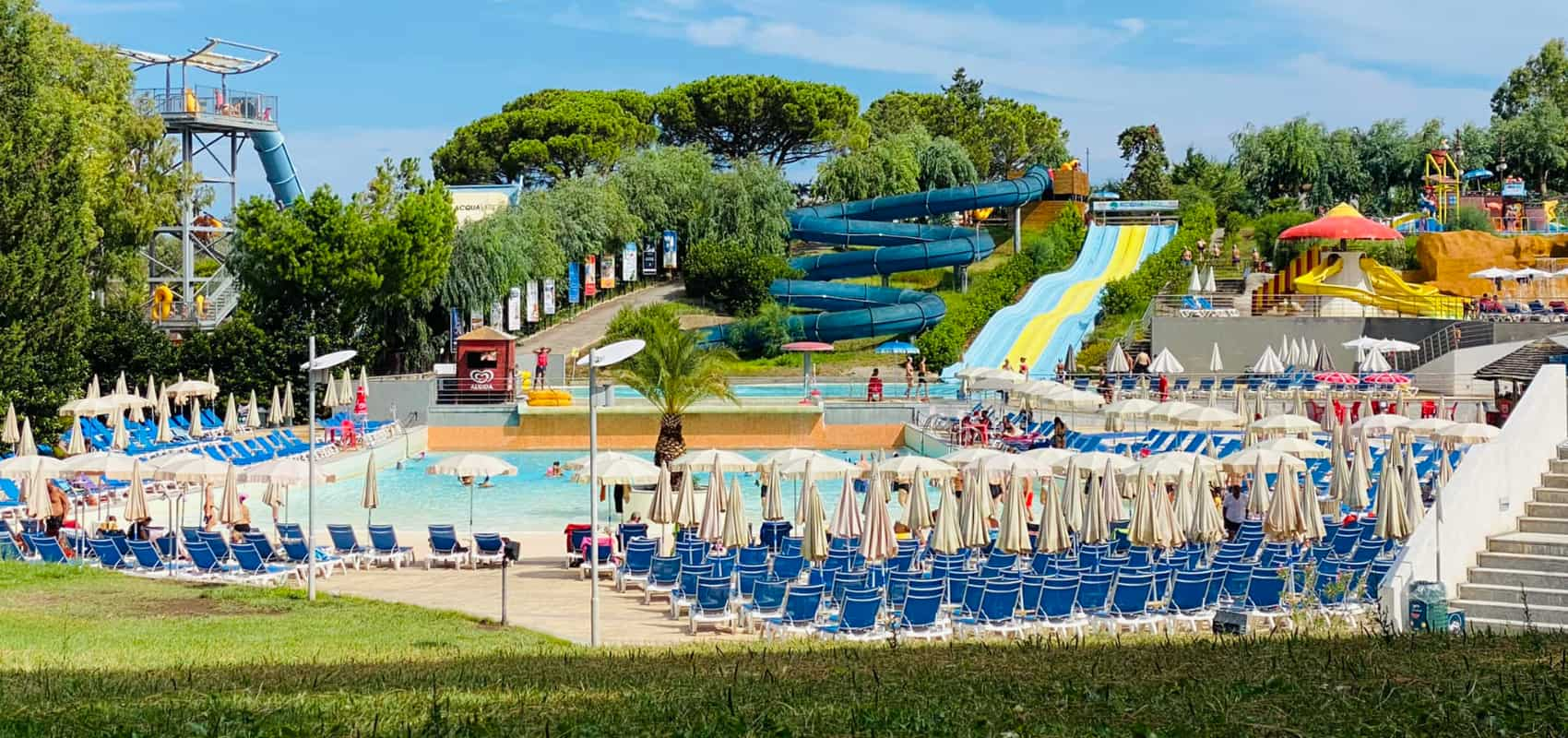
Relaxation and Dining. Beyond the adrenaline-packed rides, Acqua Verde also offers relaxation options like vasche idromassaggio (hot tubs) and a food area where you can enjoy snacks or drinks by the pool. The park is set amidst lush greenery, providing a serene backdrop to your aquatic adventures.
Accessibility and Planning. Acqua Verde is wheelchair accessible, with a parking lot designed for visitors with mobility needs. It’s advisable to purchase tickets online in advance to ensure entry, especially during peak summer months.
10. Bastione di Capo Marchiafava
Historic Fortification. The Bastione di Capo Marchiafava is an ancient defensive structure in Cefalù, completed in 1642. This polygonal bastion extends into the sea, serving as the northernmost point of the town’s fortifications. Its name combines the Arabic term Marsa (port) with the Sicilian word favara (spring), reflecting the presence of a well in the area.
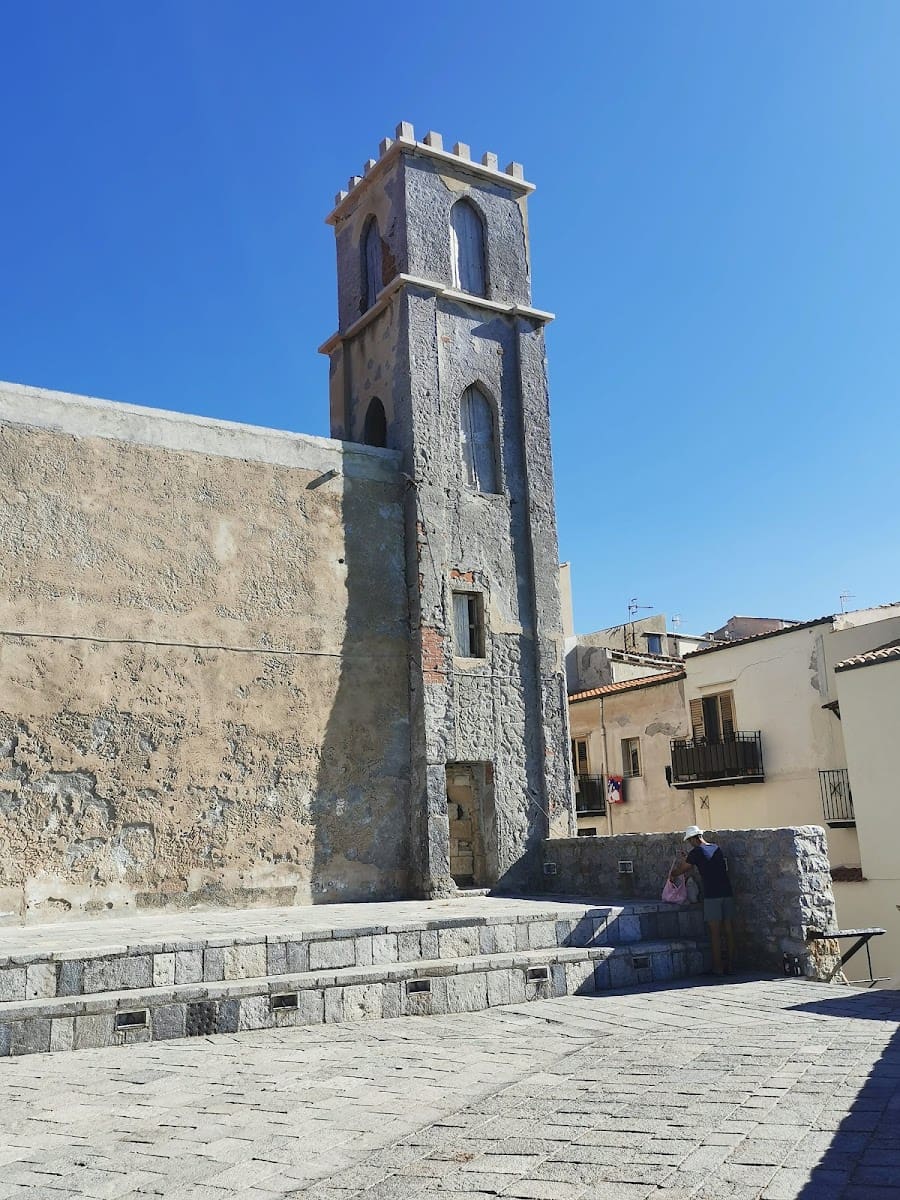
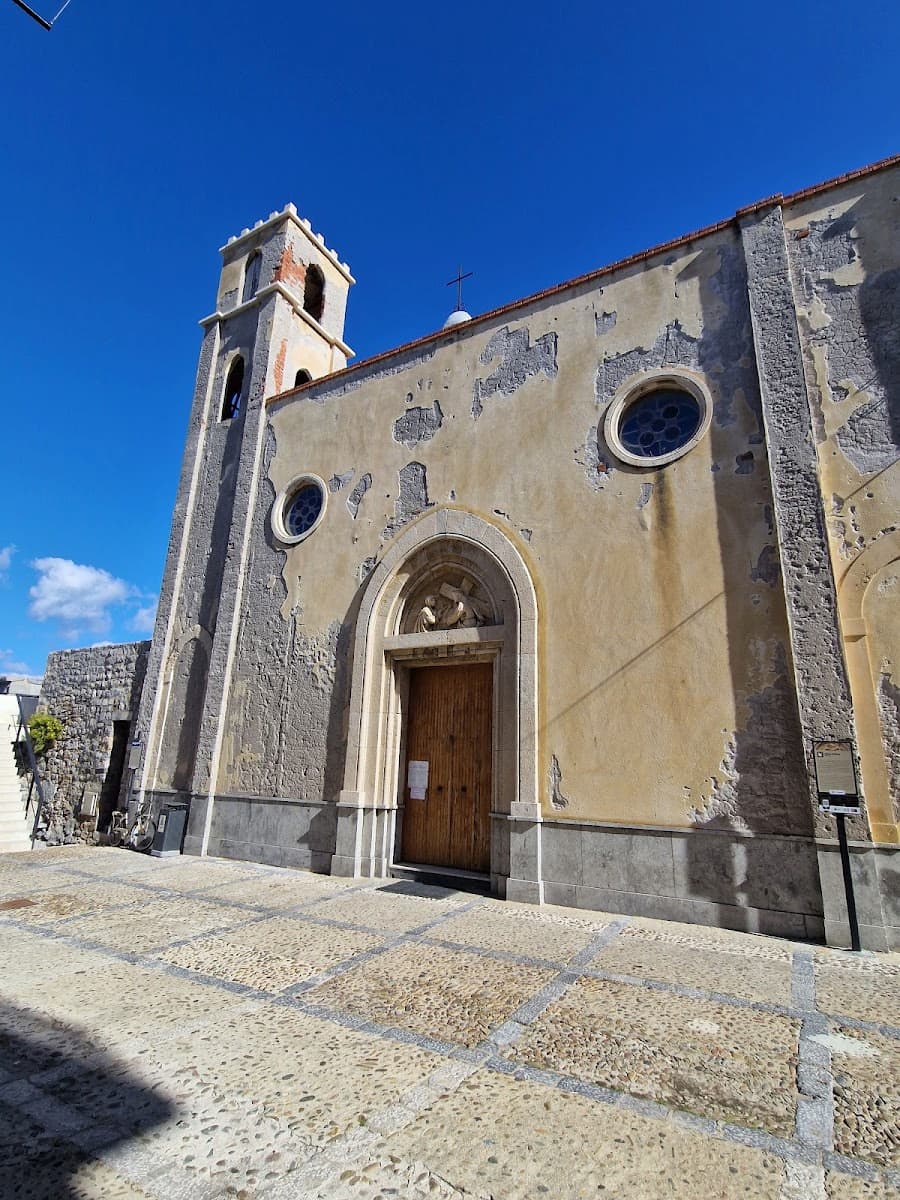
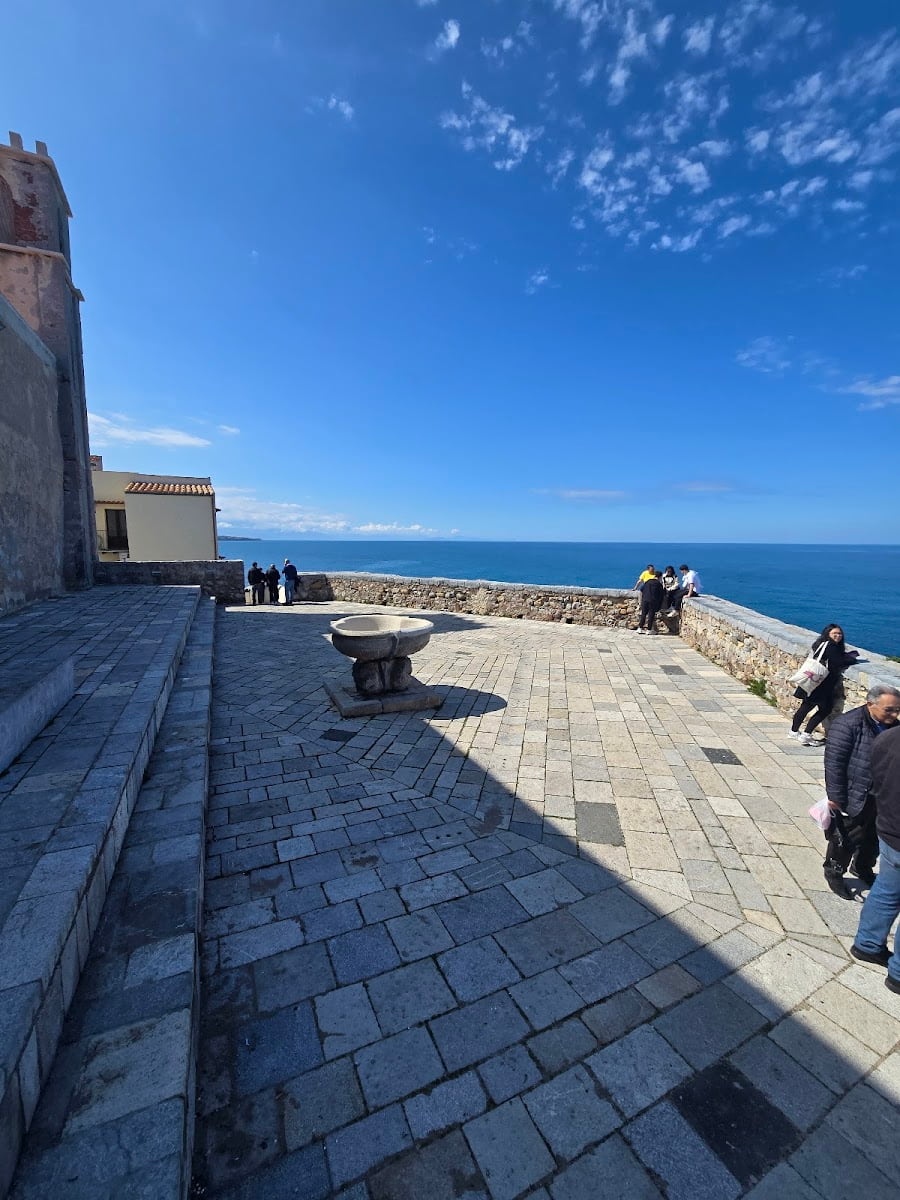
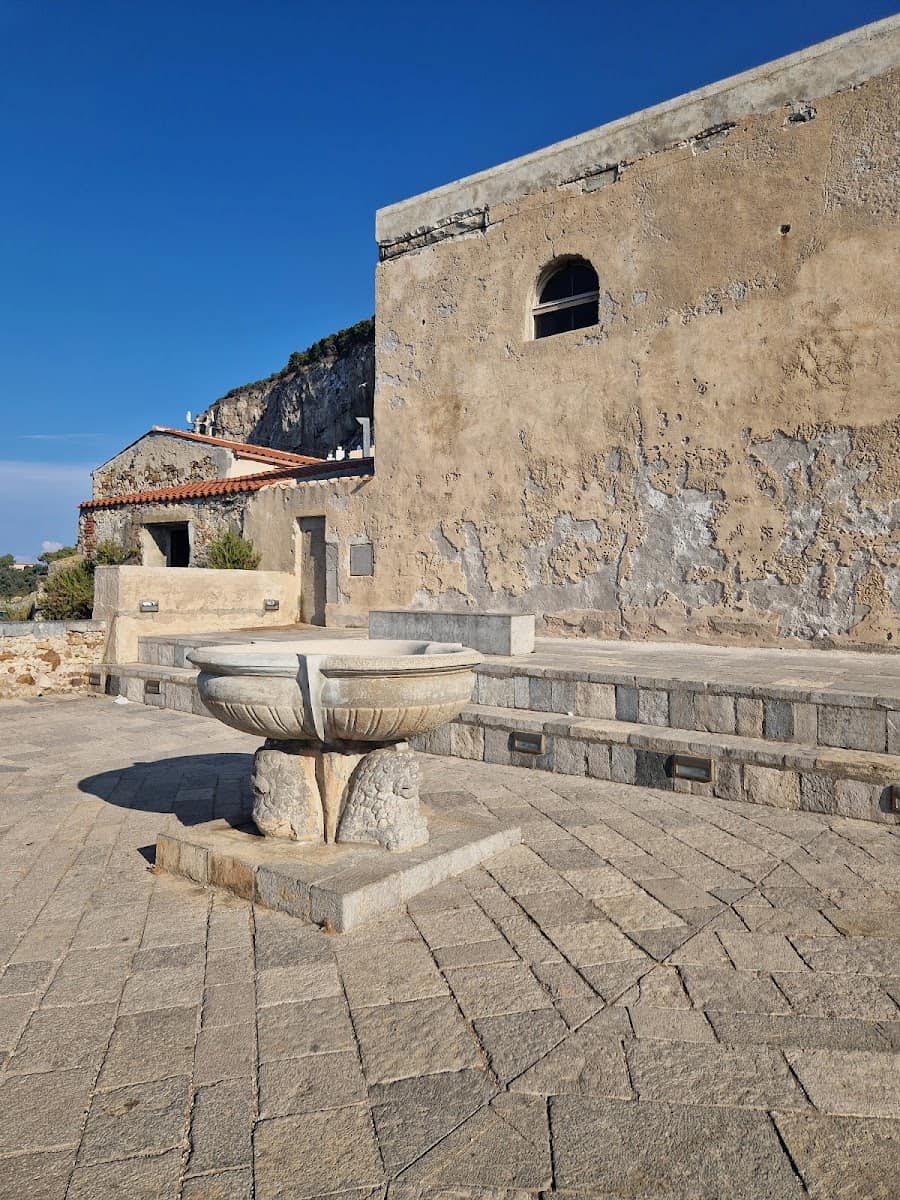
Panoramic Views. Visitors can enjoy stunning views from the bastion, including the Gulf of Cefalù and, on clear days, the Aeolian Islands. It’s a perfect spot for photography, especially during sunset when the light is golden. The bastion also marks the beginning of the Cefalù Cliff Path, offering a scenic walk along the sea.
Cultural Significance. The bastion is part of Cefalù’s rich history, providing insight into the town’s strategic importance as a fortified settlement. Its unique architecture and scenic location make it a must-visit for anyone interested in history and natural beauty.
Exploring Cefalù’s Old Town
1. Historic Center of Cefalù
Charming Streets. The historic center of Cefalù is a treasure trove of charm and history, with Corso Ruggero being its vibrant heart. This main thoroughfare is lined with cafes, restaurants, and boutique shops selling everything from local crafts to Sicilian ceramics. The street is perfect for a leisurely stroll, offering a glimpse into Cefalù’s rich cultural heritage.
Dining Experiences:
- Al Gabbiano: Enjoy fresh seafood and homemade pasta with stunning beach views.
- Enoteca le Petit Tonneau: Savor charcuterie and wine on a picturesque veranda.
- Bar Duomo: Relax with gelato and cocktails while enjoying live jazz under the cathedral lights.
Hidden Gems:
- Piazza Garibaldi: Admire the Church of Maria Santissima della Catena and enjoy the lively atmosphere.
- Vicolo Caracciolo: Discover colorful ceramic vases on the scenic staircase.
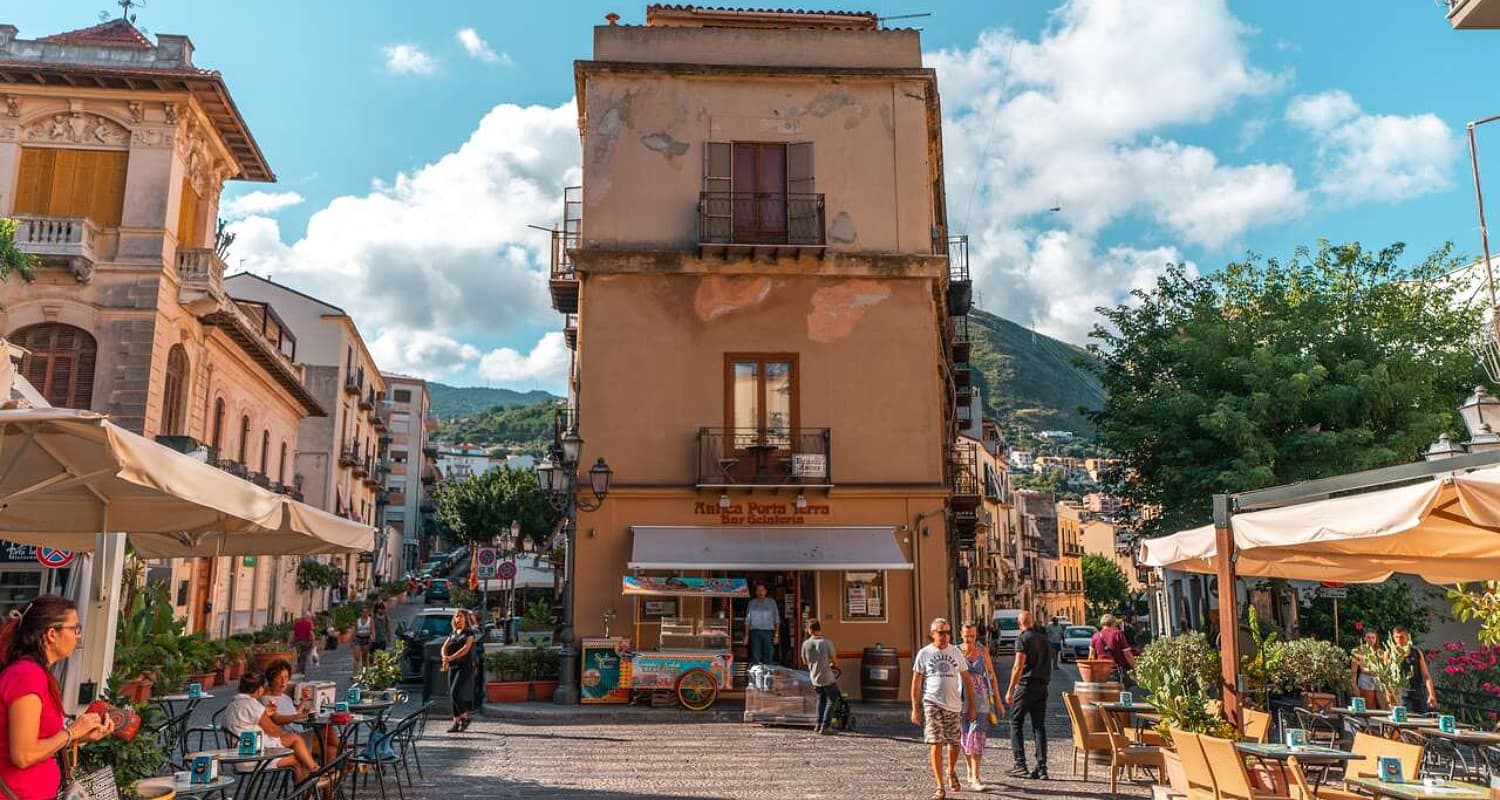
Parking and Accessibility. When visiting Cefalù, parking can be challenging, especially in the historic center. It’s best to seek out free parking places on the outskirts and then walk into town. The short walk to the beach or main attractions is well worth it, as Cefalù offers one of the best seaside experiences in Sicily.
2. Osterio Magno
Historical Significance. Osterio Magno, located in the heart of Cefalù’s historic center, is believed to have been the first residence of King Roger II, the Norman ruler who commissioned the construction of Cefalù Cathedral. This fortified palace showcases a blend of architectural styles, including Norman, Byzantine, Roman, and Greek influences, reflecting the diverse cultural heritage of Sicily.
Architectural Features:
- Ancient Cistern: Evidence of its Roman origins.
- Domus Regia: The rectangular tower remains a testament to its former grandeur.
- Cultural Blend: A unique fusion of architectural styles from different periods.
Visiting Details:
- Opening Hours: April to September, with varying hours for different months.
- Ticket Price: €2.
- Accessibility: Not wheelchair accessible.
Day Trip from Palermo or Taormina. Osterio Magno is a great stop on a day trip from Palermo or Taormina, offering a glimpse into Sicily’s greatest artistic treasures. Visitors can combine a visit here with other attractions in Cefalù, such as the cathedral and La Rocca di Cefalu, for a comprehensive experience of the town’s history and culture. This makes Cefalù an ideal destination for those seeking out a mix of history, art, and stunning seaside views along the northern coast of Sicily.
Day Trips and Outdoor Activities
1. Madonie Regional Natural Park
Nature’s Paradise. The Madonie Regional Natural Park is a haven for nature lovers, covering over 40,000 hectares in central-northern Sicily. It’s renowned for its diverse flora and fauna, featuring beech, elm, holm-oak, and cork oak trees, along with rare endemic species like the Abeis Nebrodensis. The park’s highest point, Pizzo Carbonara, offers breathtaking views and is home to the picturesque ski resort of Piano Battaglia.
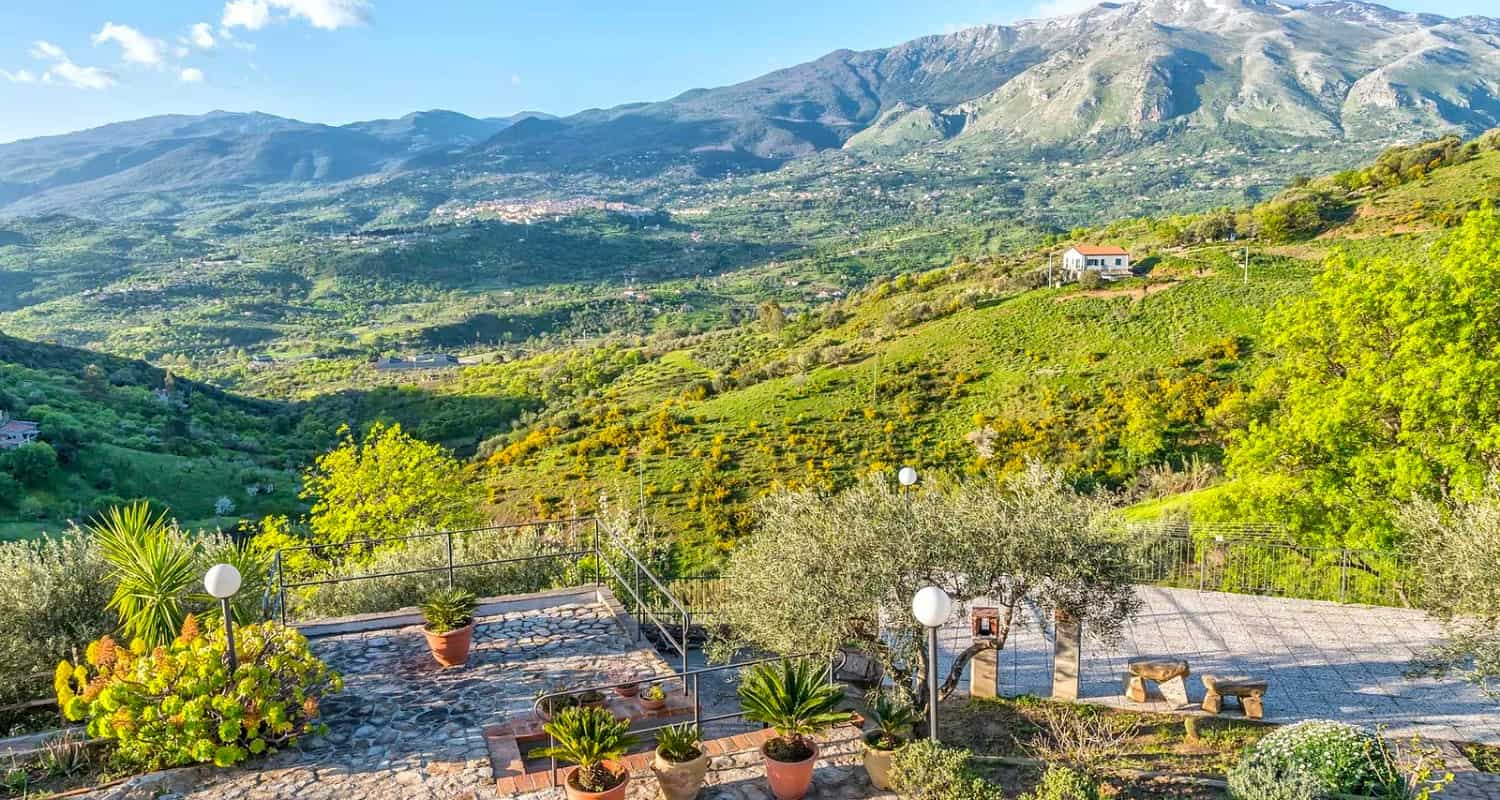
Exploring the Park:
- Hiking Trails: Discover hidden gems like the natural amphitheater of Mount Quacella and the giant holly trees of Piano Pomo.
- Scenic Landscapes: Enjoy panoramic views from the top of Pizzo Carbonara and explore the charming villages within the park.
- Cultural Experiences: Visit towns like Castelbuono and Polizzi Generosa for a taste of local cuisine and festivals.
Local Products:
- Manna: A natural sweetener harvested from ash trees.
- Provola Cheese: A local specialty often served grilled or smoked.
- Apricots from Scillato: Known for their sweetness and flavor.
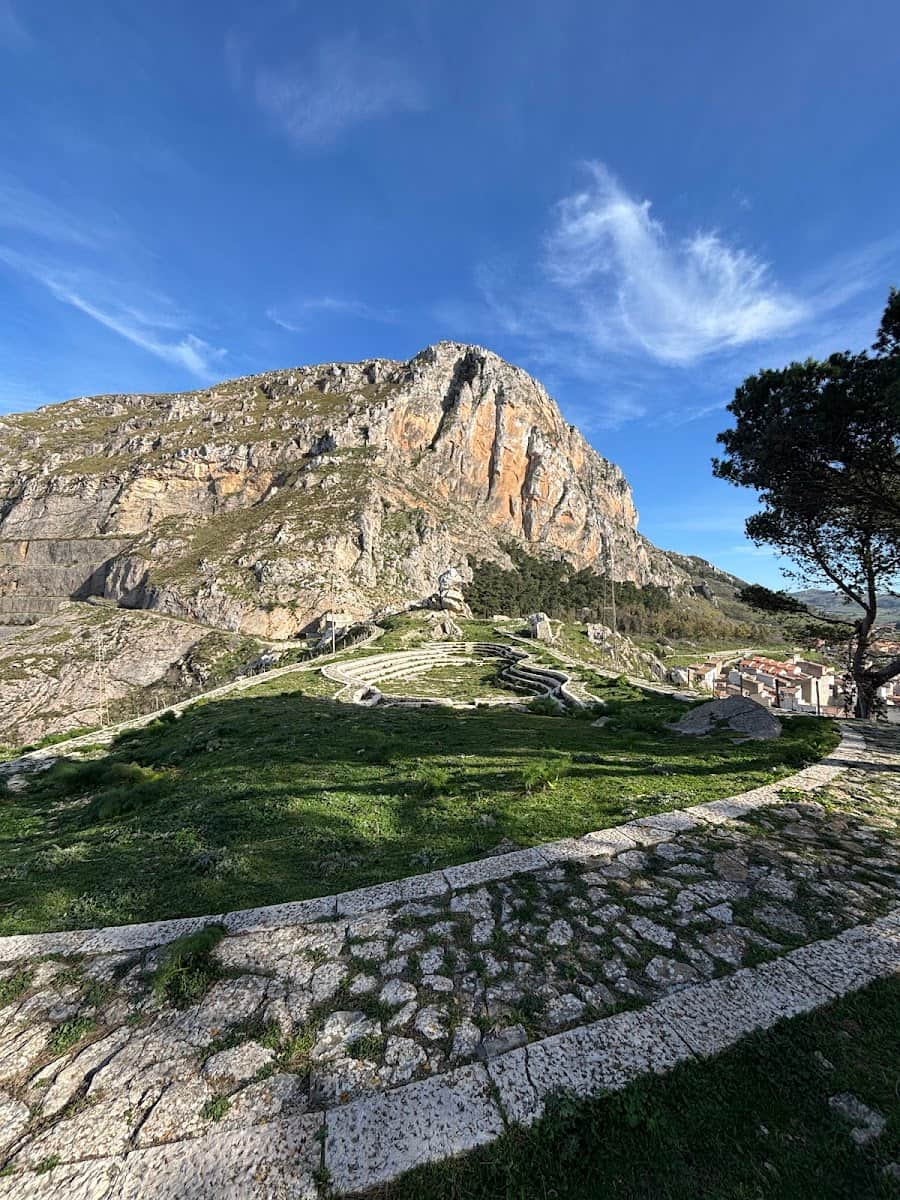
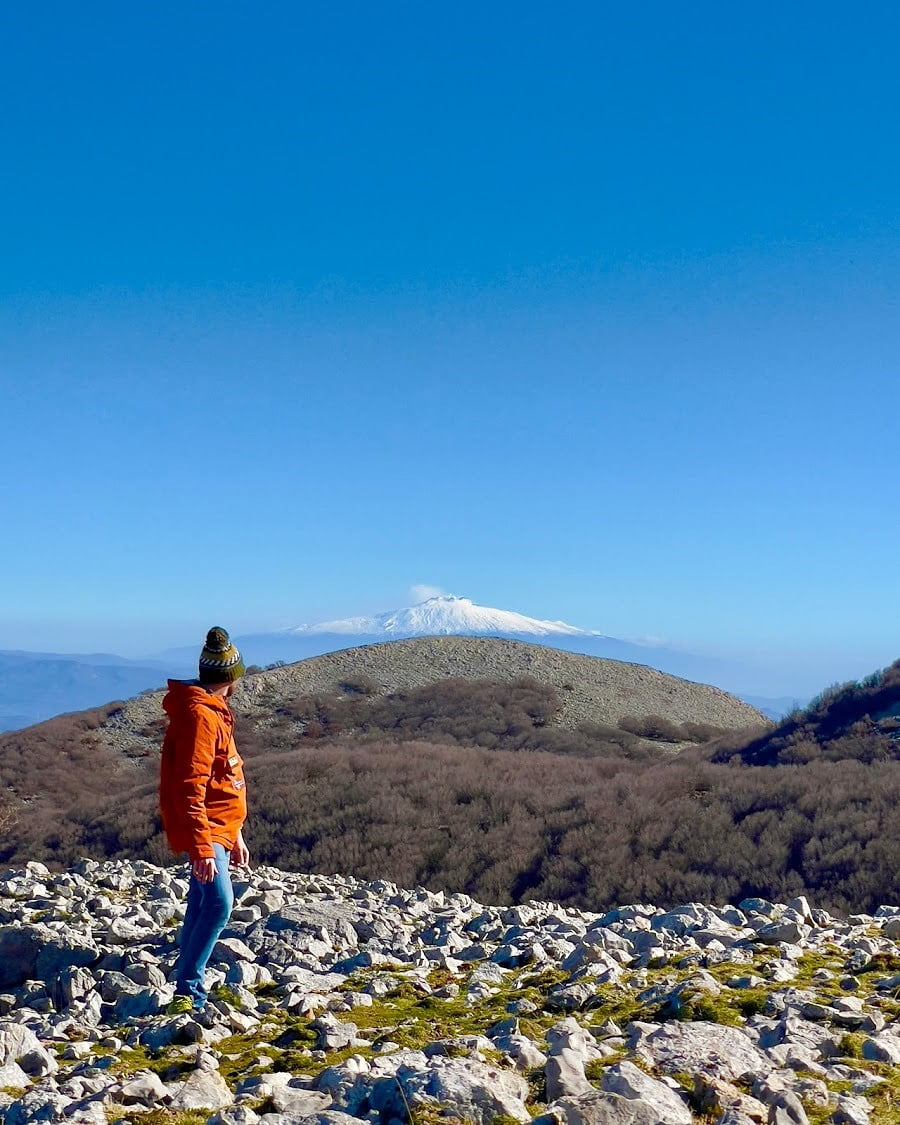
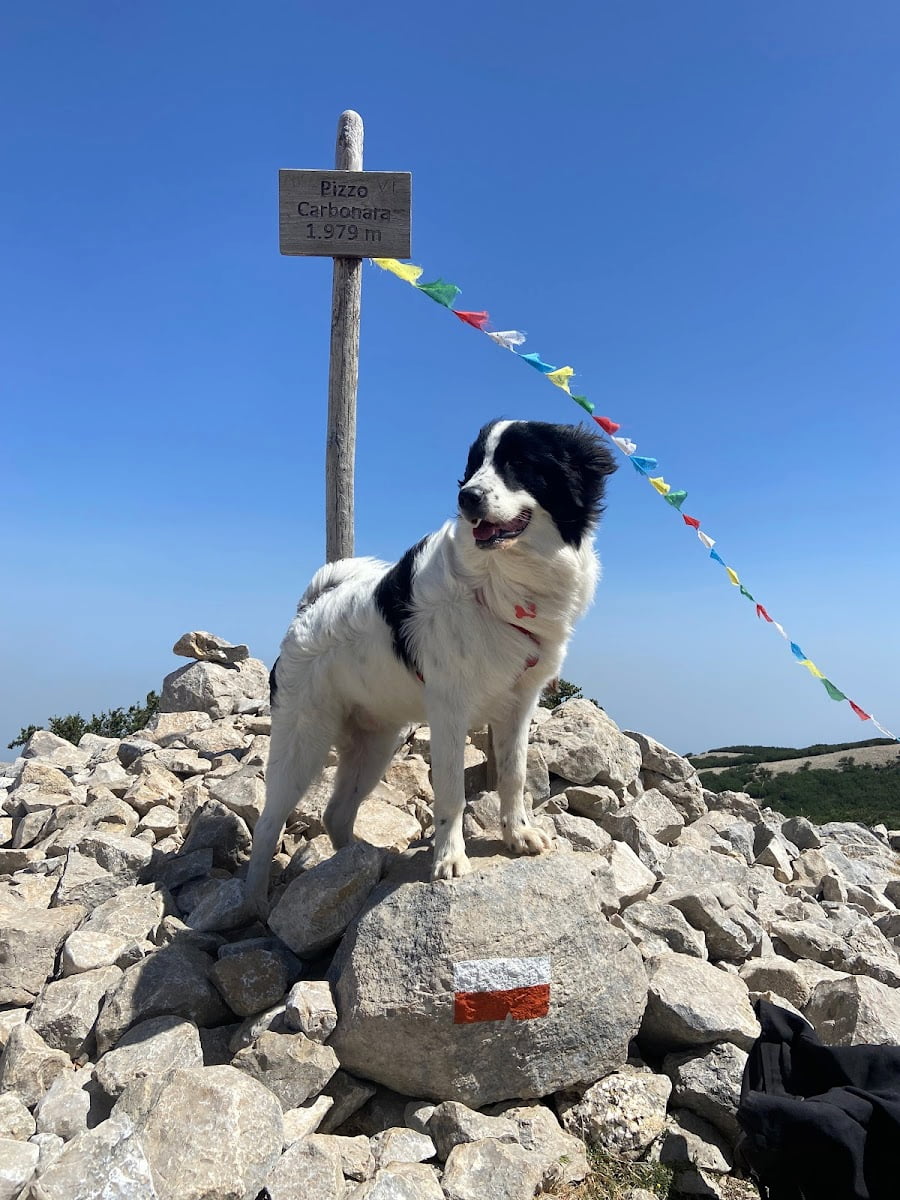
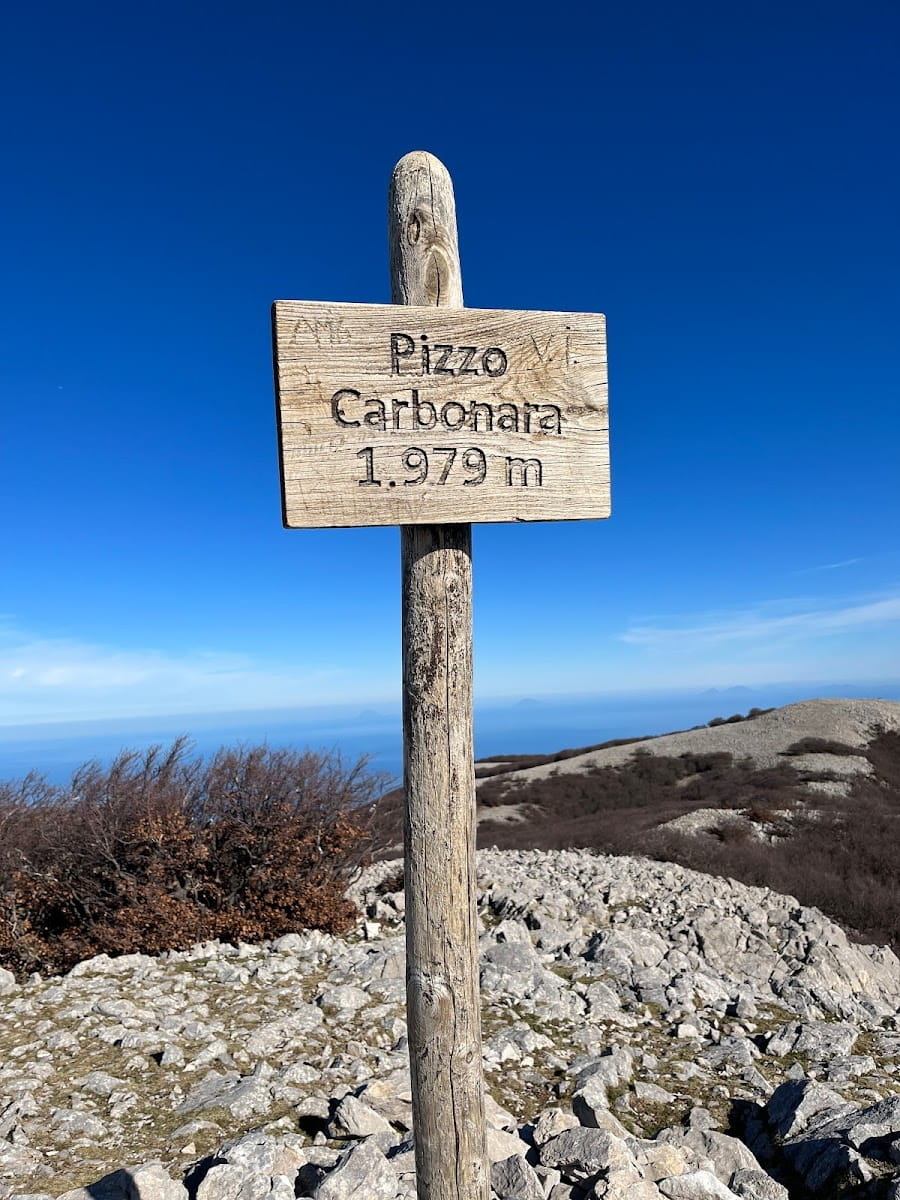
Conservation Efforts. The park is actively involved in conservation projects to protect its unique biodiversity. Visitors can support these efforts by choosing eco-friendly accommodations and participating in guided tours that promote sustainable tourism. This not only helps preserve the environment but also supports local communities by promoting responsible travel practices.
⭐ Best Activities
-
Madonie Natural Park: Giant Holly Trees Hike – Explore the stunning landscapes of Madonie Natural Park on this guided hike to the ancient giant holly trees. Perfect for nature lovers and outdoor enthusiasts seeking a unique adventure in Castelbuono.
2. Water Sports and Beach Activities
Coastal Adventures. Cefalù’s coastline offers a variety of water sports and activities that cater to all interests. For thrill-seekers, Salinelle Beach is ideal for windsurfing and kitesurfing due to its excellent wind conditions. Paddleboarding is a great way to explore the coastline at a leisurely pace, while snorkeling in clear waters like those at Caldura Beach reveals a vibrant marine life.
Beach Activities:
- Beach Volleyball: Many beaches have nets set up for friendly games.
- Yoga by the Sea: Some beach clubs offer morning yoga sessions.
- Boat Tours: Enjoy sunset cruises or fishing trips with local fishermen for a unique experience.
Water Sports Options:
- Snorkeling Trips: Explore the underwater world with guided tours.
- Jet Skiing: Available for those seeking high-speed excitement.
- Paragliding: Experience the thrill of flying over Cefalù’s stunning coastline.
Safety and Equipment. Before engaging in water sports, ensure you rent equipment from reputable providers that offer safety briefings and proper gear. Many local operators also provide lessons for beginners, making it easy for visitors to try new activities safely. Additionally, be mindful of marine life and respect protected areas to preserve Cefalù’s natural beauty.
⭐ Best Tours
- 3-Hour Boat Excursion in Cefalù – Enjoy a scenic boat tour exploring Cefalù’s coastline and marine life.
- Boat Trip to Cefalù – Take a boat trip to Cefalù and experience its stunning beaches and historic sites.
- Cruise and Explore: Discover Cefalù's Coastline on a Catamaran – Cruise along Cefalù’s picturesque coastline on a luxurious catamaran, exploring hidden coves and enjoying the sea views.
- 3-Hour Excursion with Two Stops for Bath and Aperitif in Cefalù – Enjoy a relaxing boat excursion with swimming stops and an aperitif in Cefalù.
- Tandem Paragliding Experience – Experience the thrill of flying over Cefalù’s stunning coastline with a tandem paragliding adventure.
❓ FAQ about Trips to Cefalù
What are the top things to do in Cefalù?
The top things to do in Cefalù include visiting the Norman Cathedral with its Byzantine mosaics, climbing La Rocca for panoramic views, and relaxing on the golden sandy beach along the lungomare. Cefalù has plenty of attractions that make it one of the most popular destinations in Sicily, from ancient ruins to delicious Sicilian cuisine.
How difficult is parking in Cefalù?
Parking in Cefalù can be a nightmare, especially during summer months when the city center is extremely crowded. Your best option is seeking out a free parking spot on the sides of the road outside the historic center, then enjoying the short walk to see the town.
What makes La Rocca di Cefalù worth visiting?
The spot offers a great view of the entire northern coast of Sicily and the stunning aquamarine sea, with ruins of a 5th century BC megalithic temple and the Temple of Diana at the top. The hike takes about 30-45 minutes and is best done first thing in the morning to avoid the heat while exploring one of the most distinctive landmarks overlooking the sea.
Where can I find the best Sicilian gelato?
The best Sicilian gelato can be found at several artisanal shops in the center of Cefalù, particularly along Corso Ruggero where many restaurants and cafés serve authentic flavors like pistachio from Bronte. For a truly memorable experience, enjoy your gelato while strolling along the beach promenade as the sun sets over the Mediterranean.
Is Cefalù suitable as a day trip destination?
Cefalù is perfect as a day trip destination from Palermo (only 45 minutes by train) or Taormina (about 2 hours by car), though many visitors want to stay longer once they experience its charm. The city of Cefalù remains one of Sicily’s most enchanting coastal towns, offering enough things to see and do to fill at least a full day of exploration.
What is the Temple of Diana in Cefalù?
The Temple of Diana is an ancient megalithic ruin located near the summit of La Rocca, dating back to the 9th century BC and believed to be dedicated to the goddess Diana. This prehistoric structure features massive stone walls and a cistern, making it one of the most fascinating archaeological sites to visit during your Sicily trip.
How can I reach Cefalù from major Sicilian cities?
You can reach Cefalù easily by train from Palermo (45 minutes) or Messina (2 hours), with the Cefalù train station conveniently located just a 10-minute walk from the historic center. For those visiting Sicily by car, Cefalù is accessible via the A20 highway that runs along the northern coast, making it an ideal stop on a Sicily road trip between Palermo and Taormina.
What are the best beaches in Cefalù?
The main Cefalù beach is one of the best beaches in Sicily, with its golden sand, crystal clear waters, and beautiful setting beneath La Rocca. There are both free beach areas and lido sections where you can rent an umbrella for the day, with the western stretch being less crowded and offering balconies overlooking the sea for spectacular photos.
What artwork should I see in the Mandralisca Museum?
The Mandralisca Museum houses one of Sicily’s greatest artistic treasures, the famous ‘Portrait of an Unknown Man’ by Antonello da Messina, considered a Renaissance masterpiece. The museum also displays the “Tears of a Nymph” vase and other archaeological finds that can be viewed daily as the museum is open every day except Mondays.
What should I know about Cefalù’s history?
Cefalù was originally a fishing village founded by the Greeks, later developed by the Romans, and reached its peak under Norman rule when the magnificent cathedral was built. The best way to experience this history is by wandering through the medieval streets of the center of Cefalù, where ancient buildings, narrow alleyways, and bars and restaurants housed in historic structures tell the story of this seaside town’s rich past.
